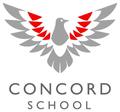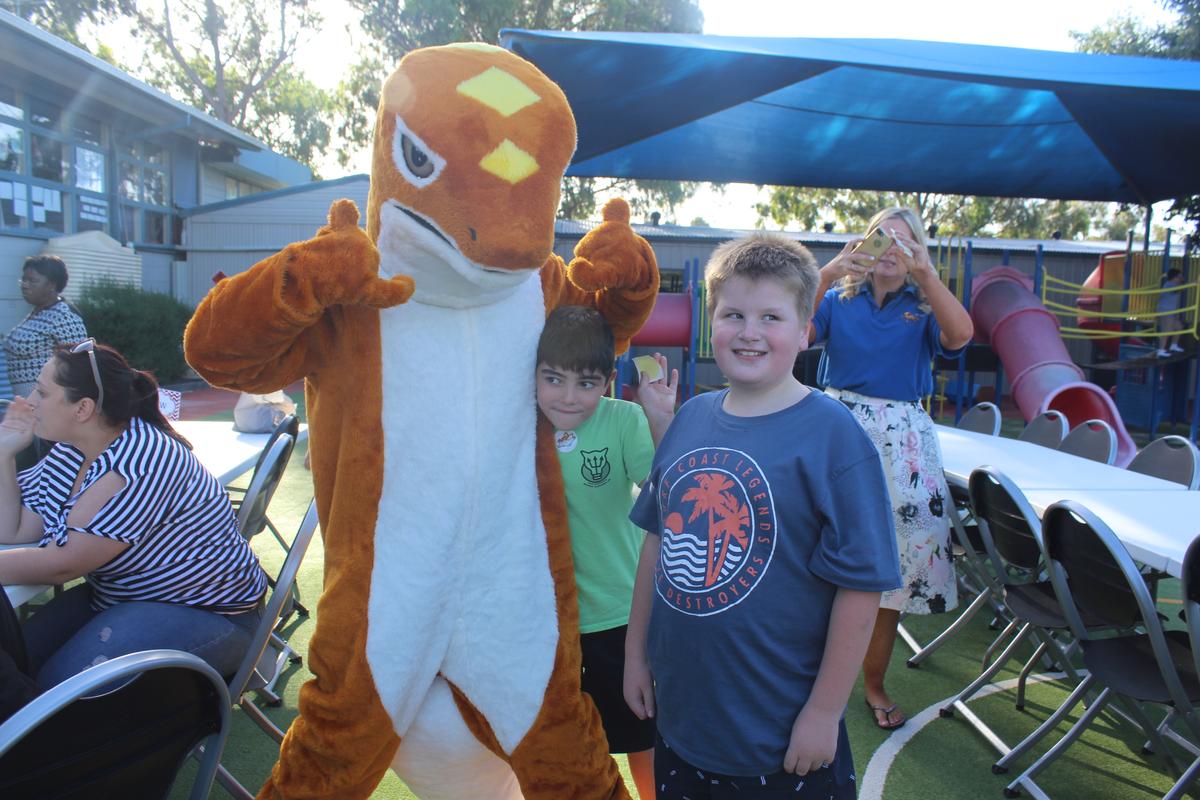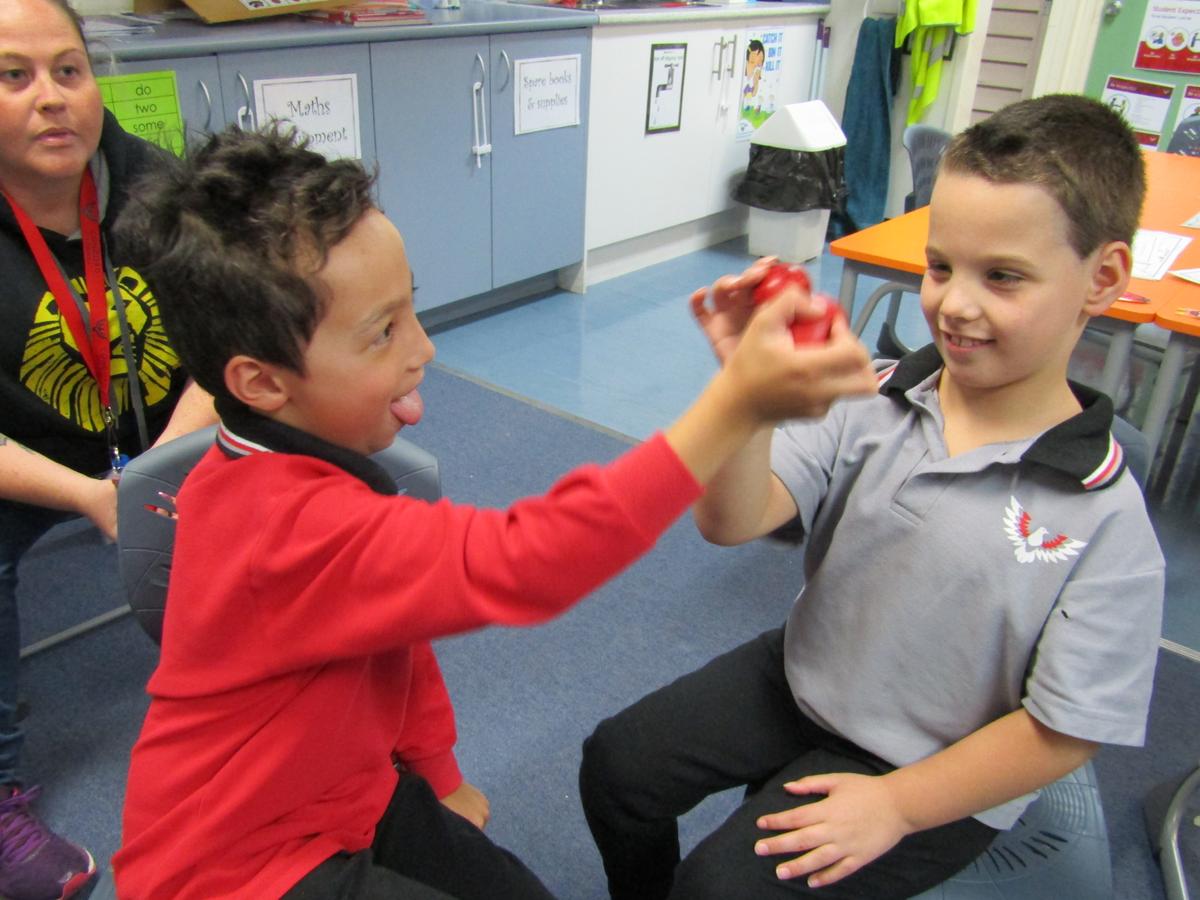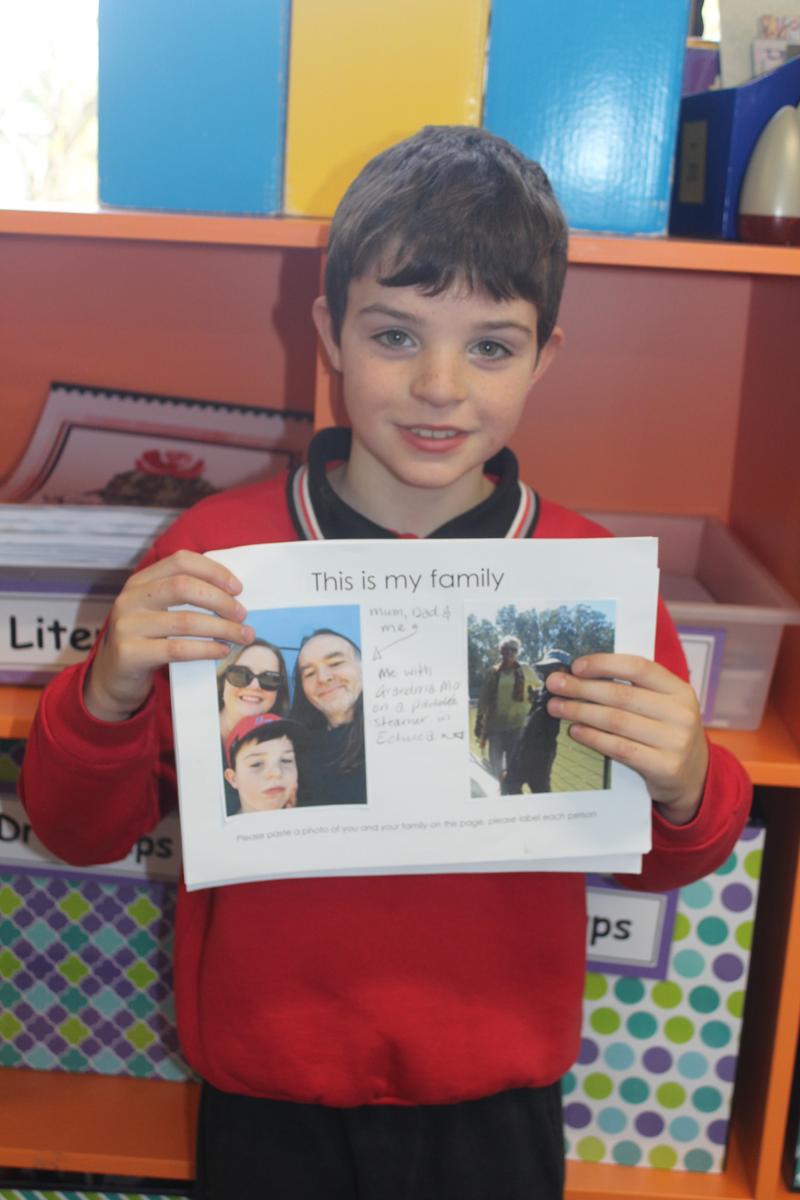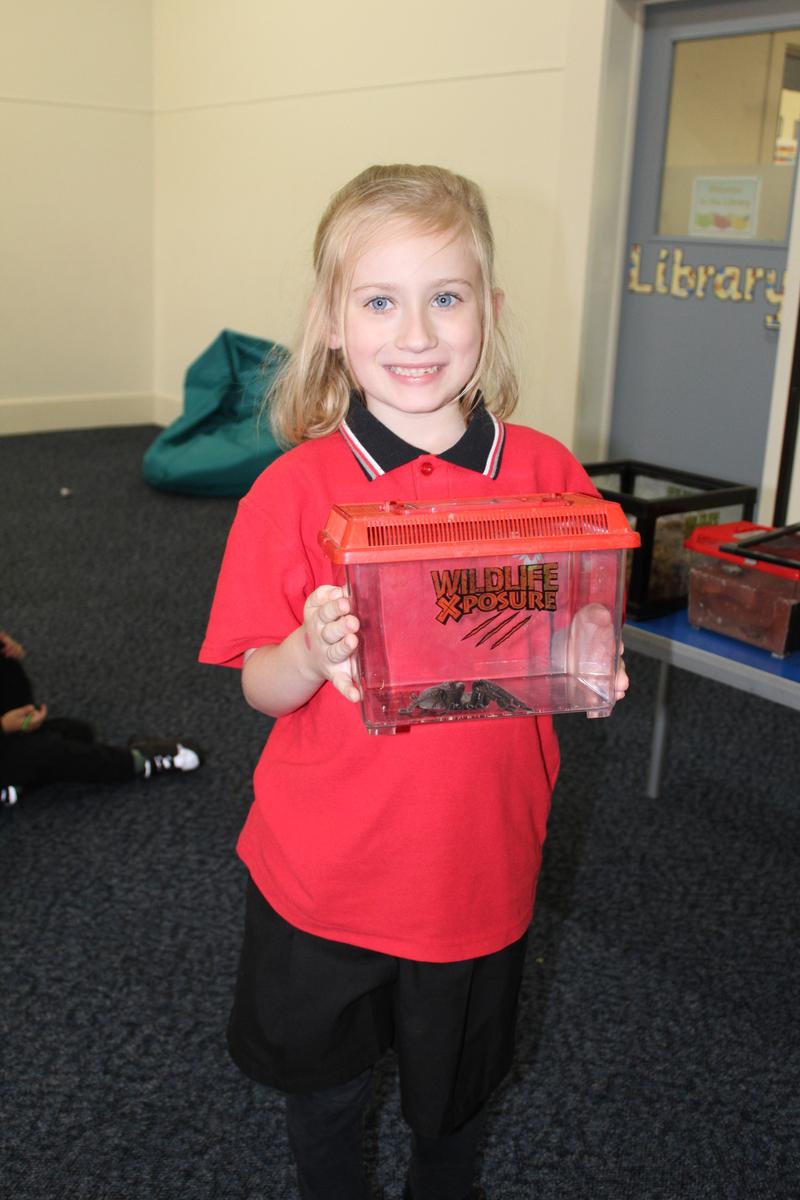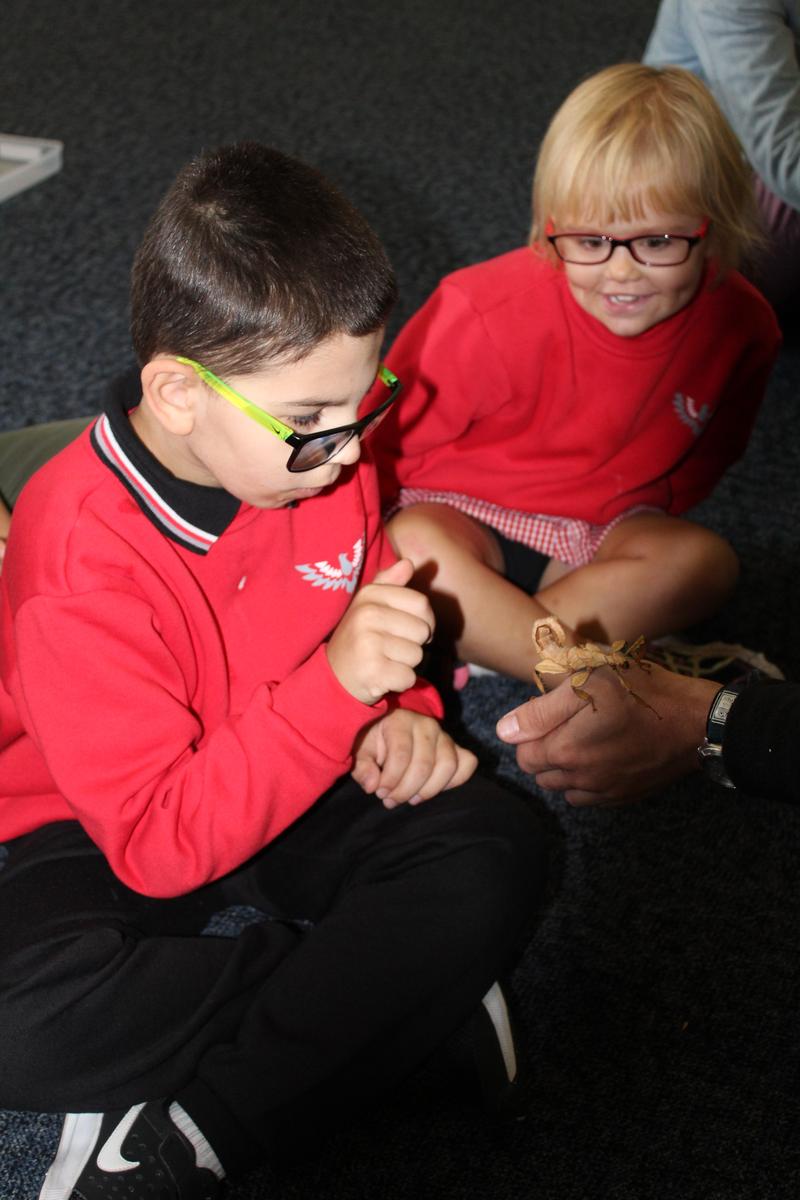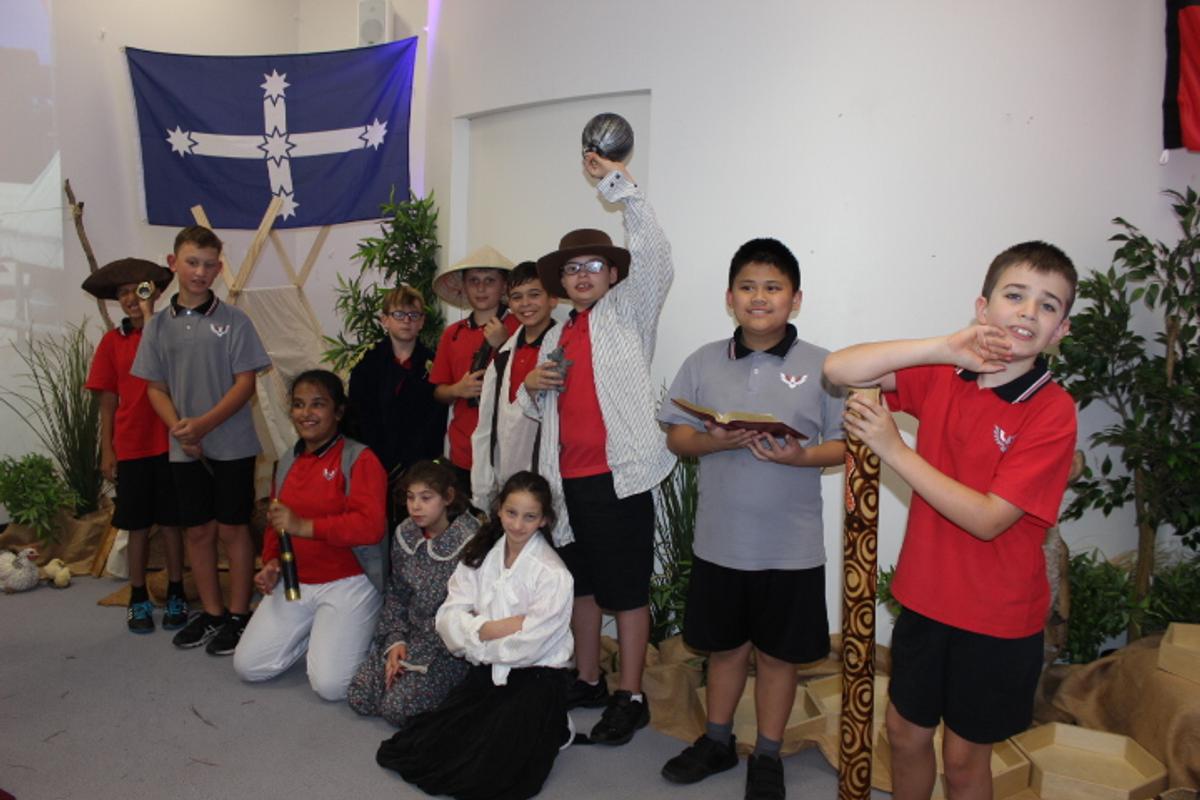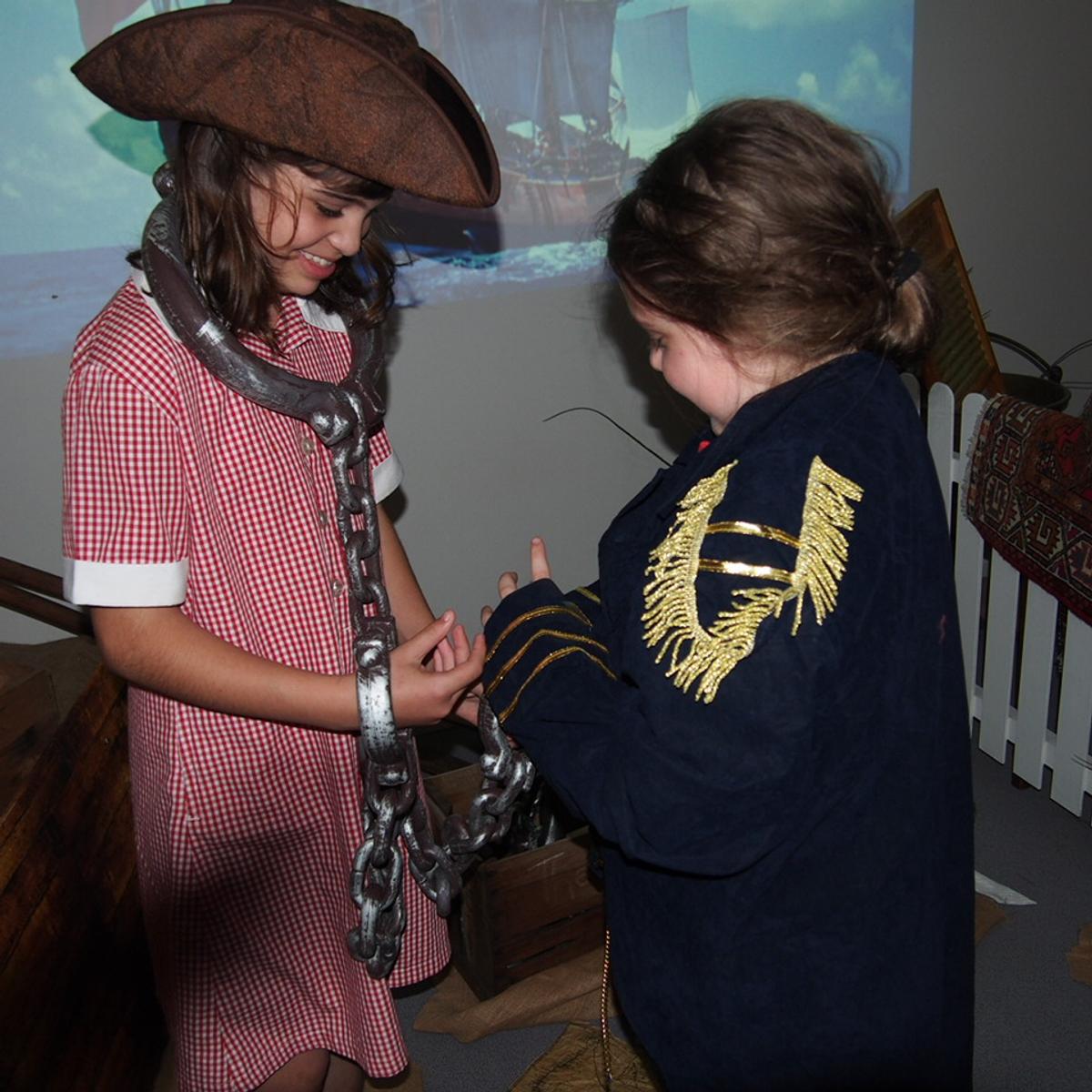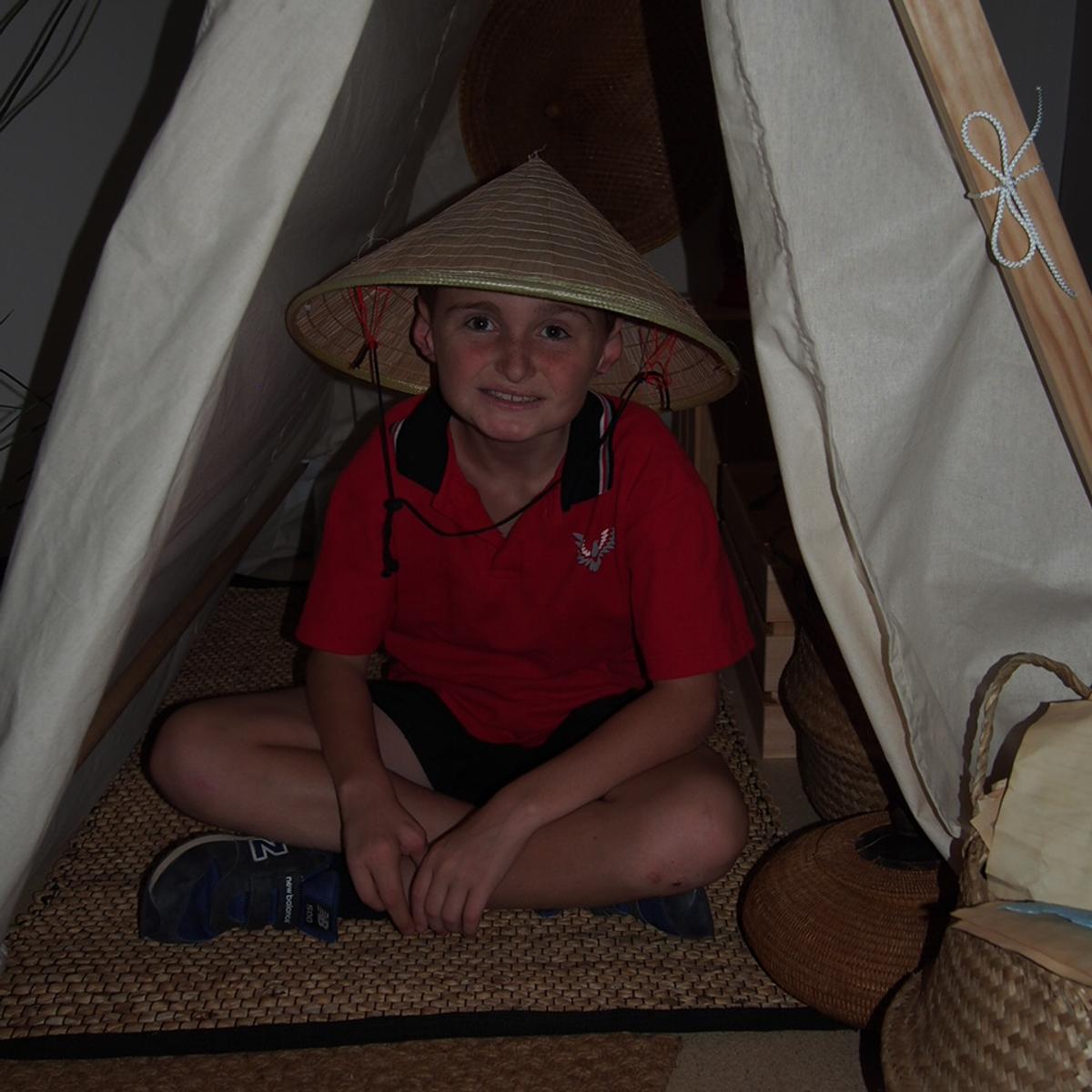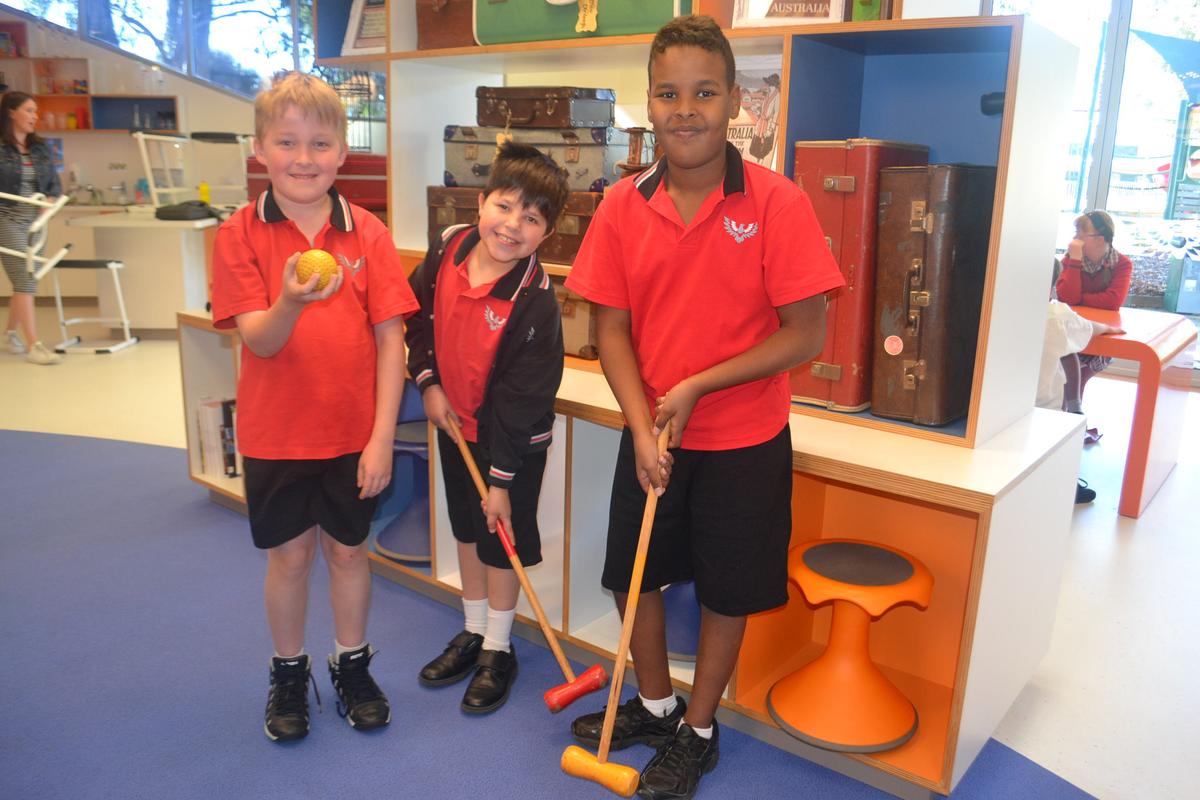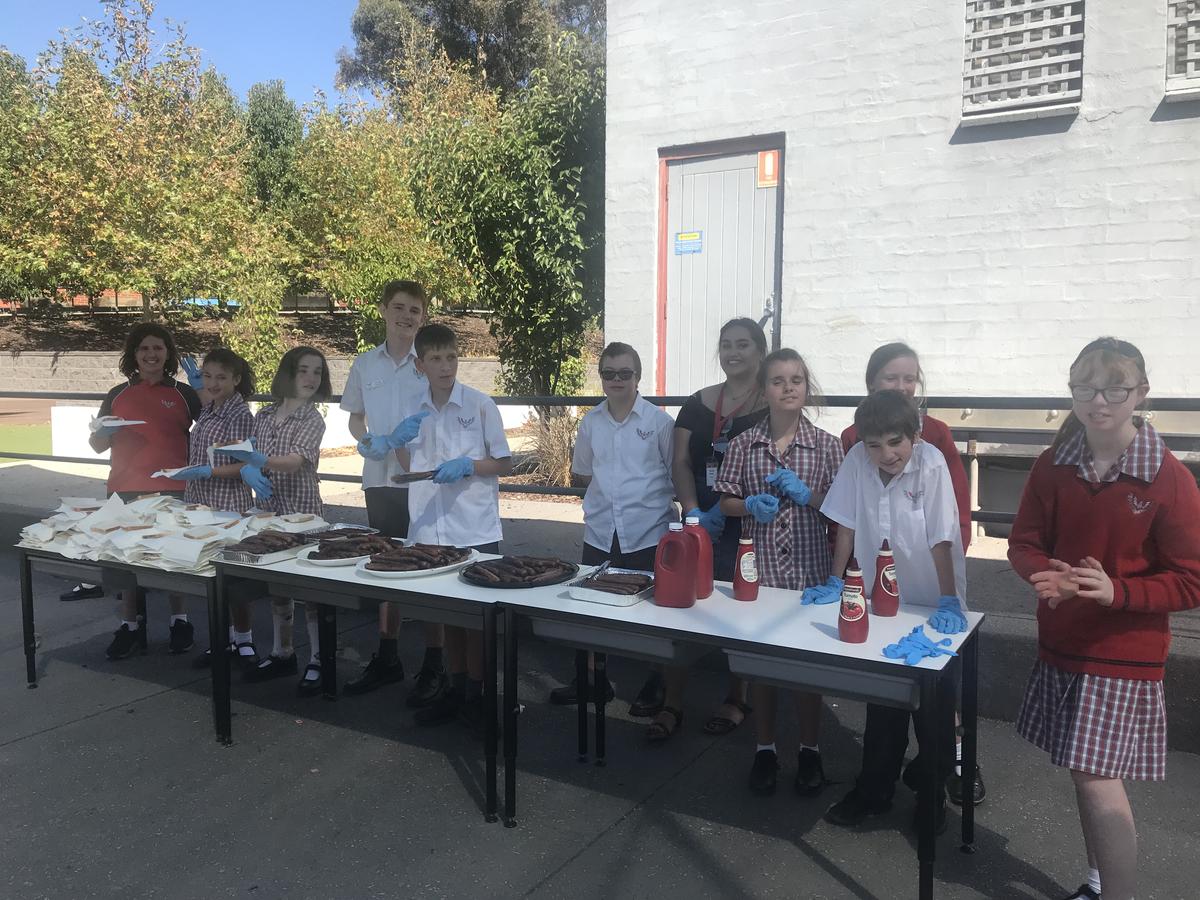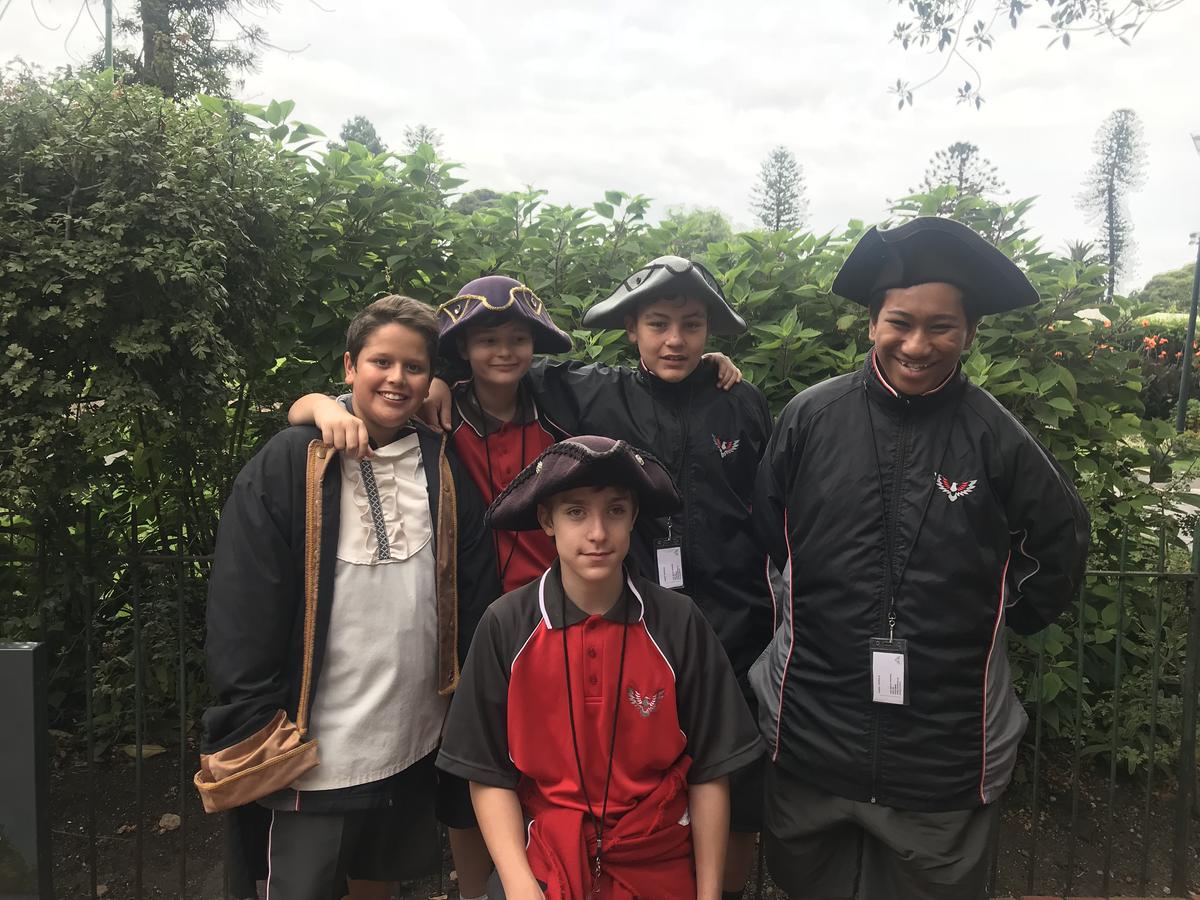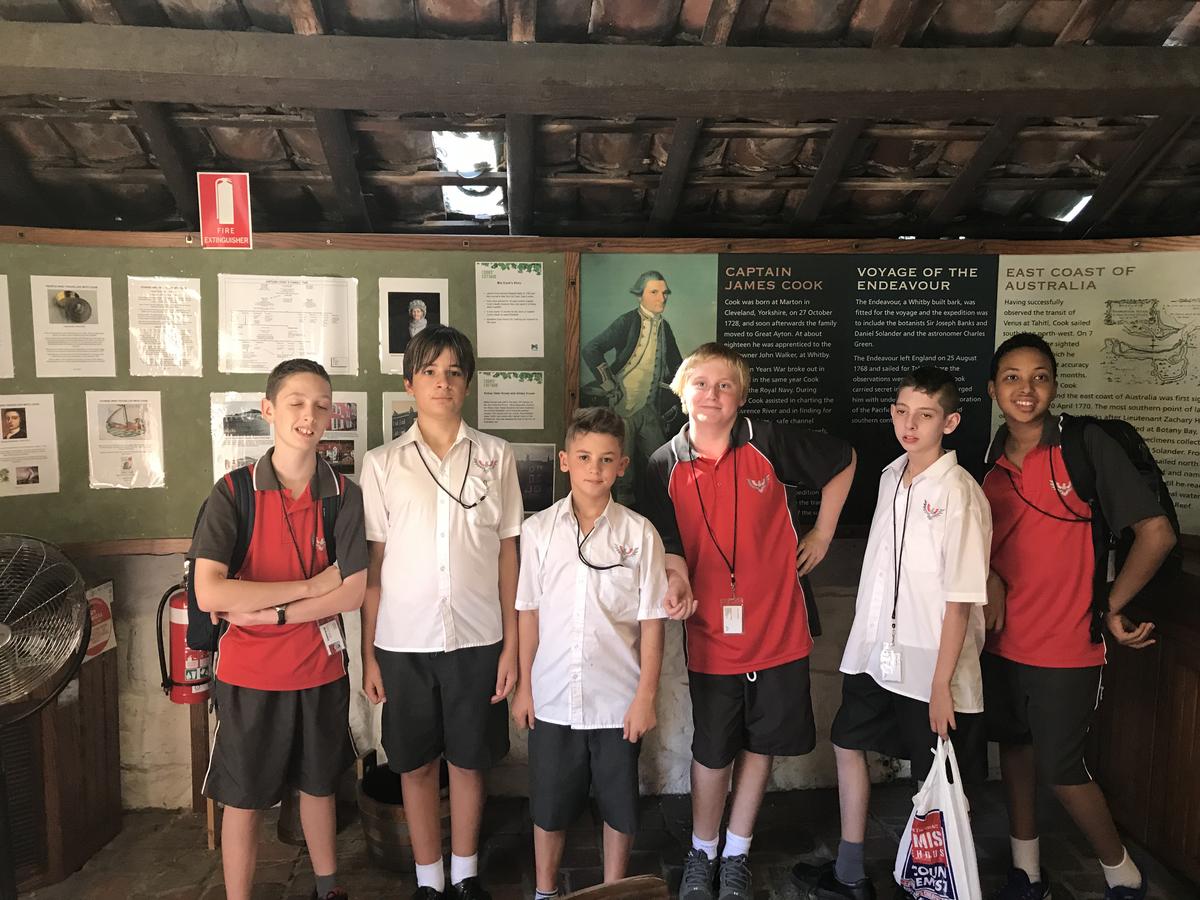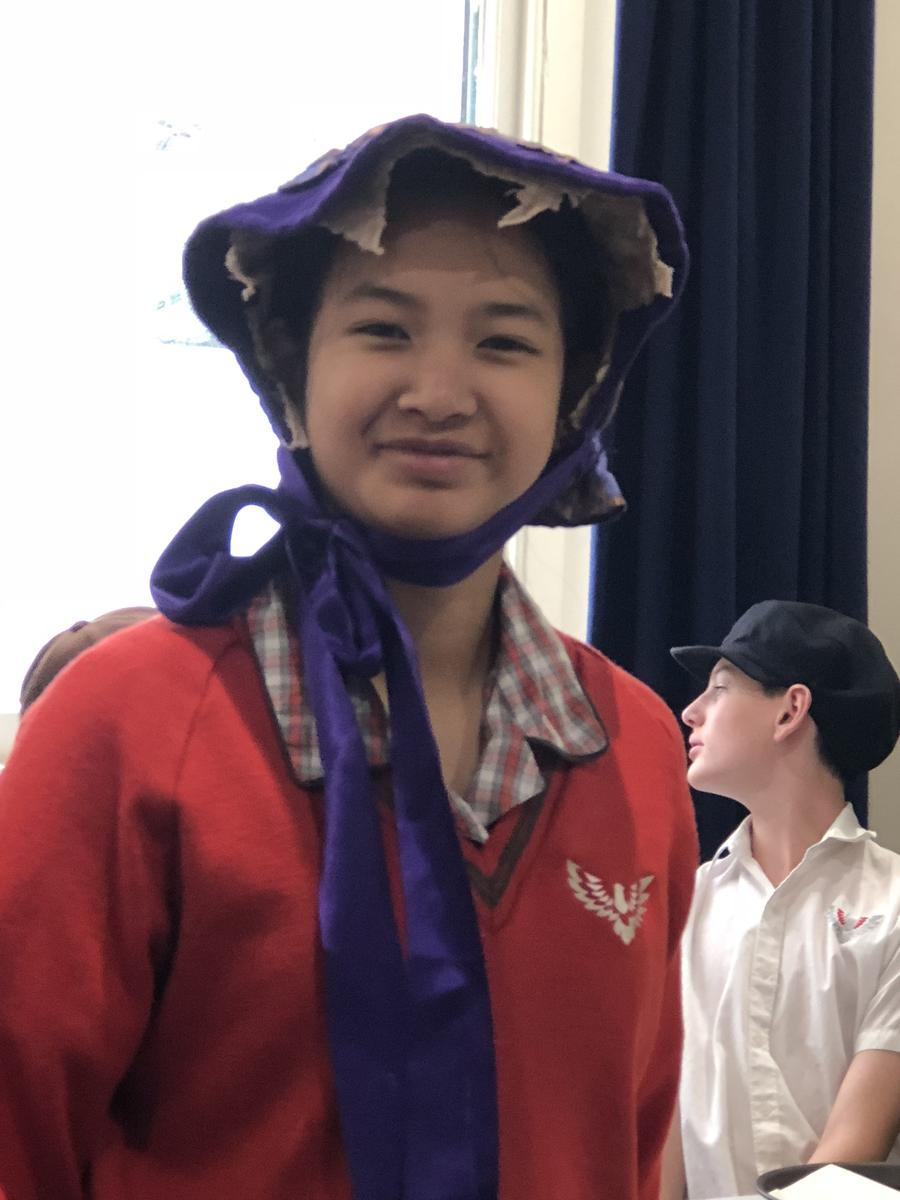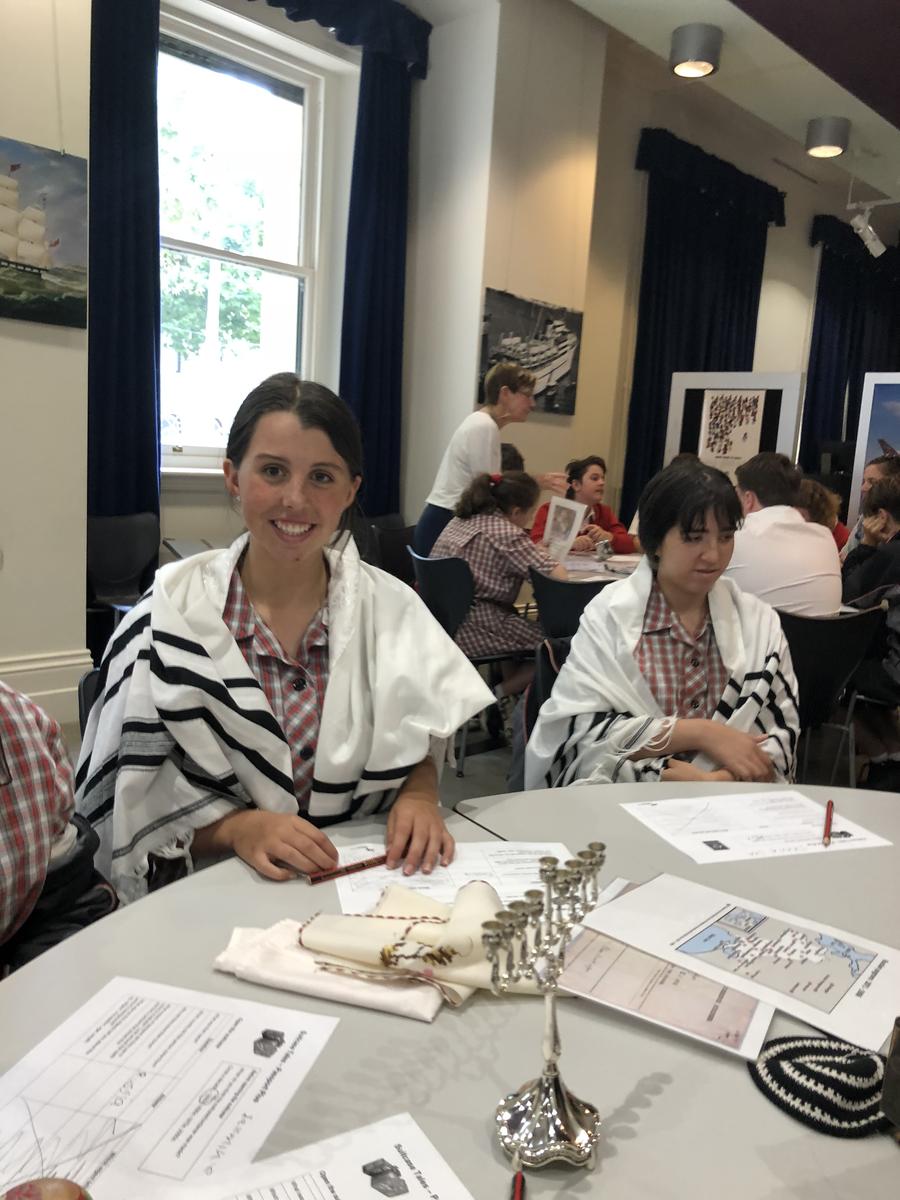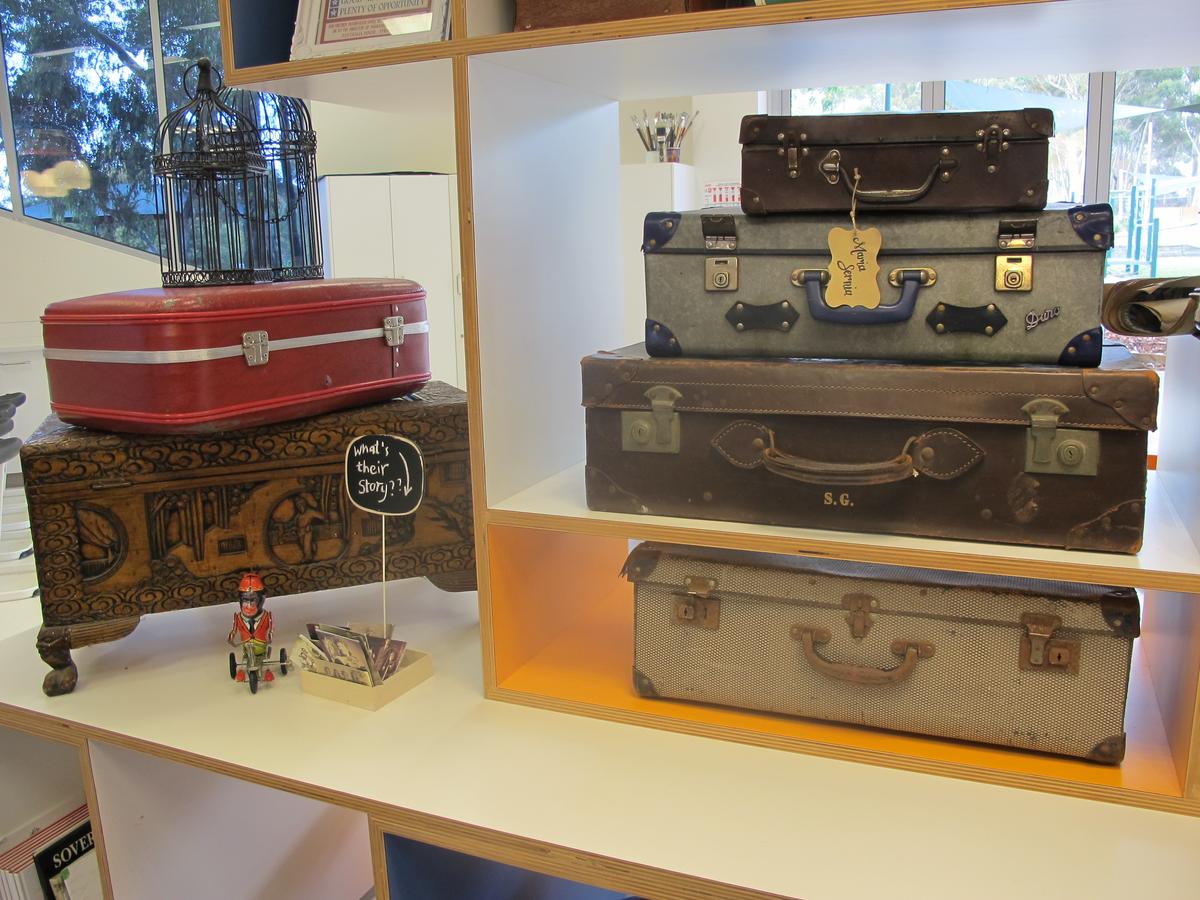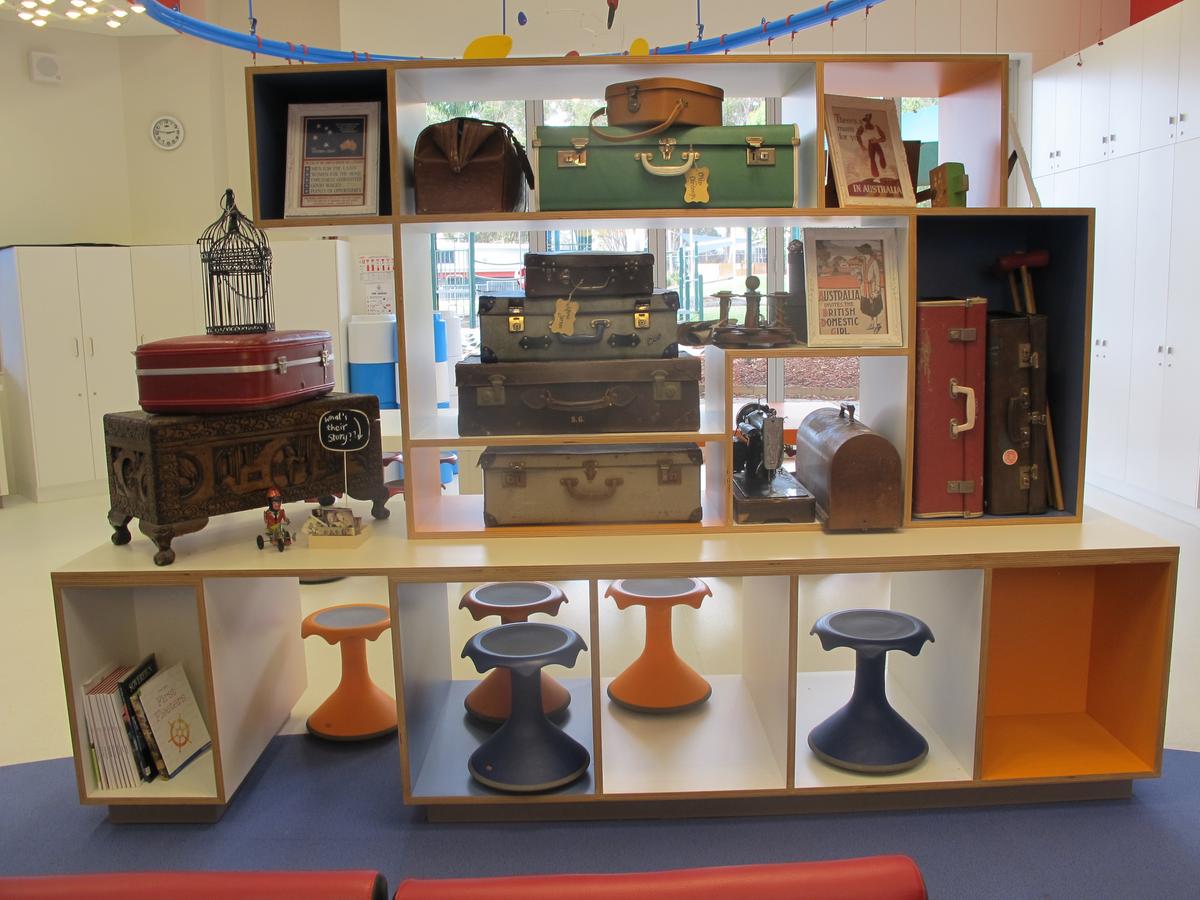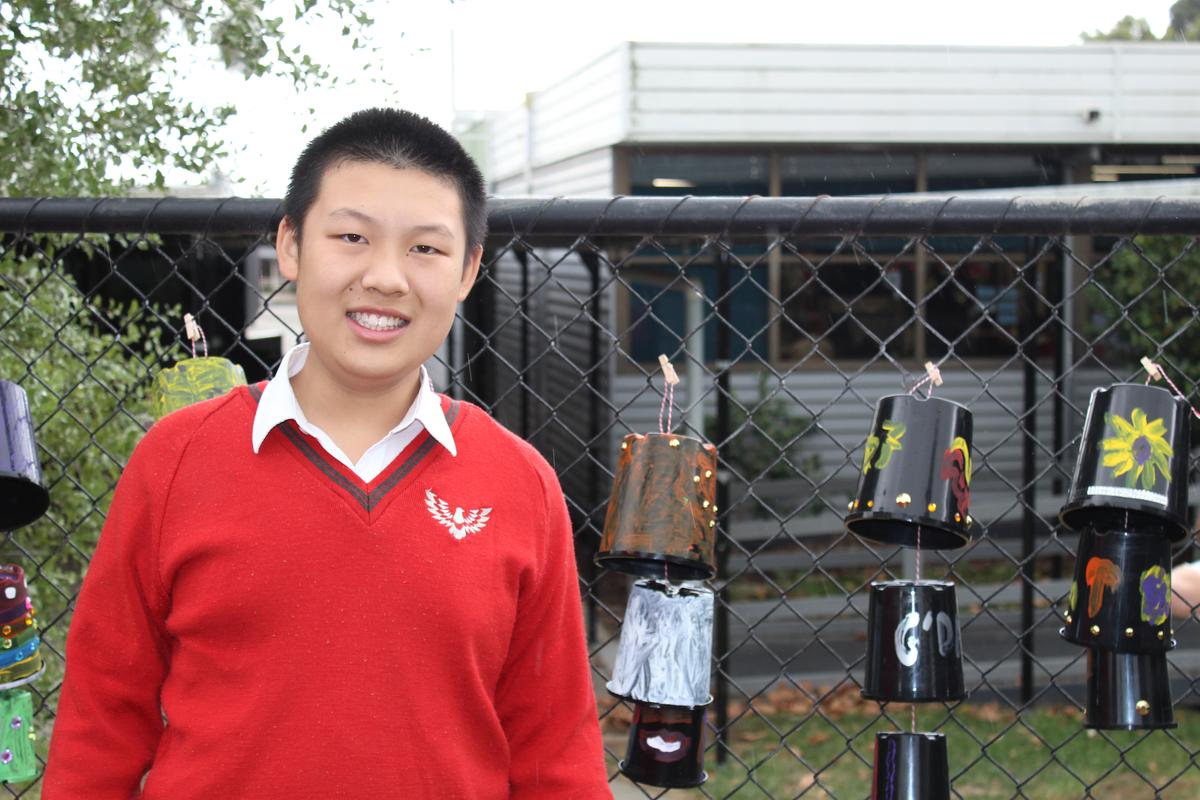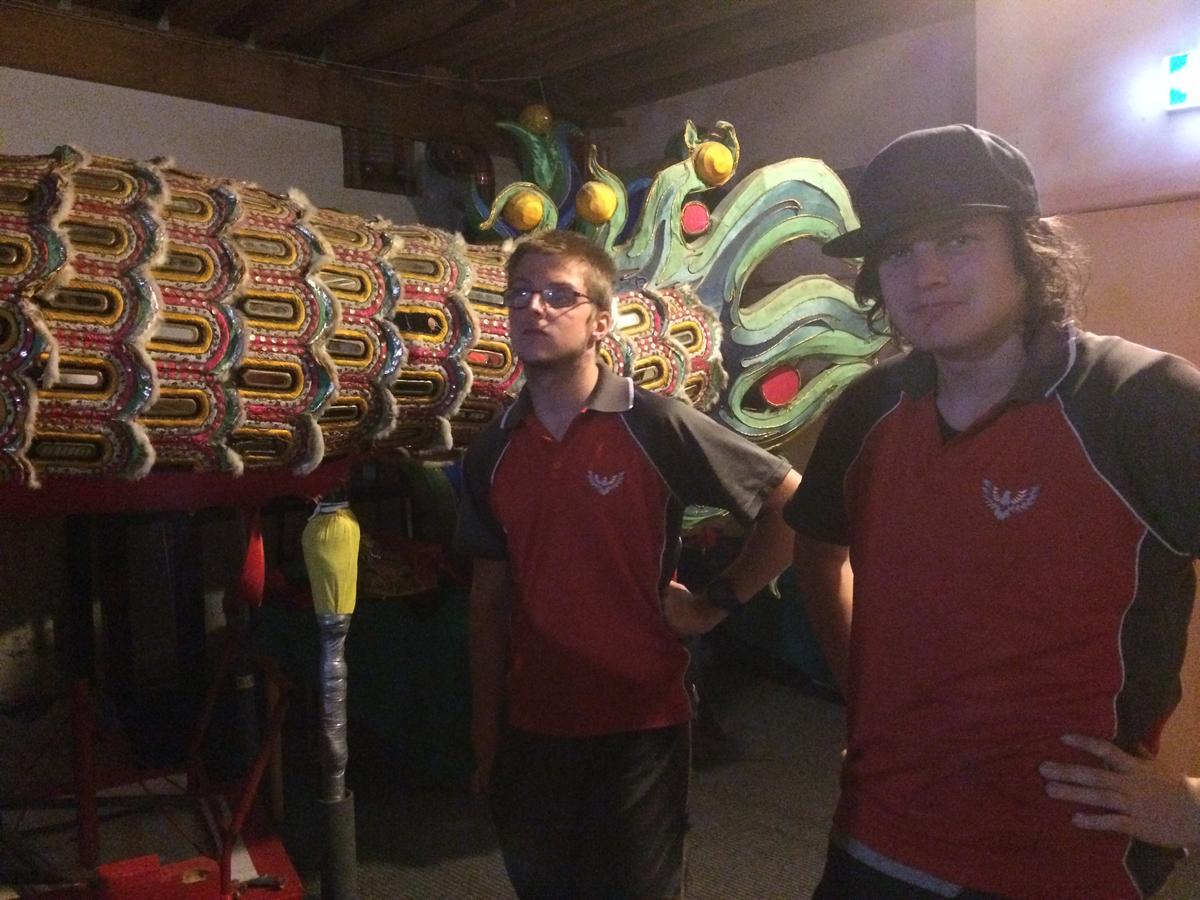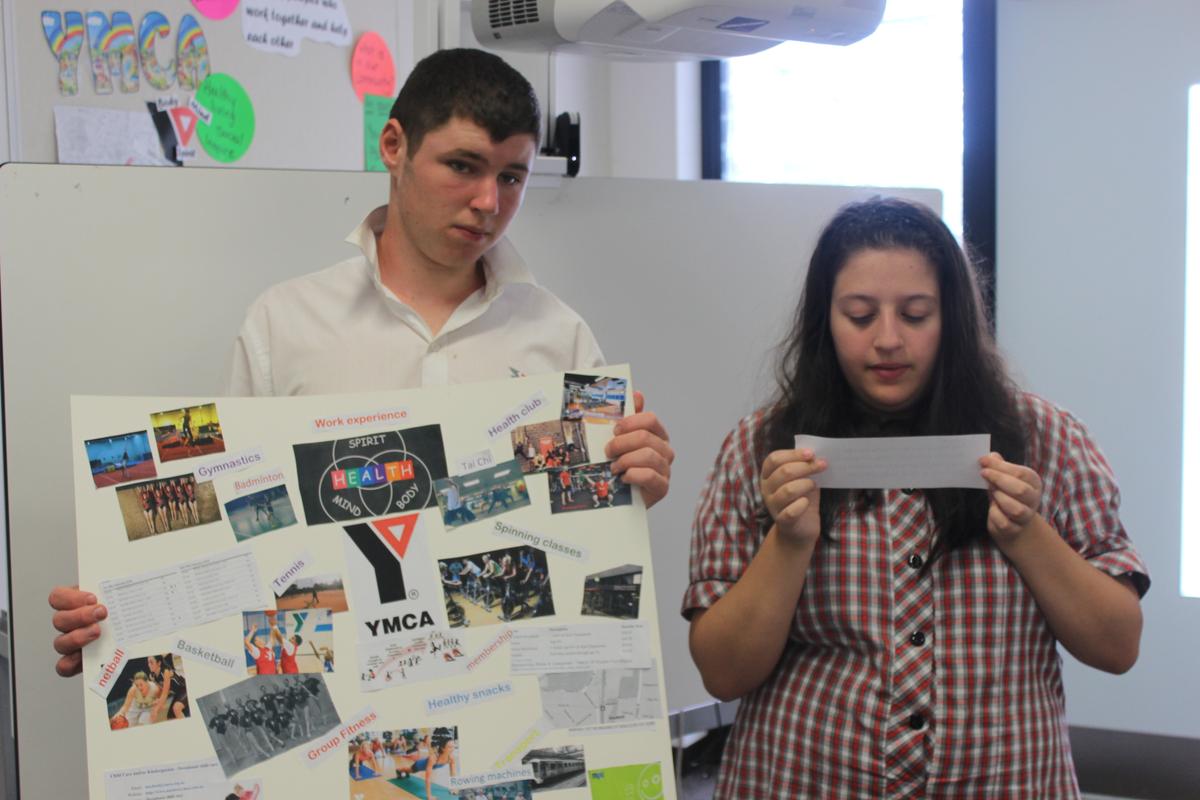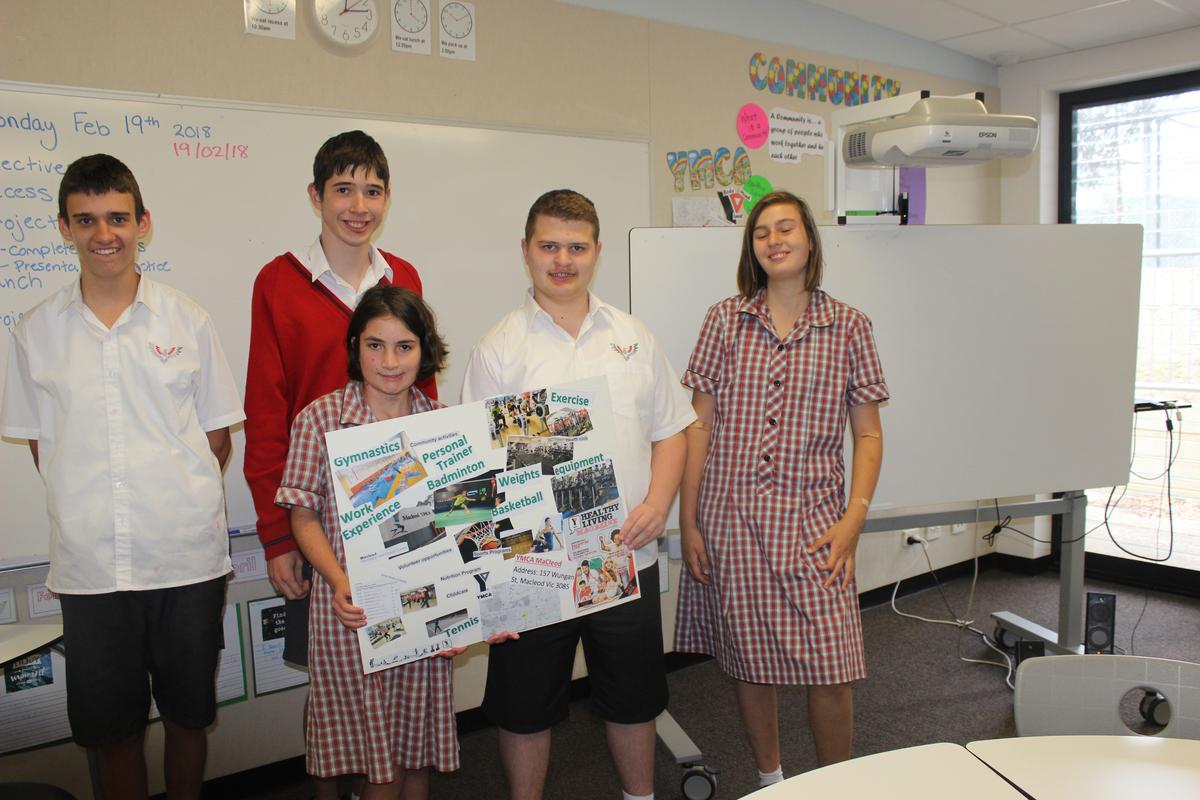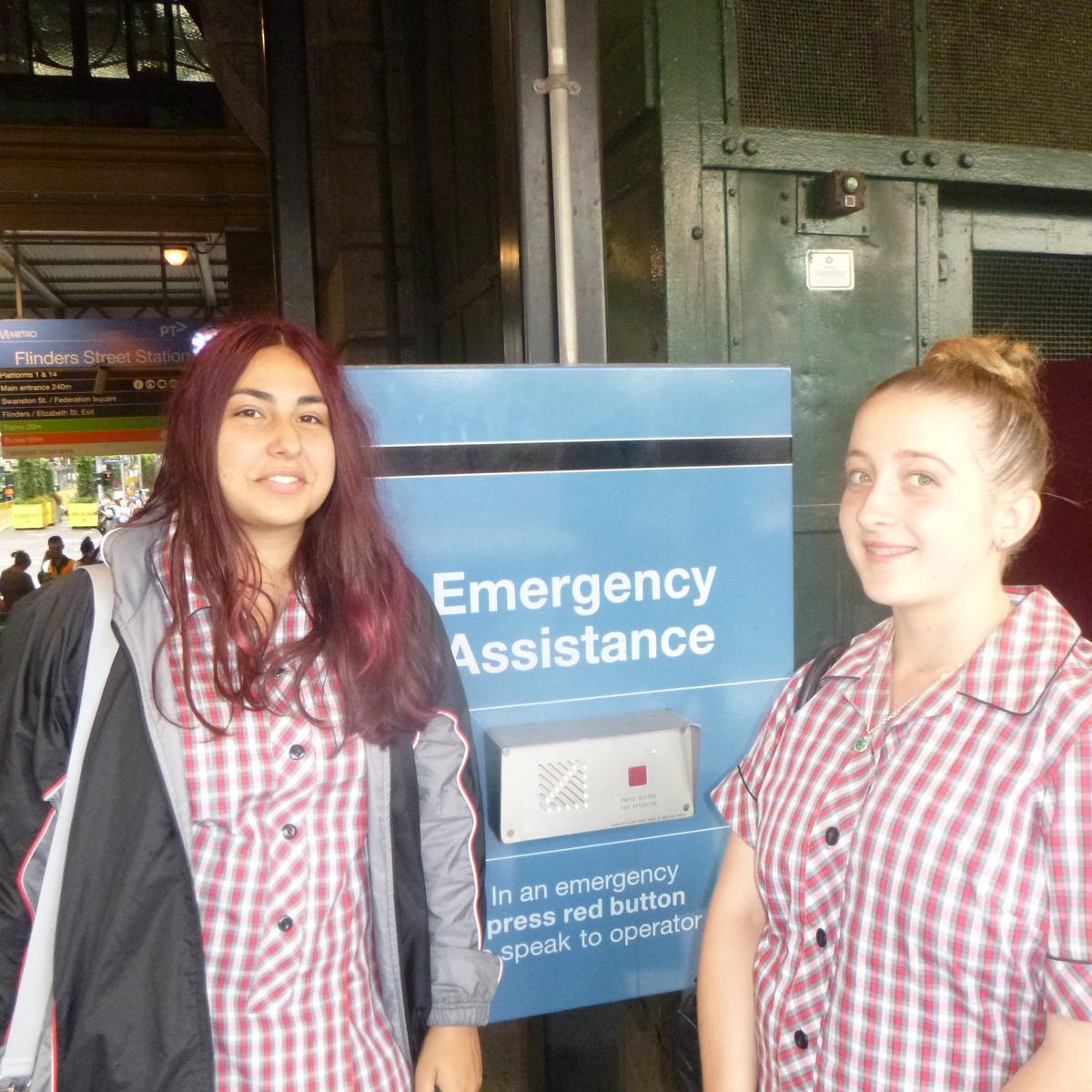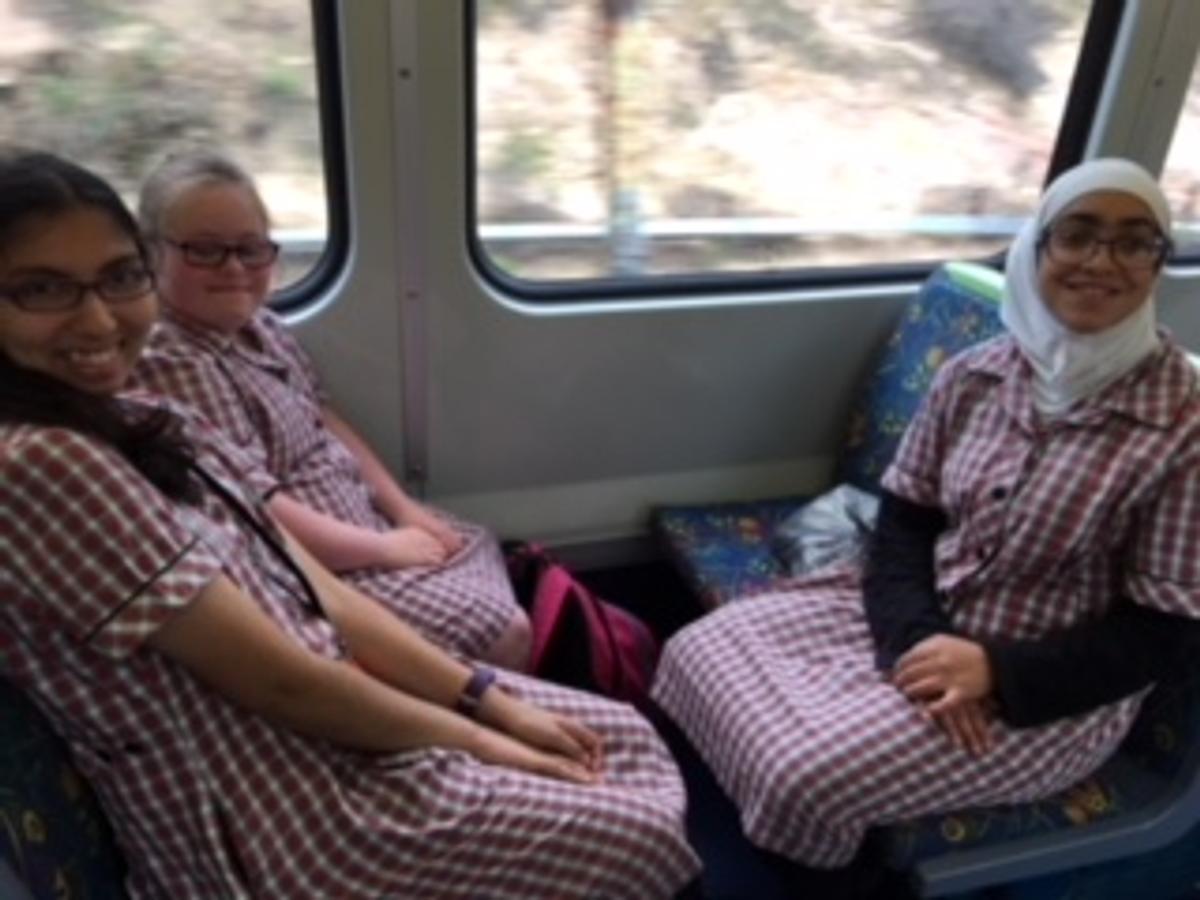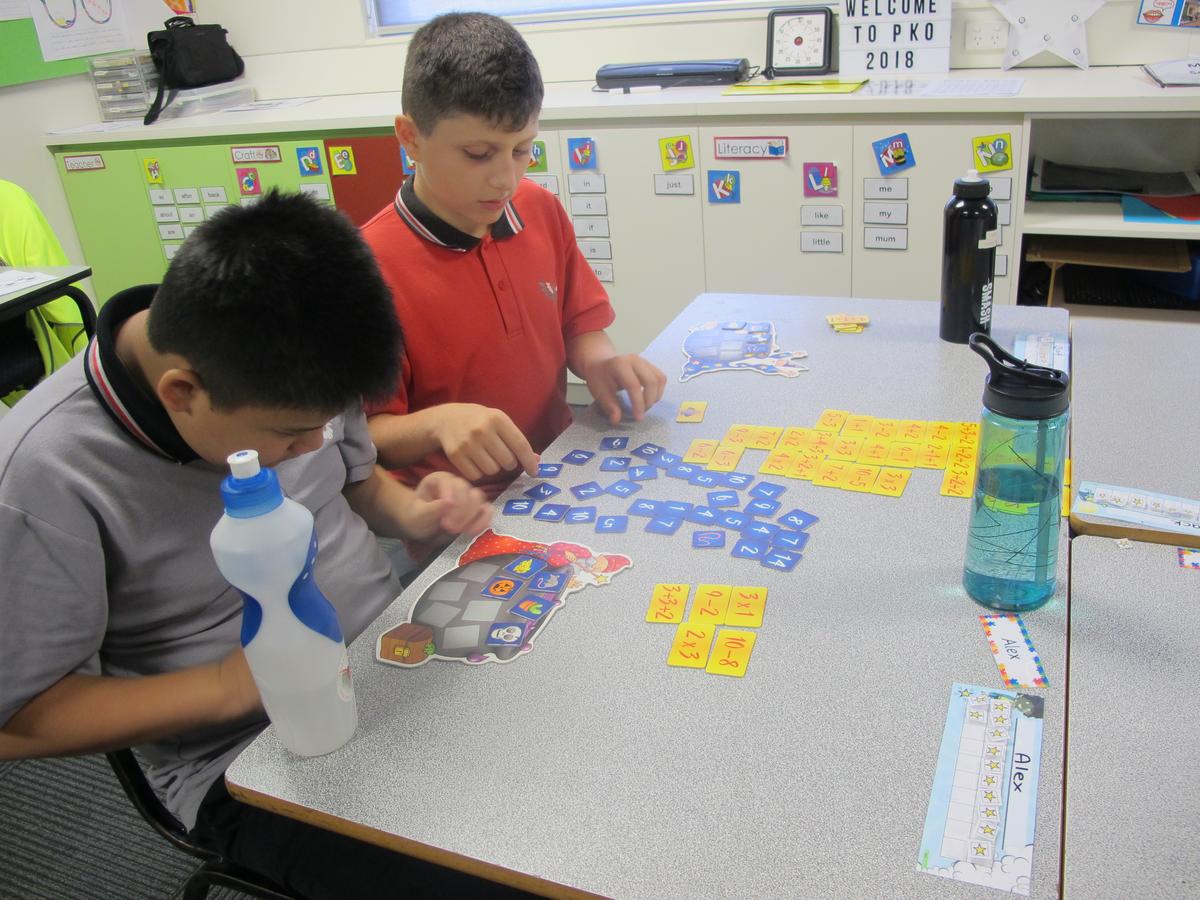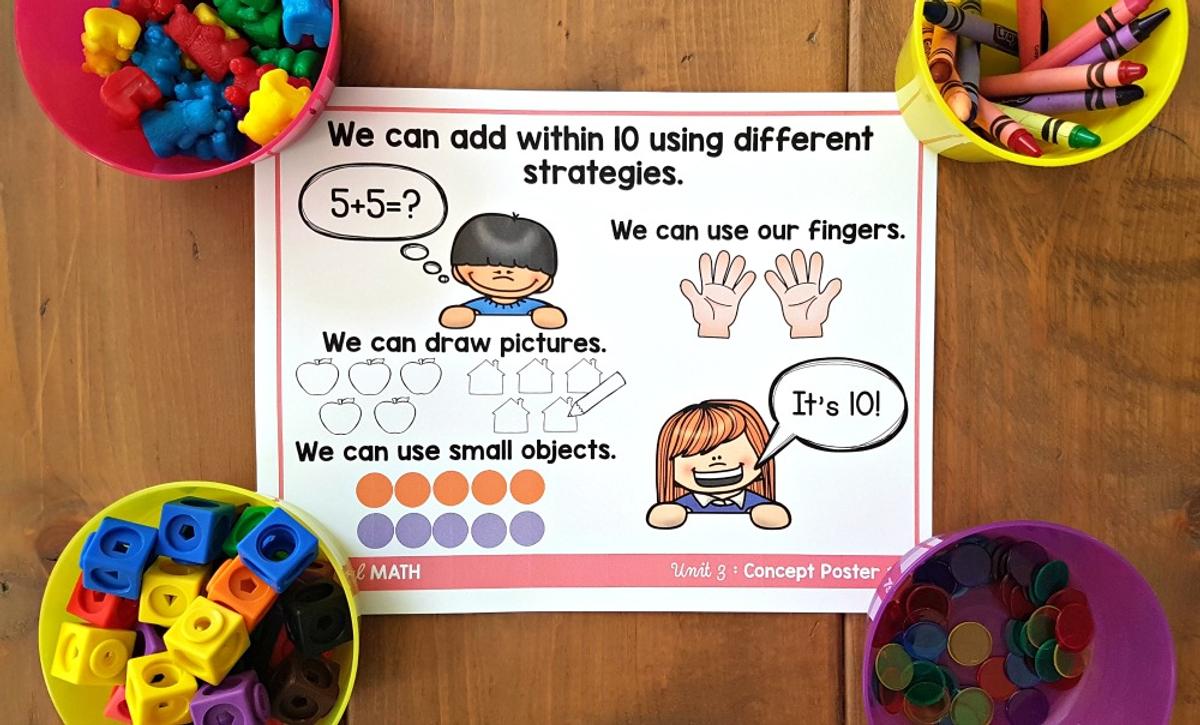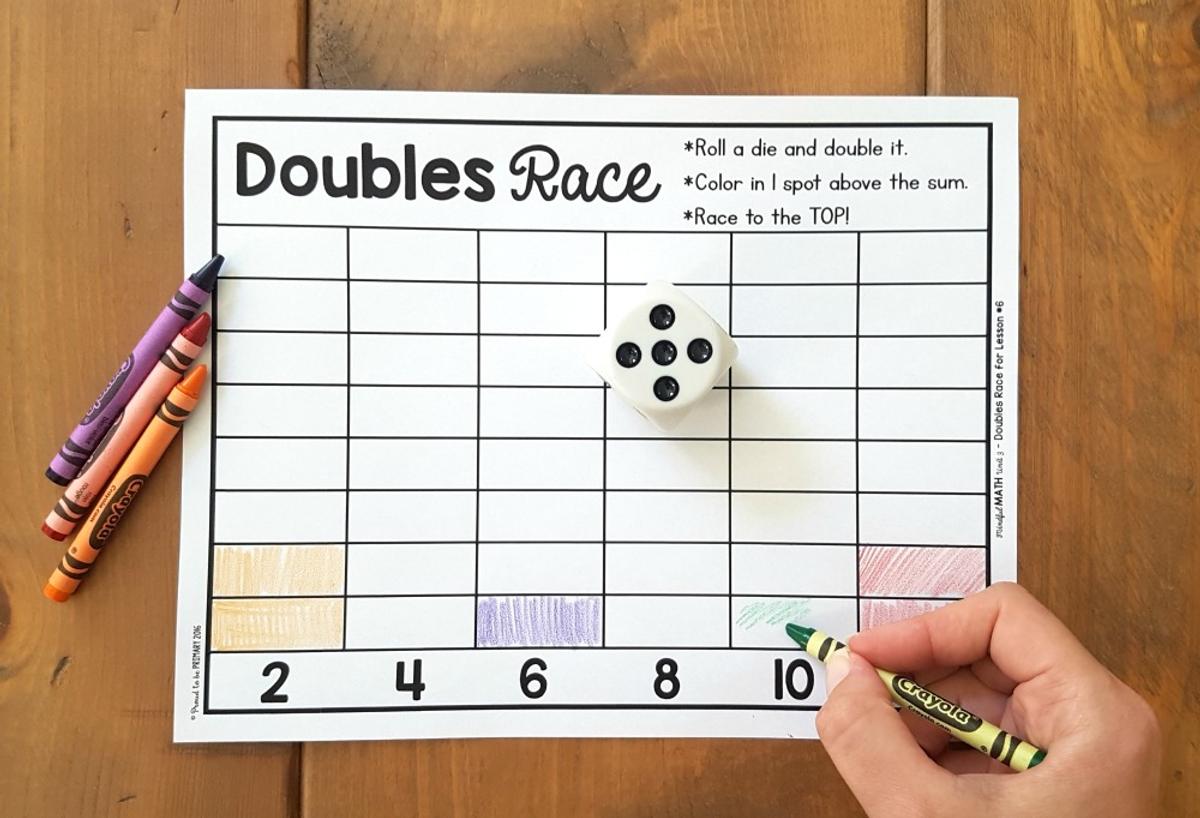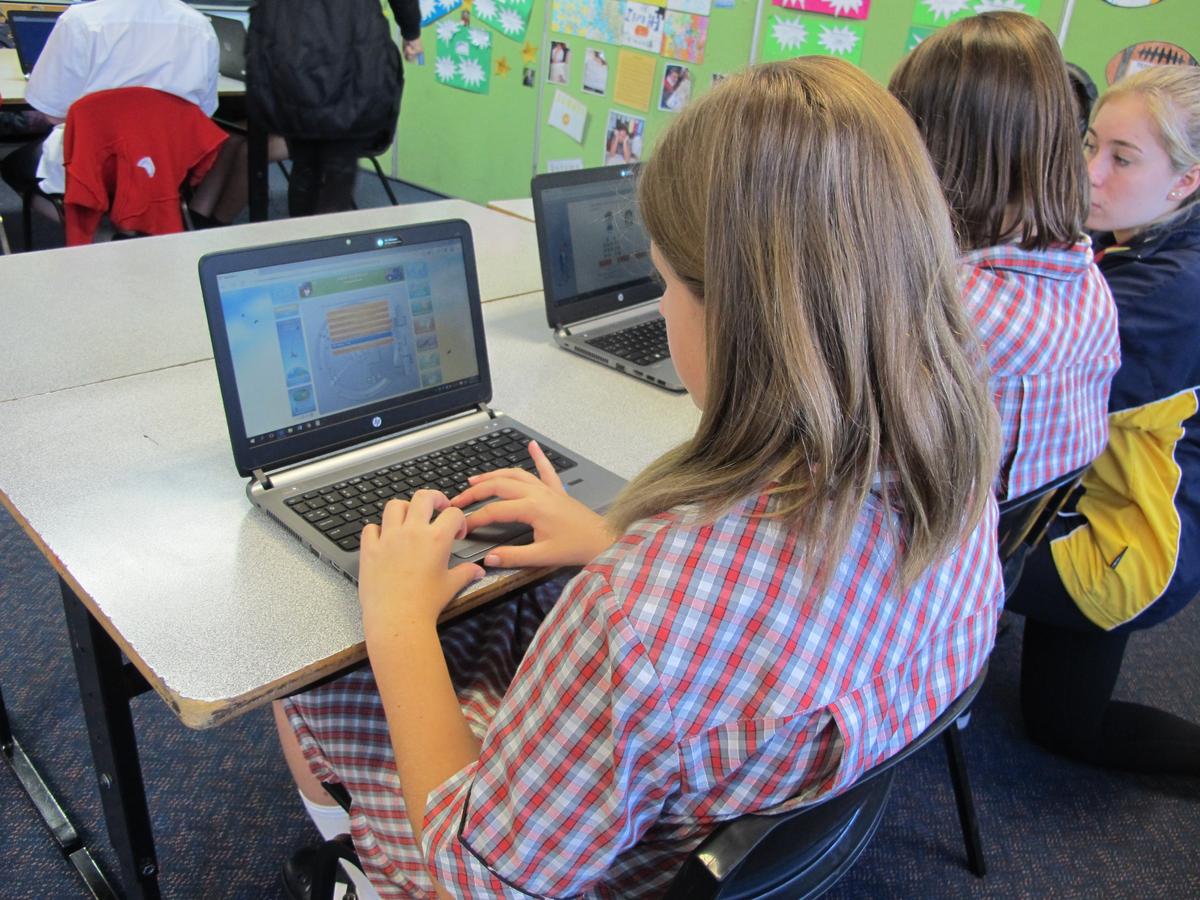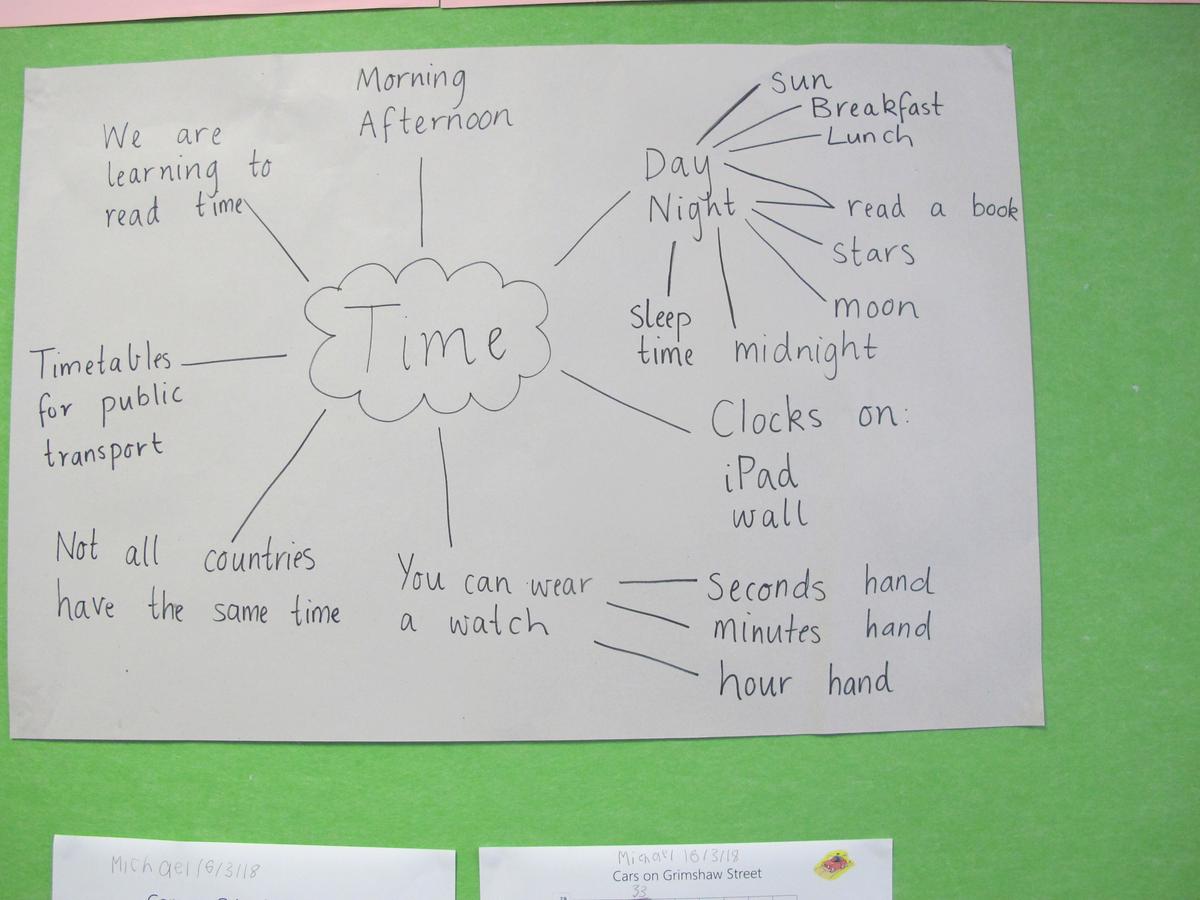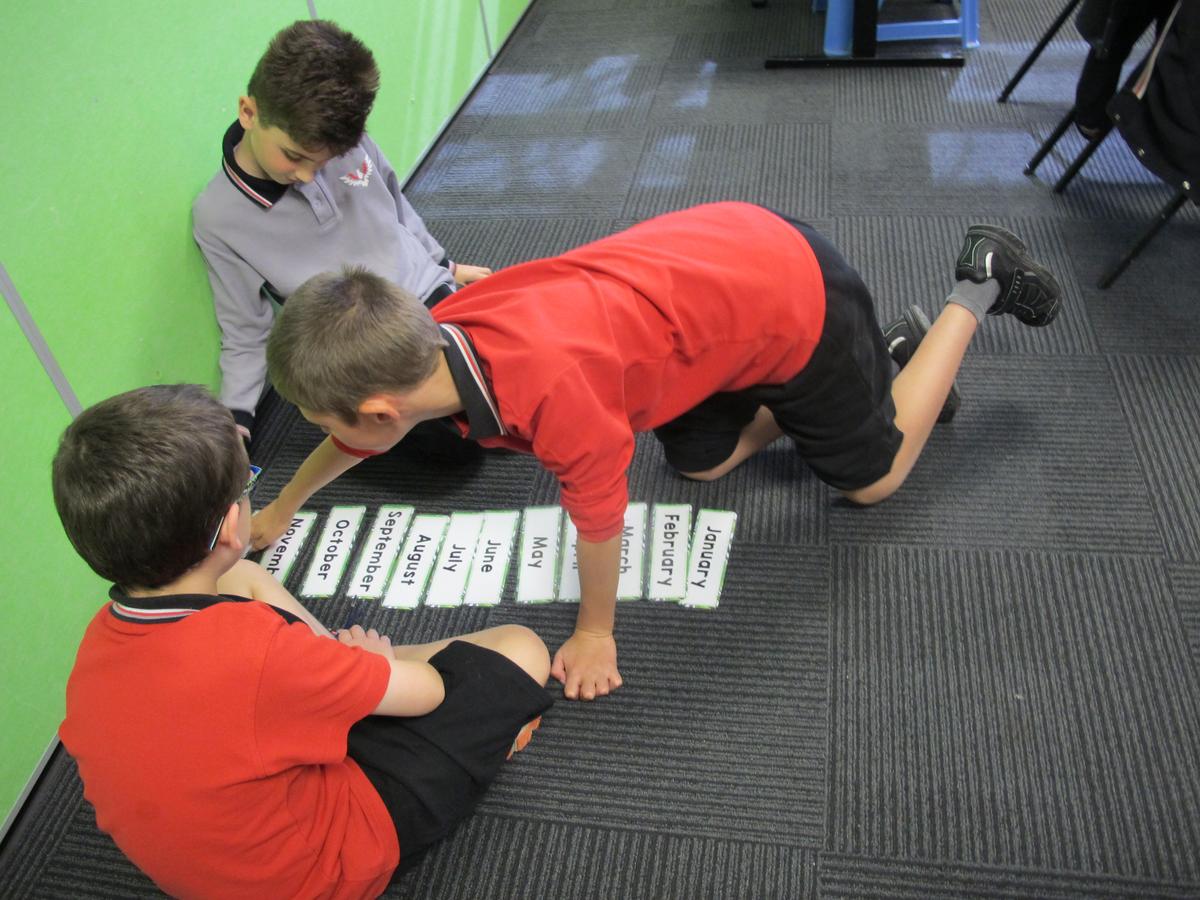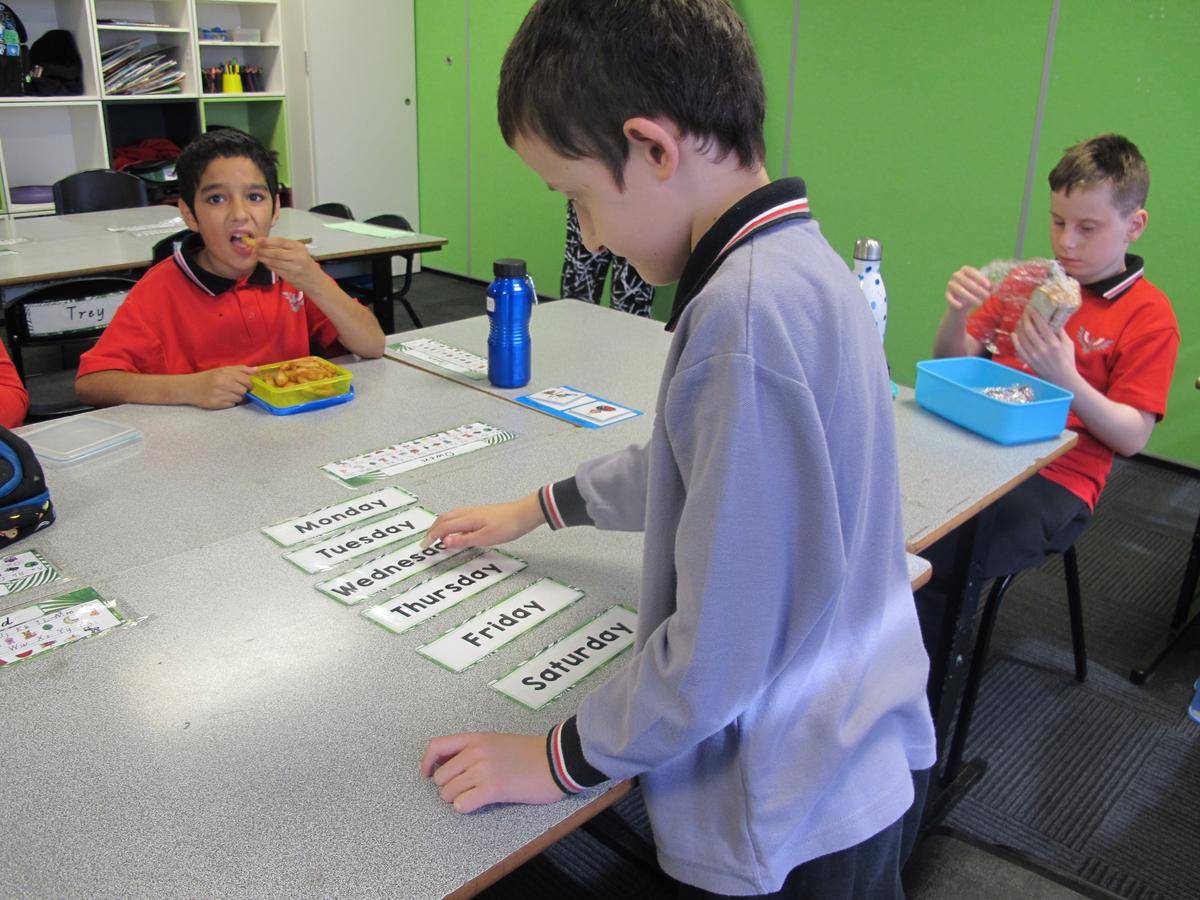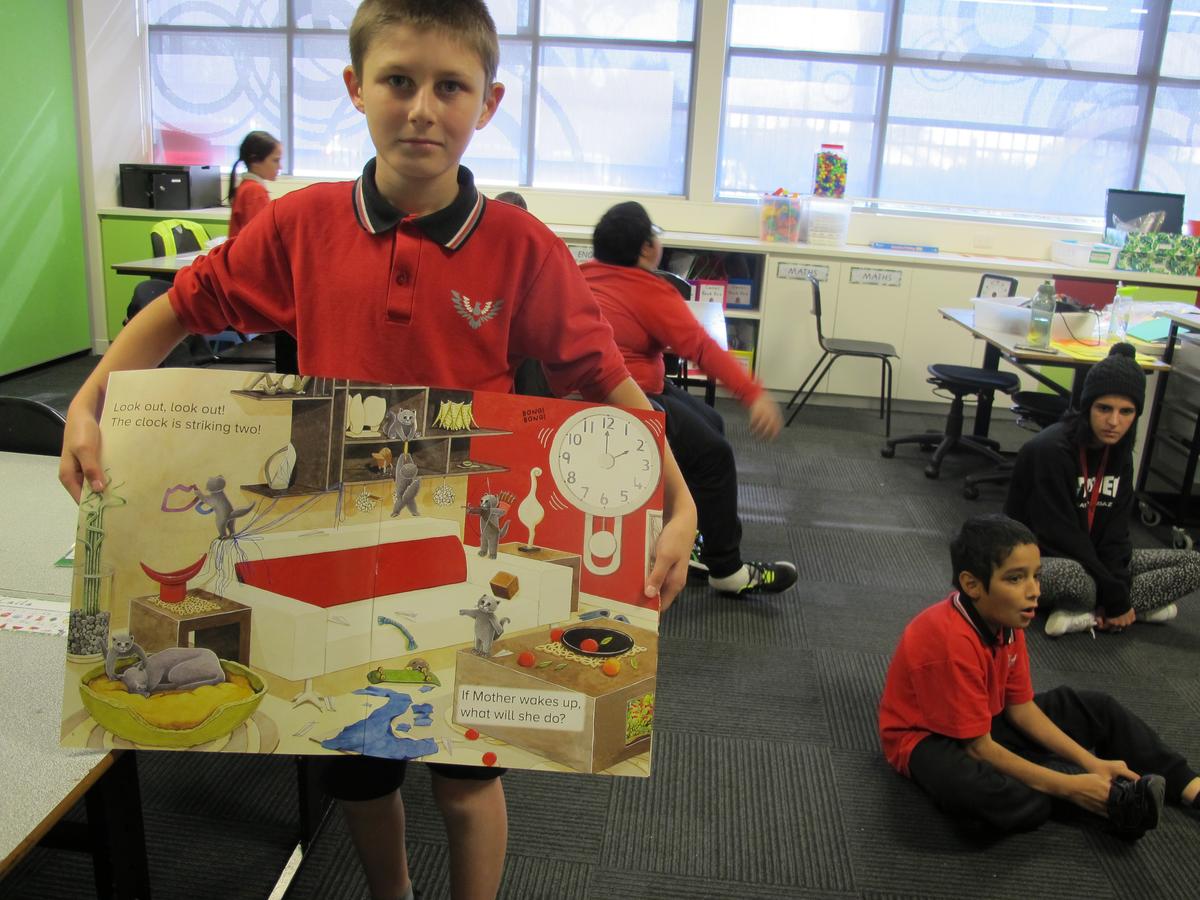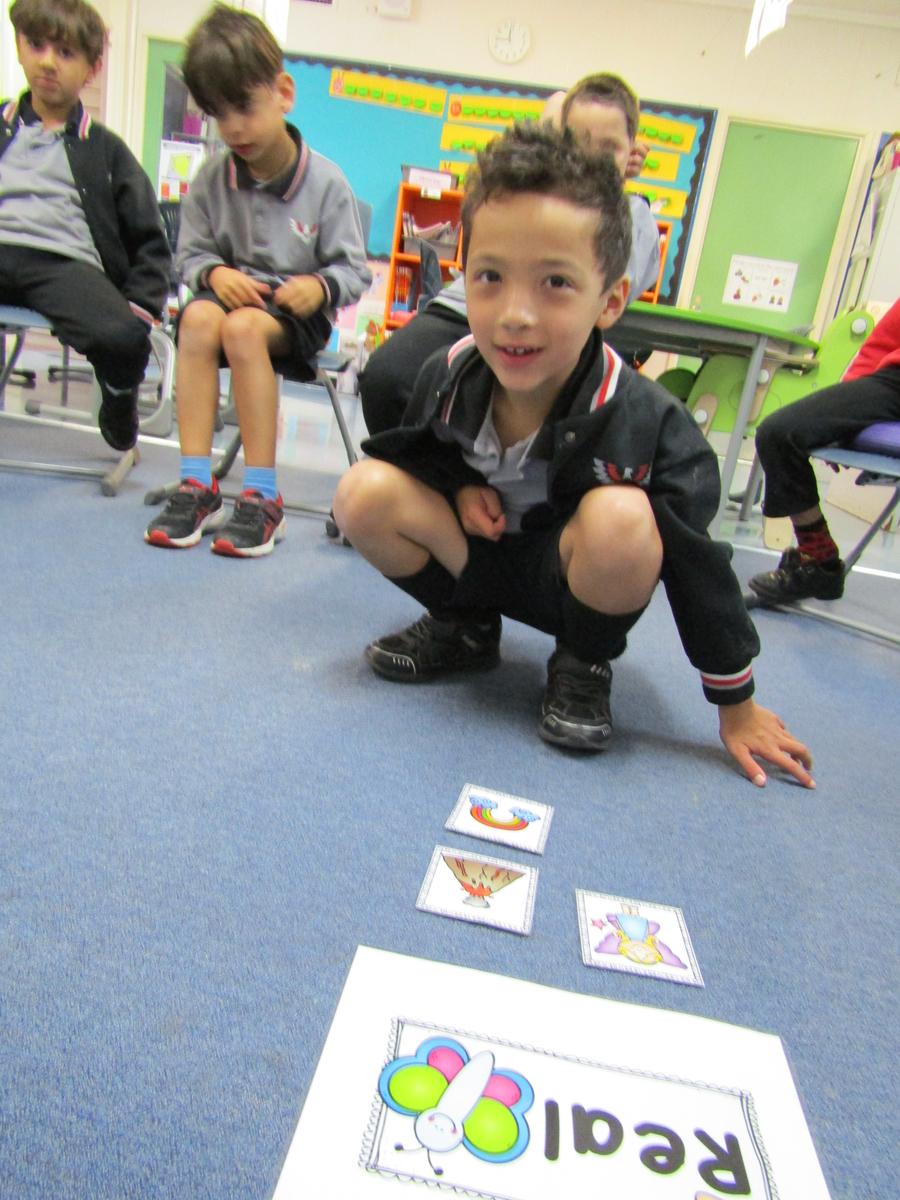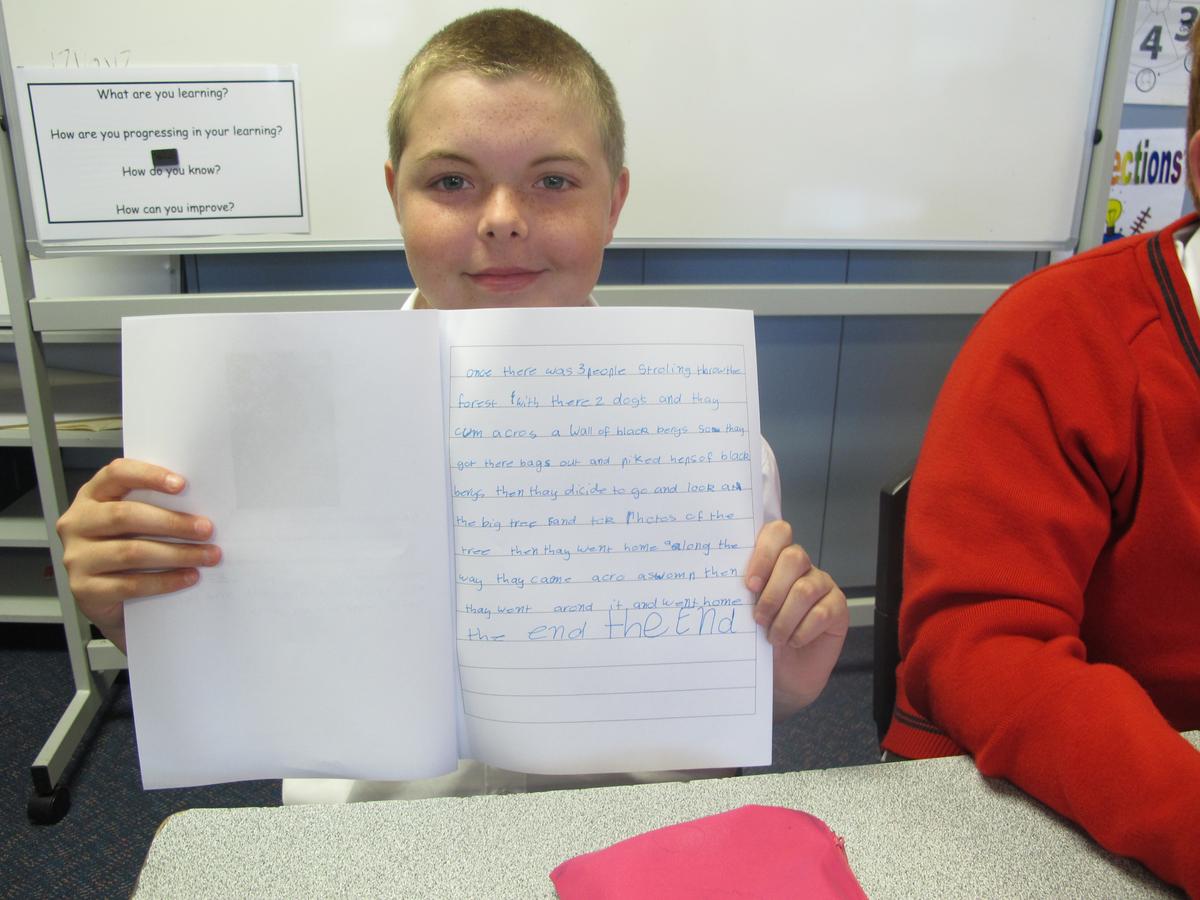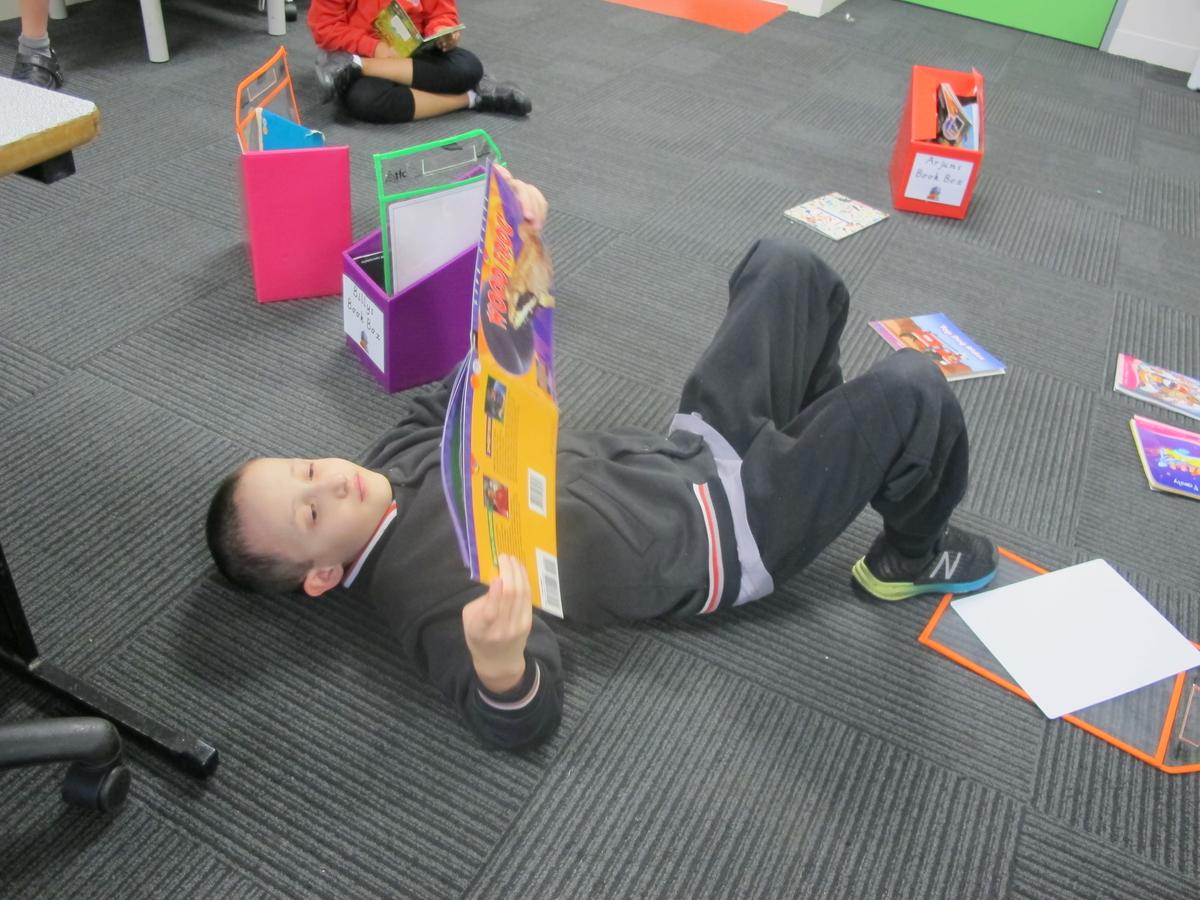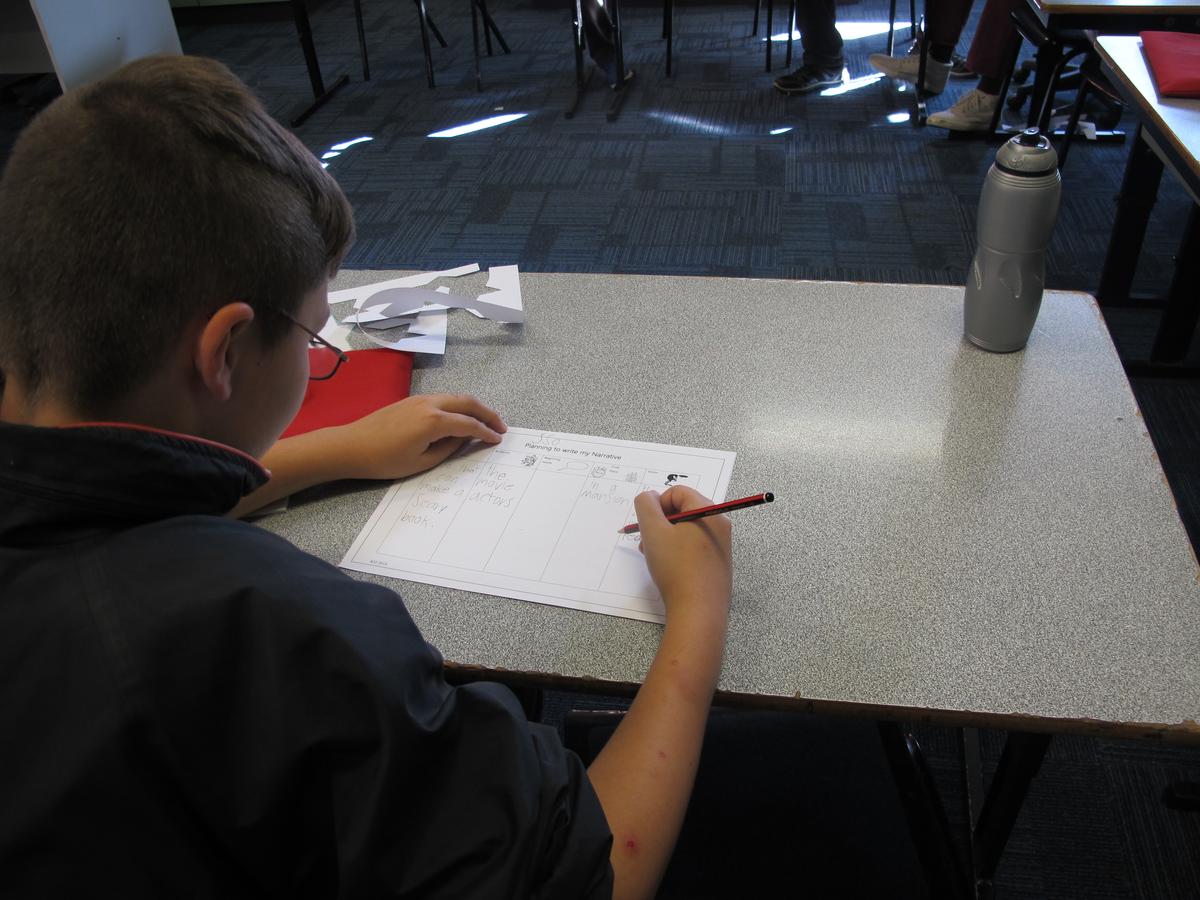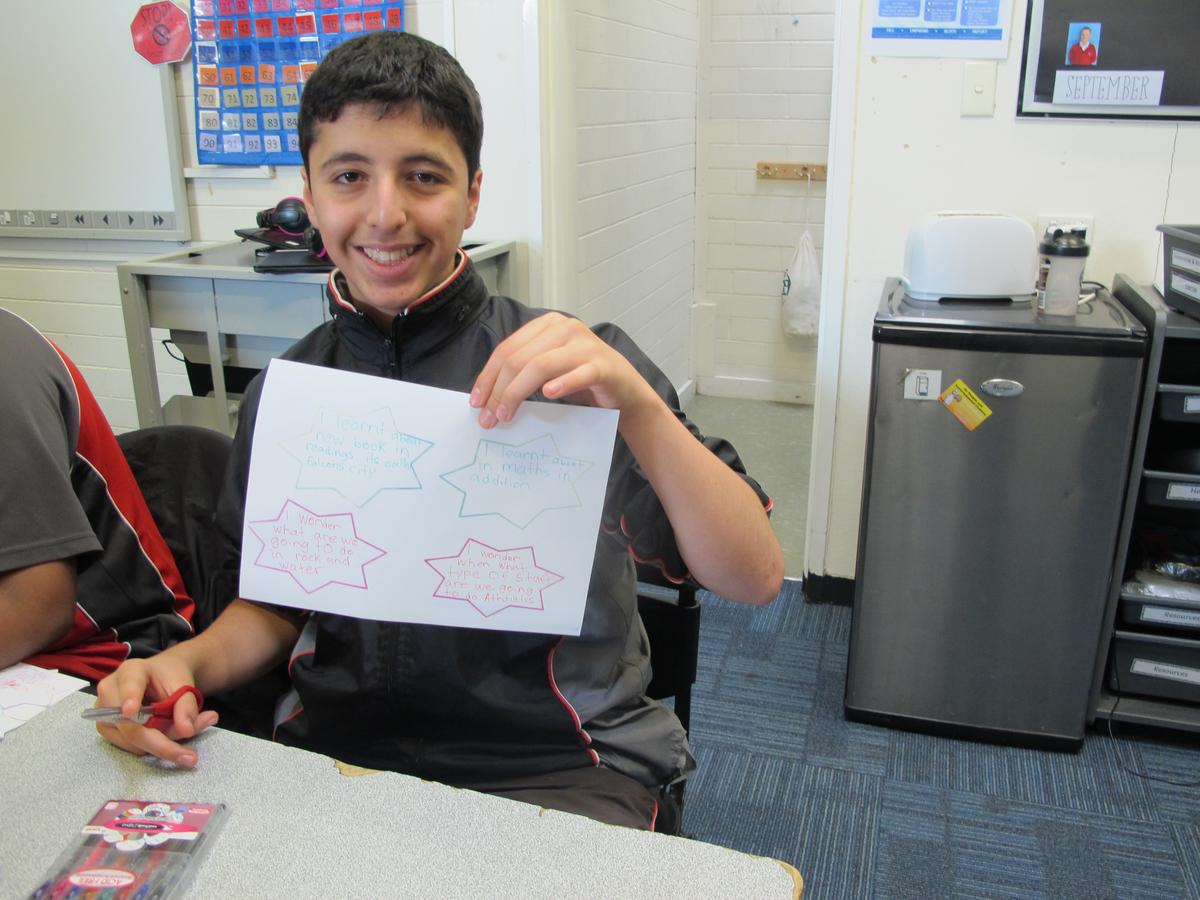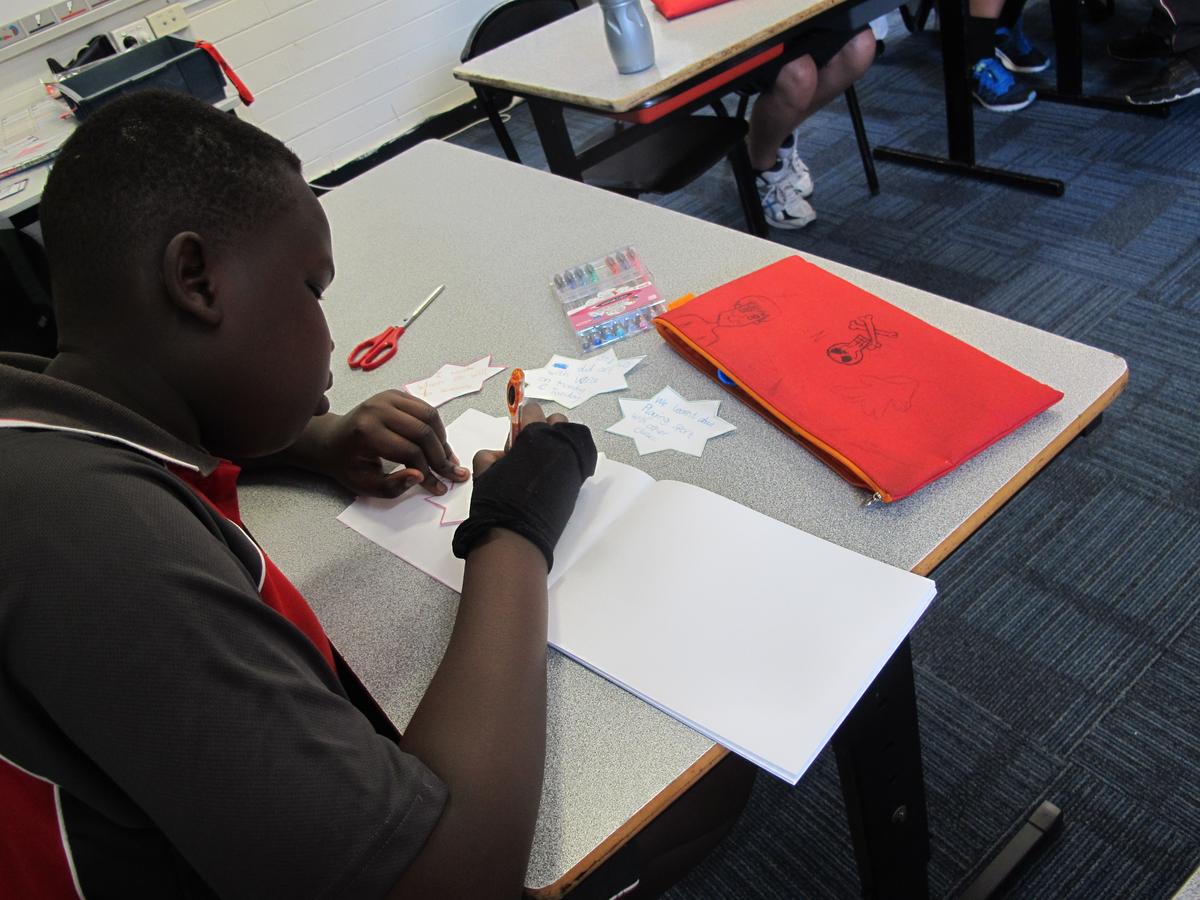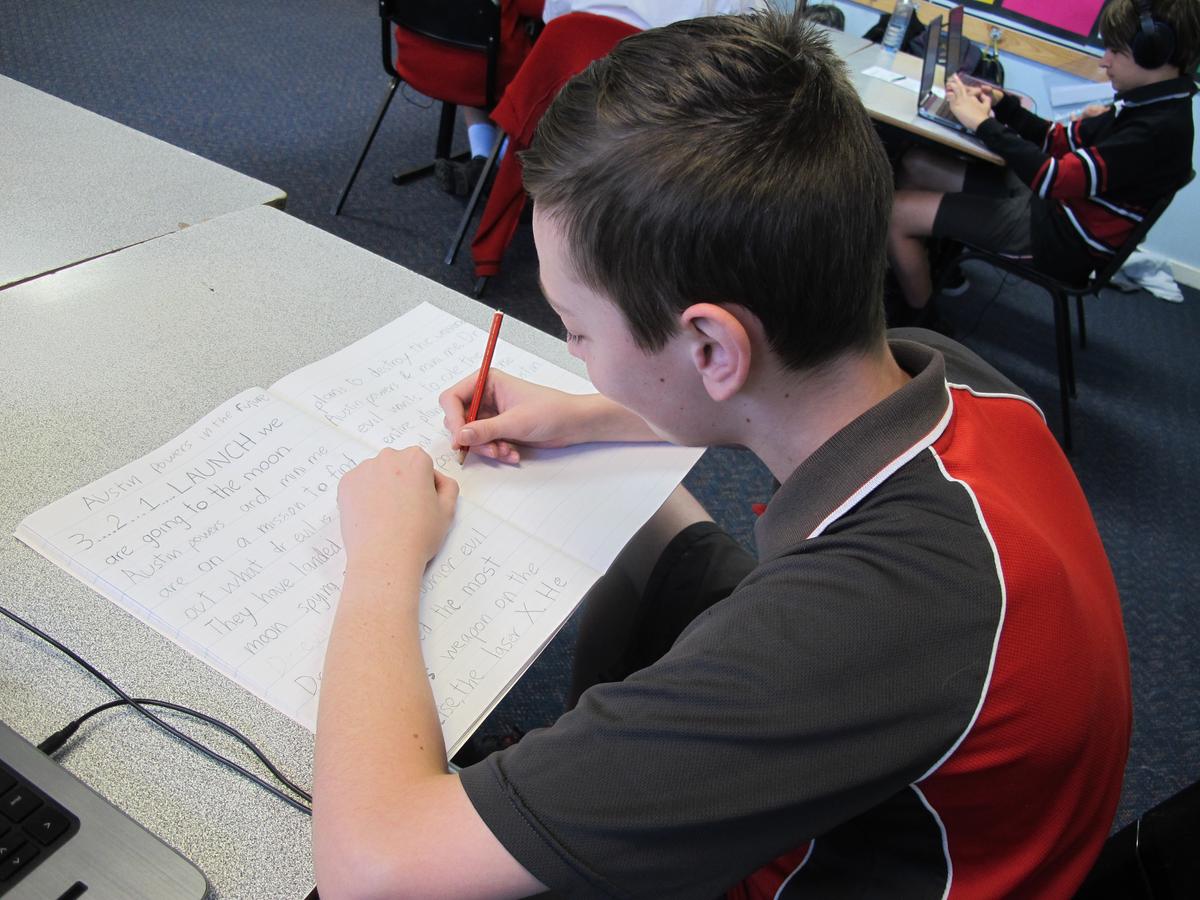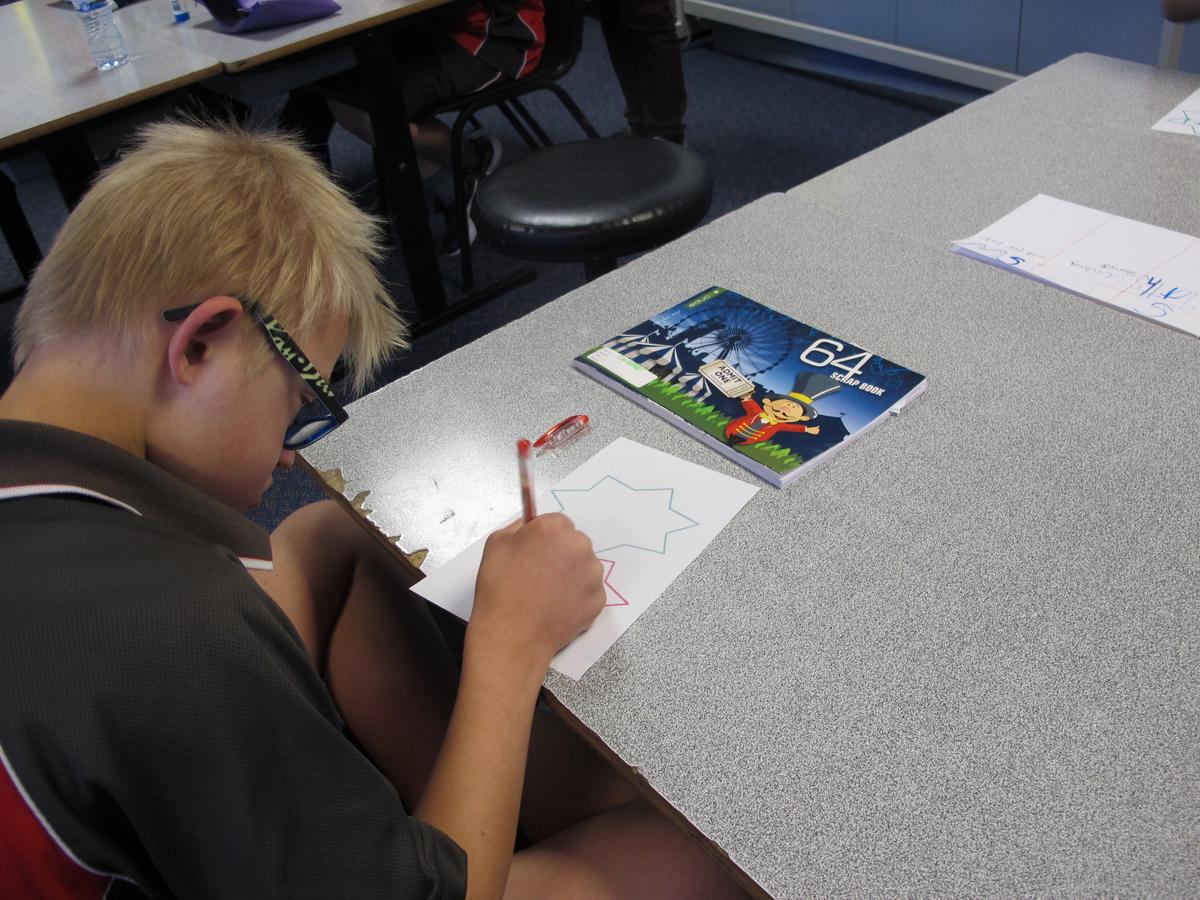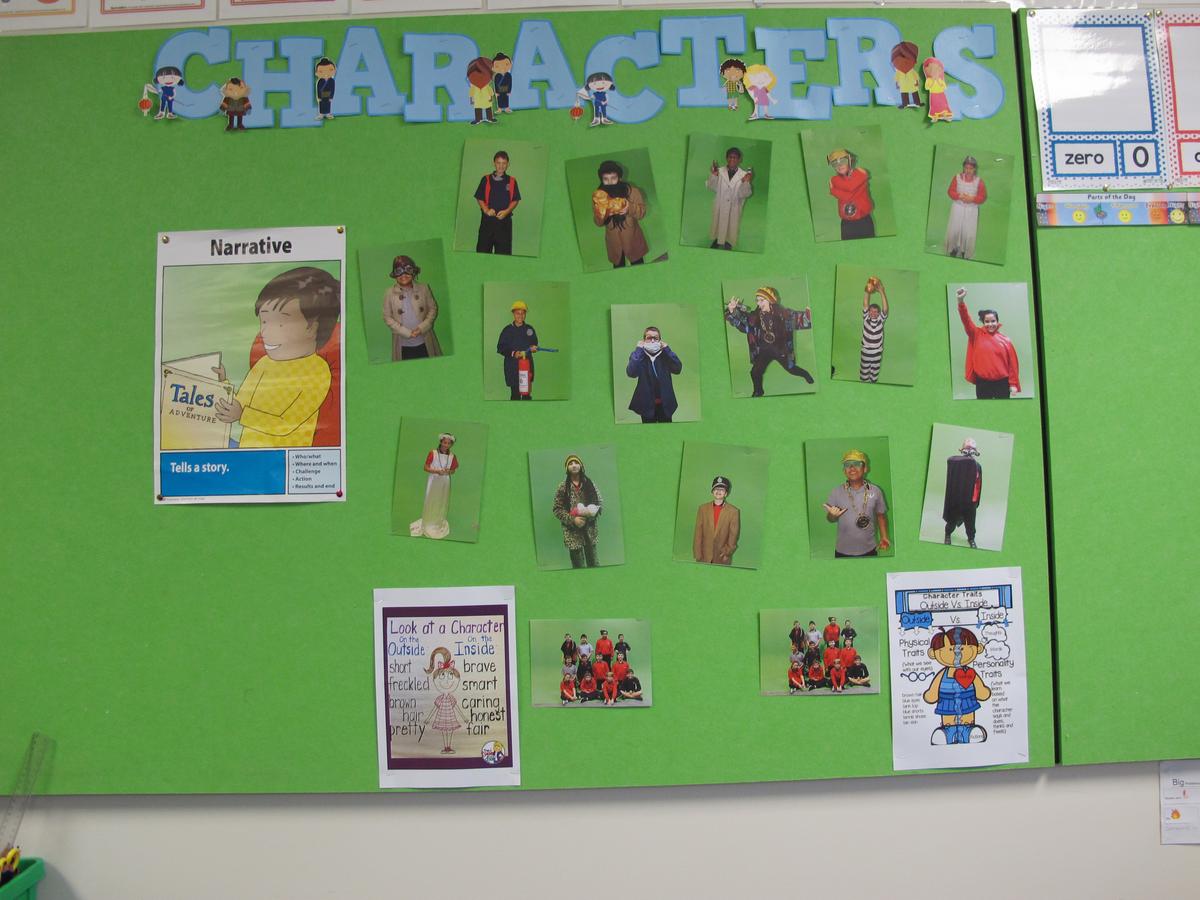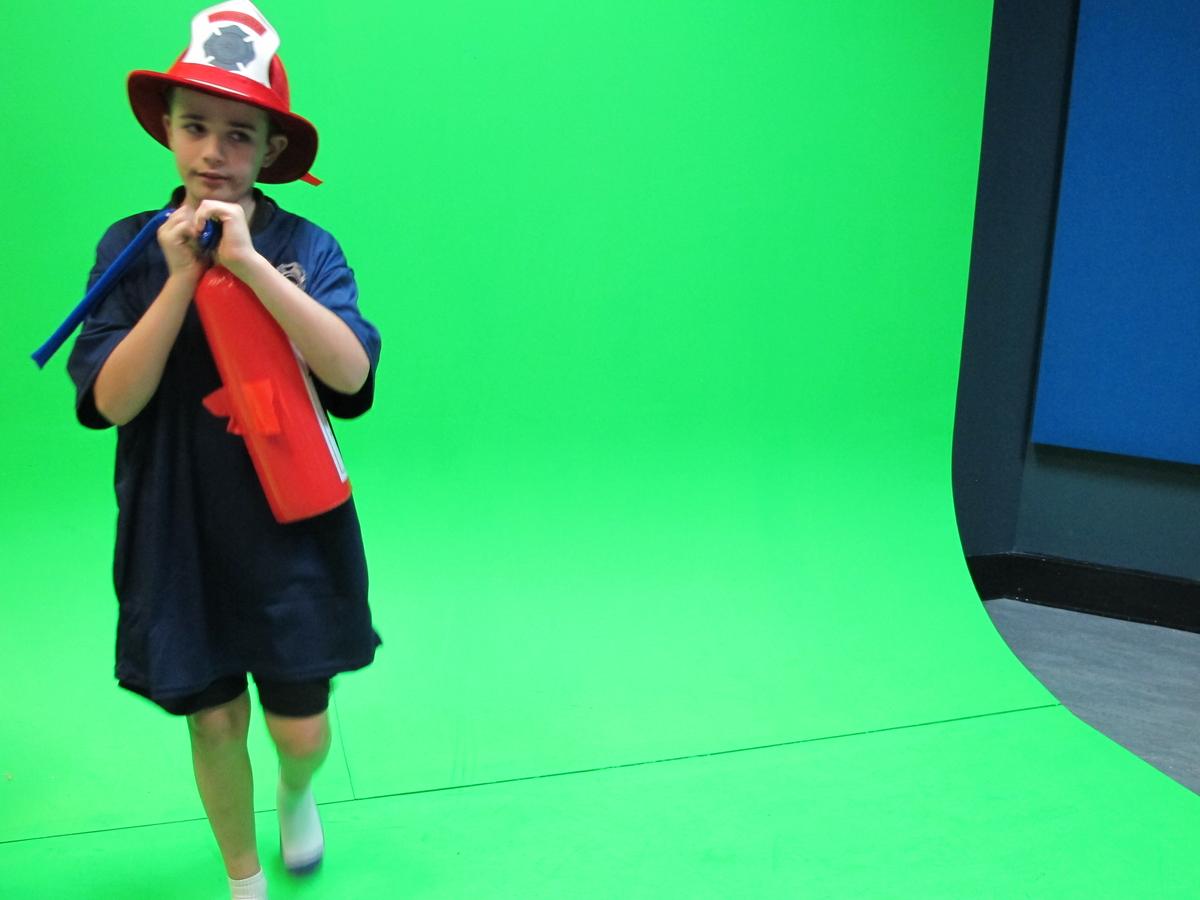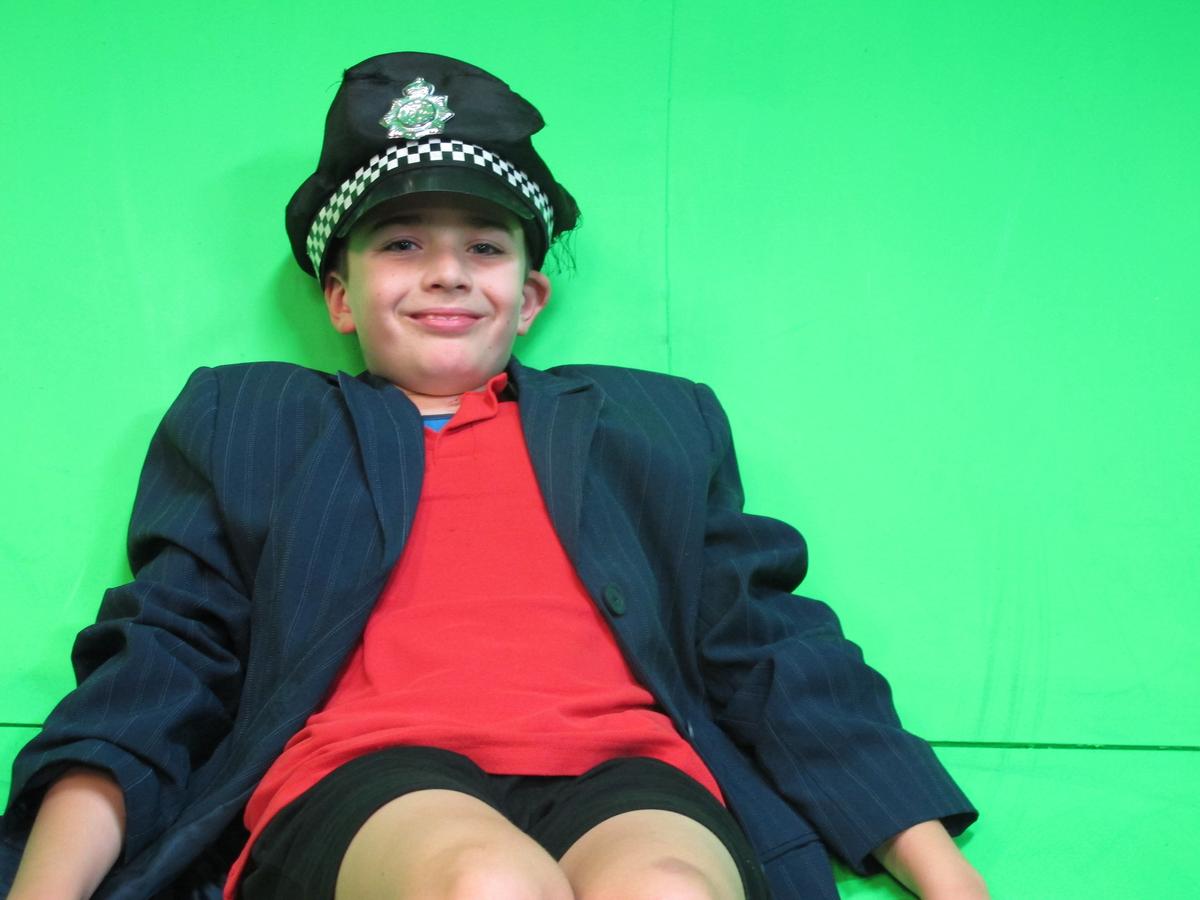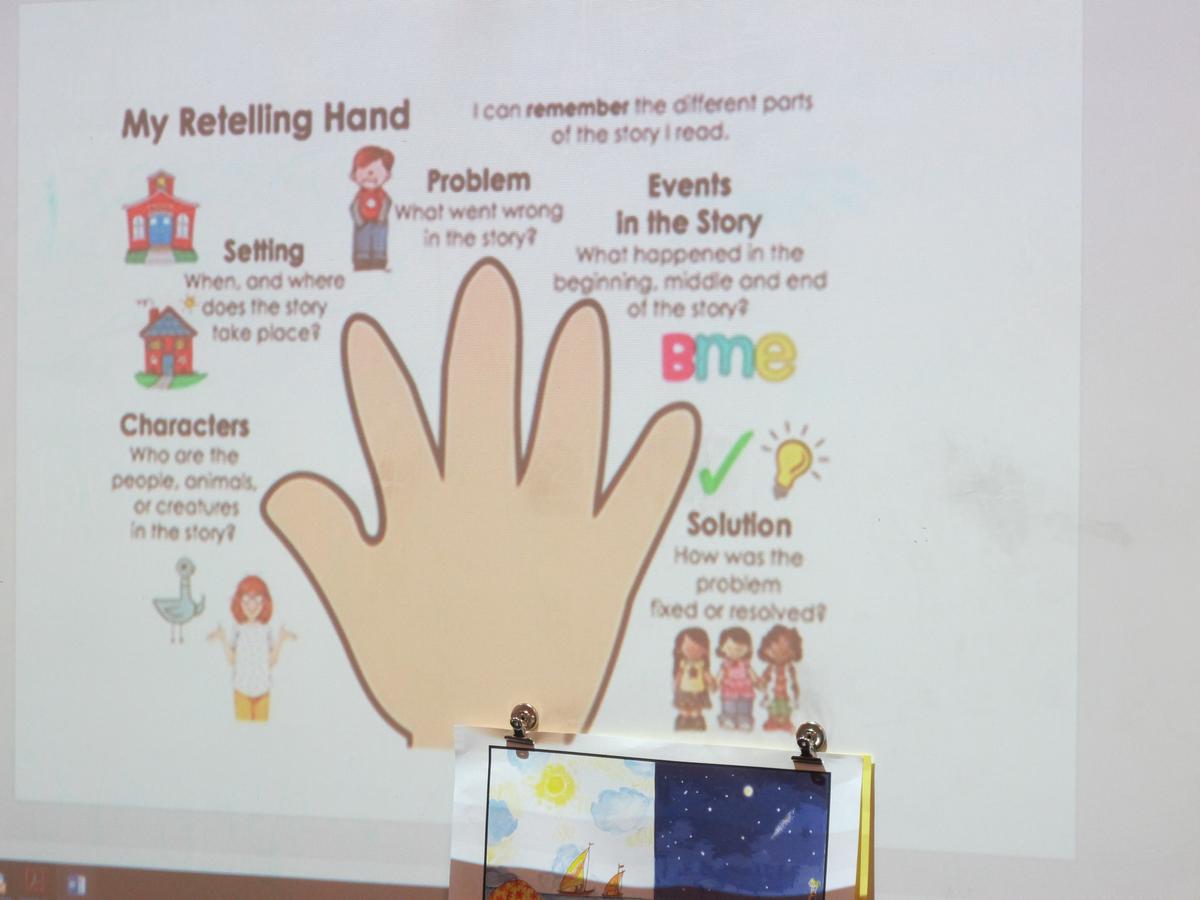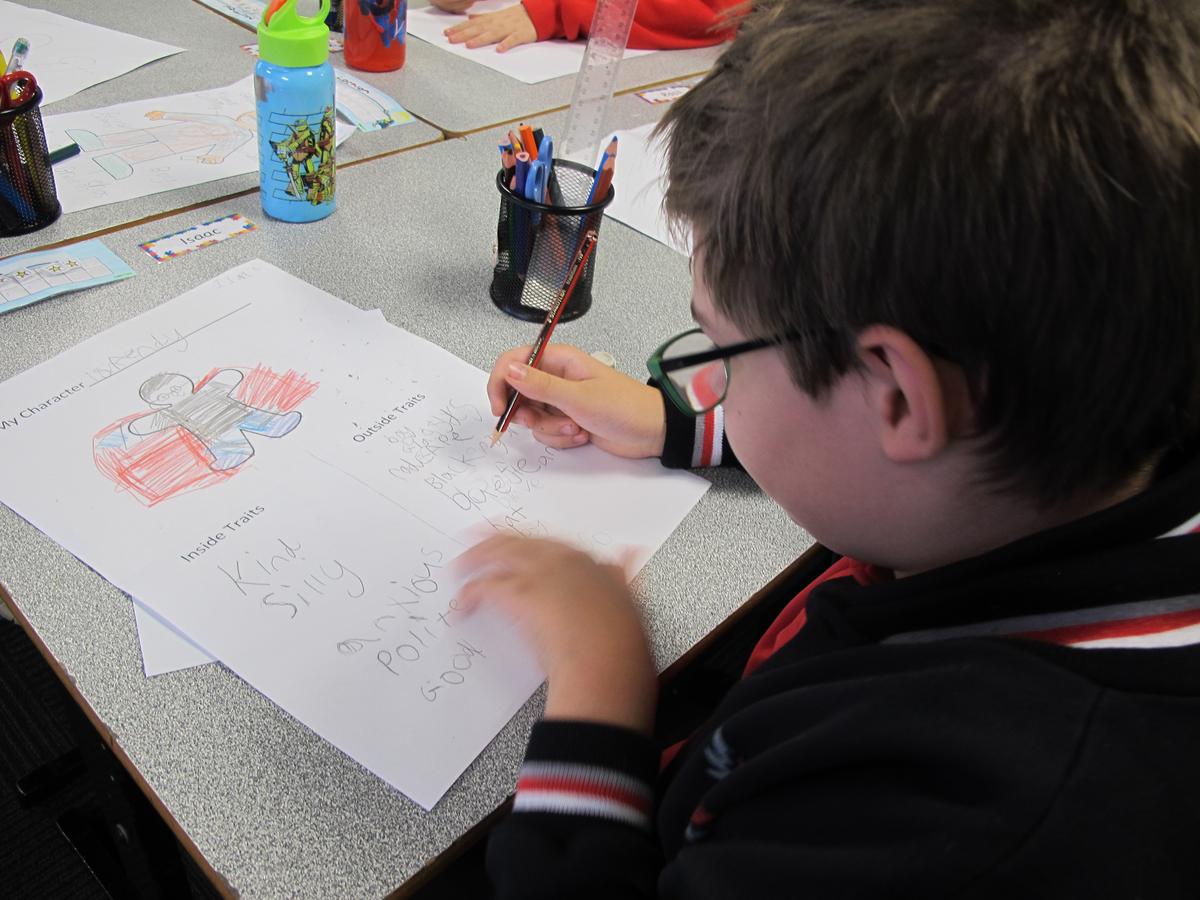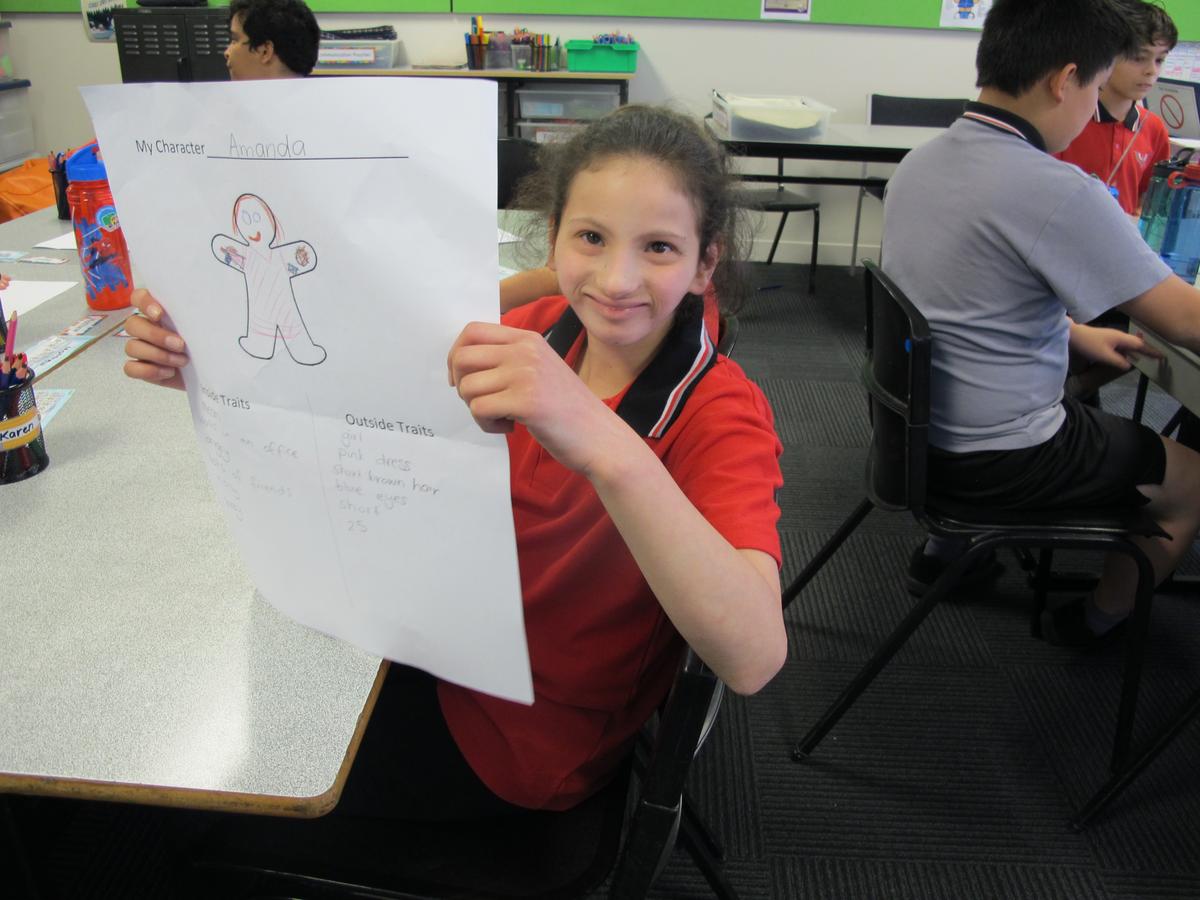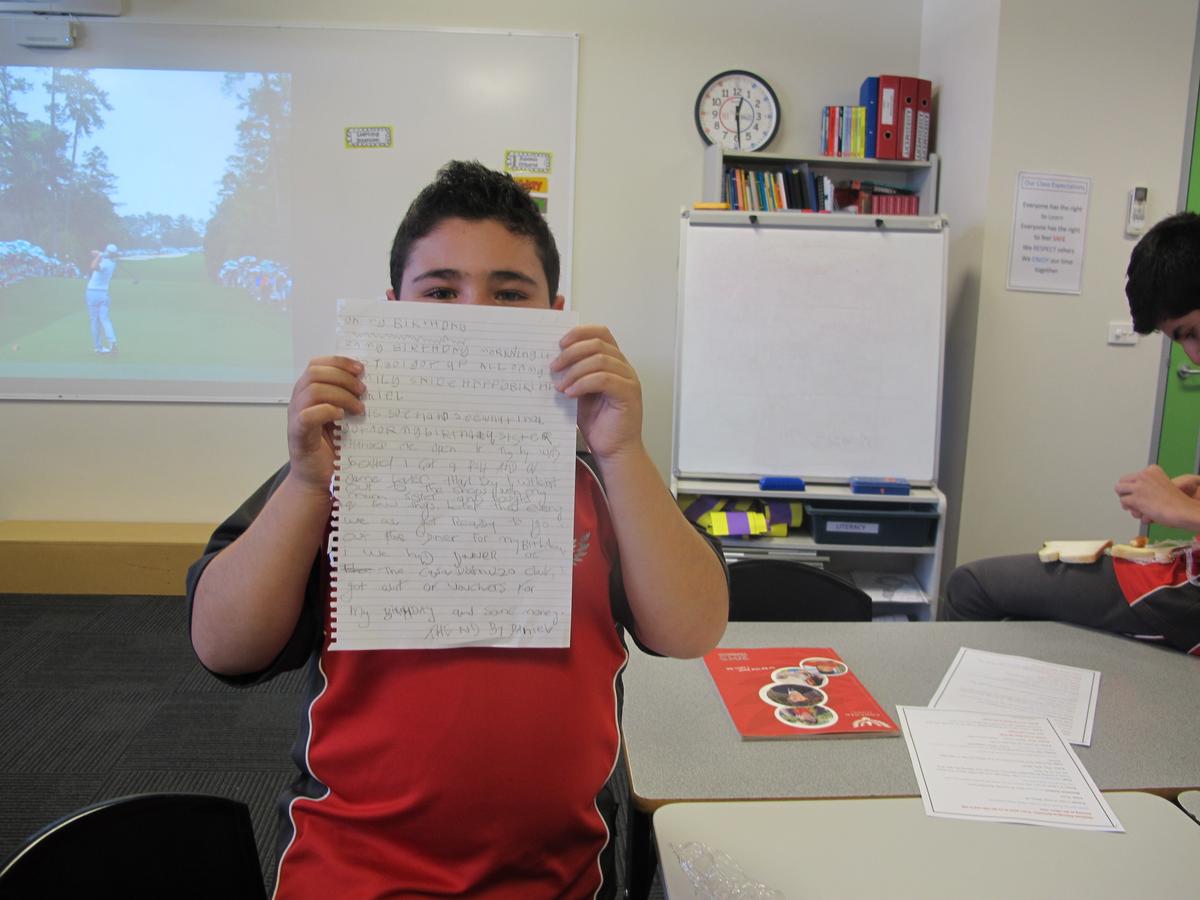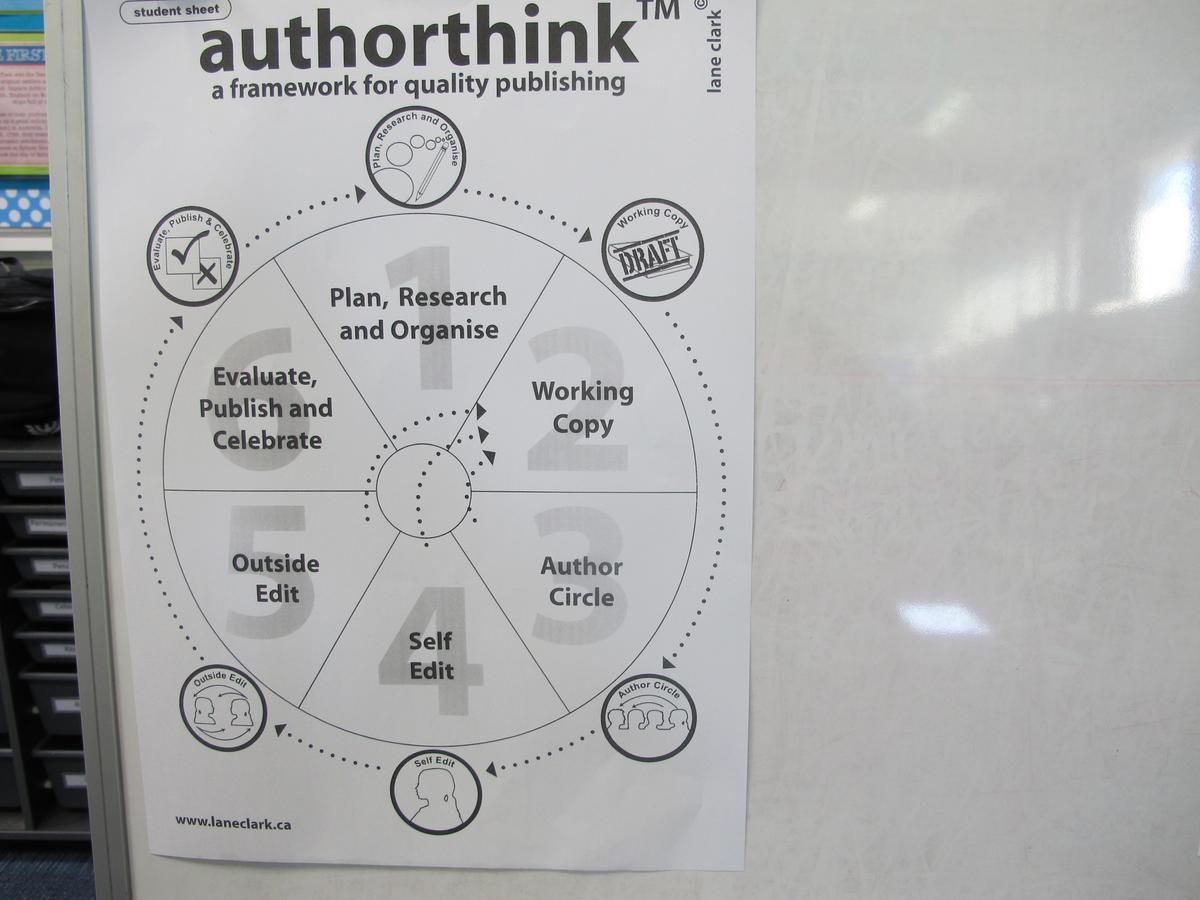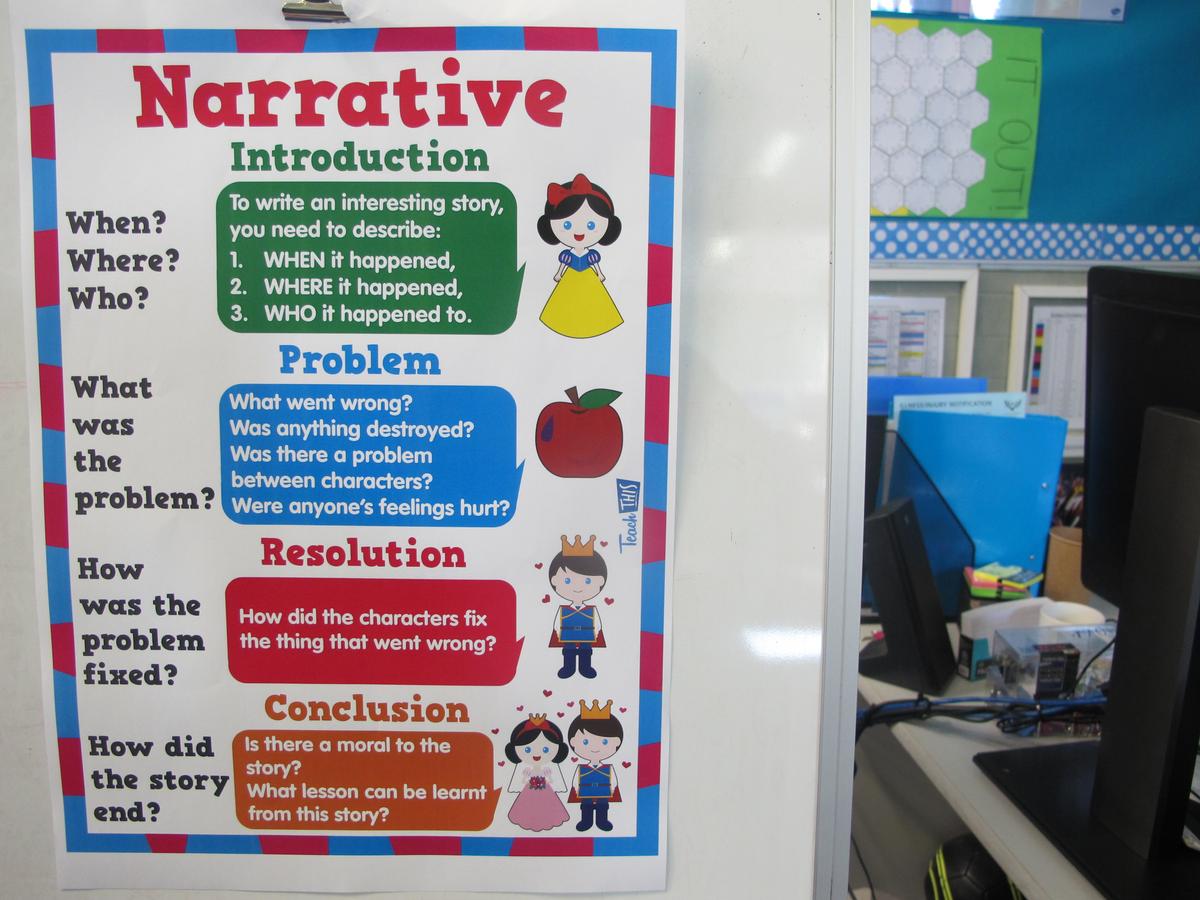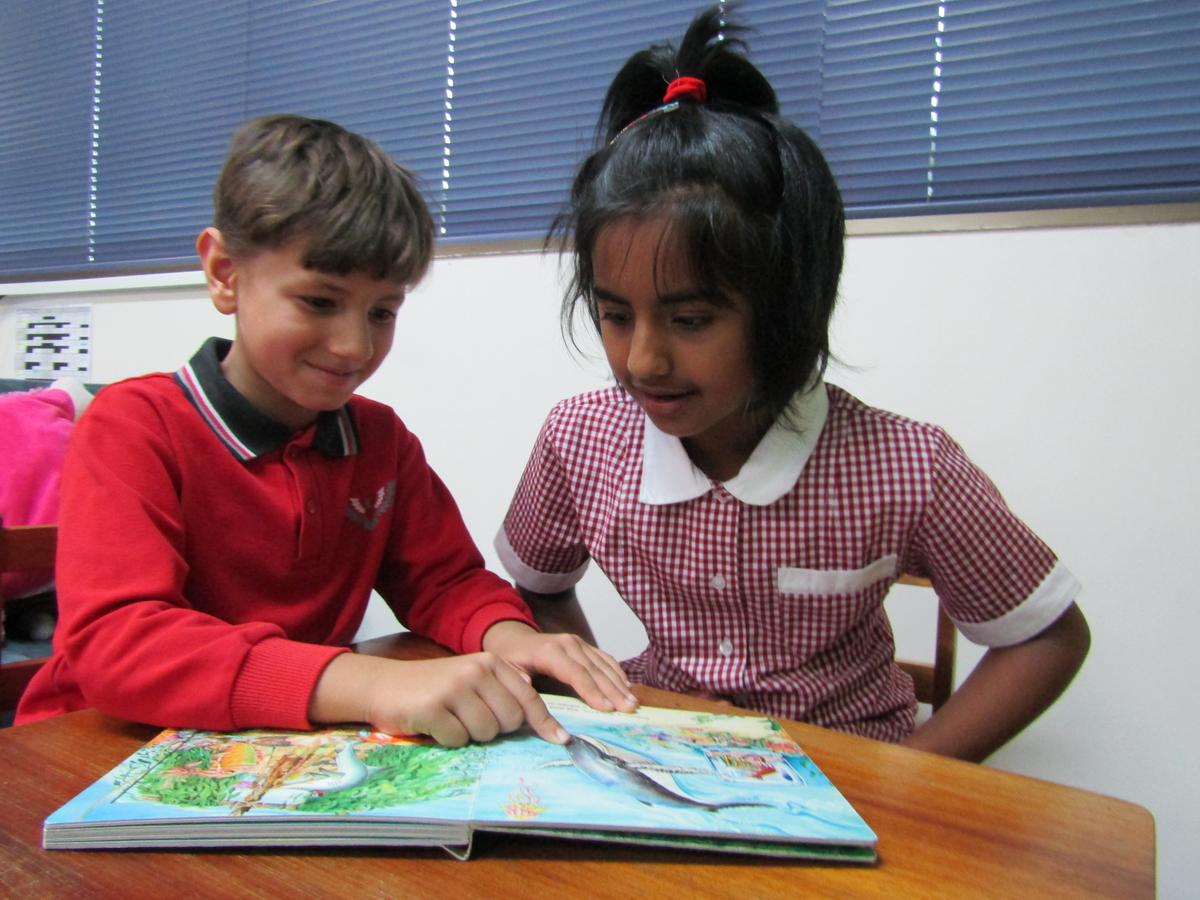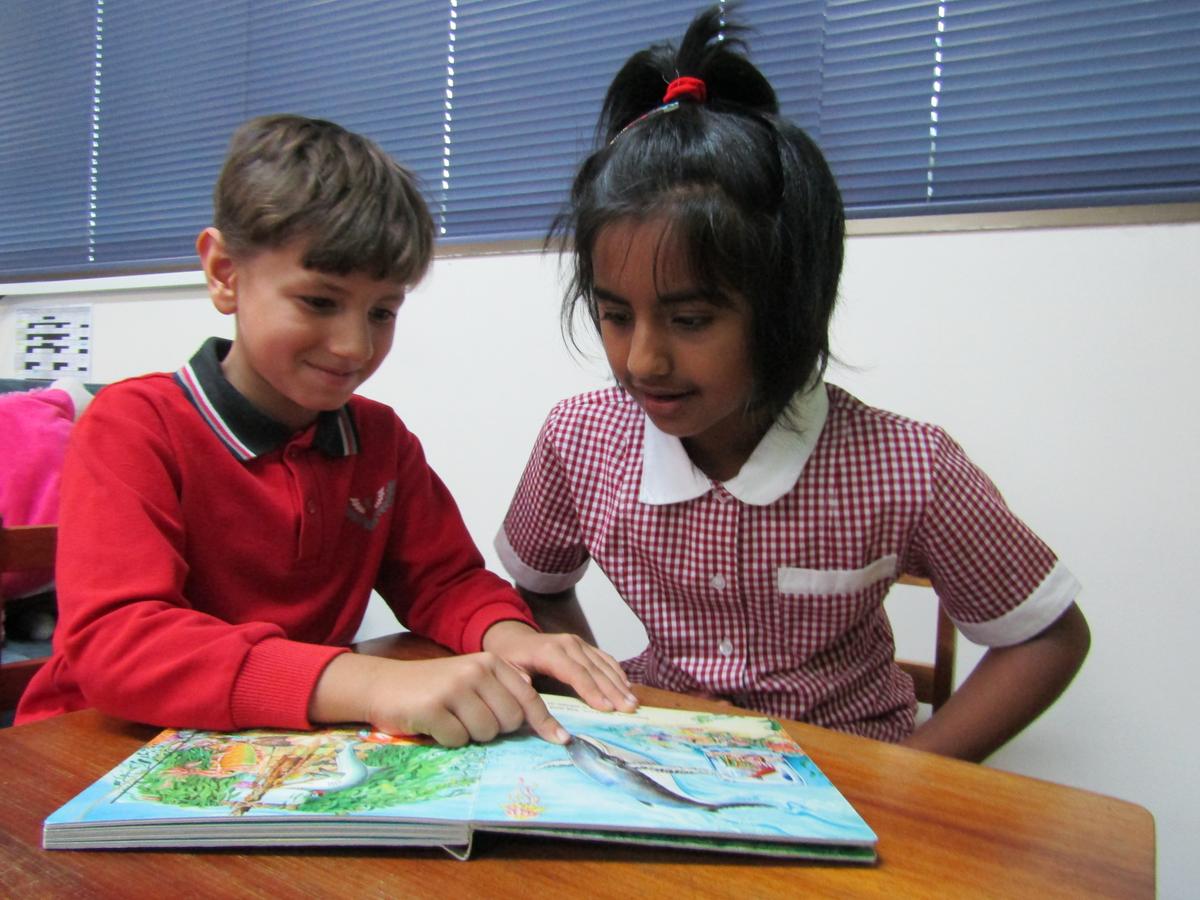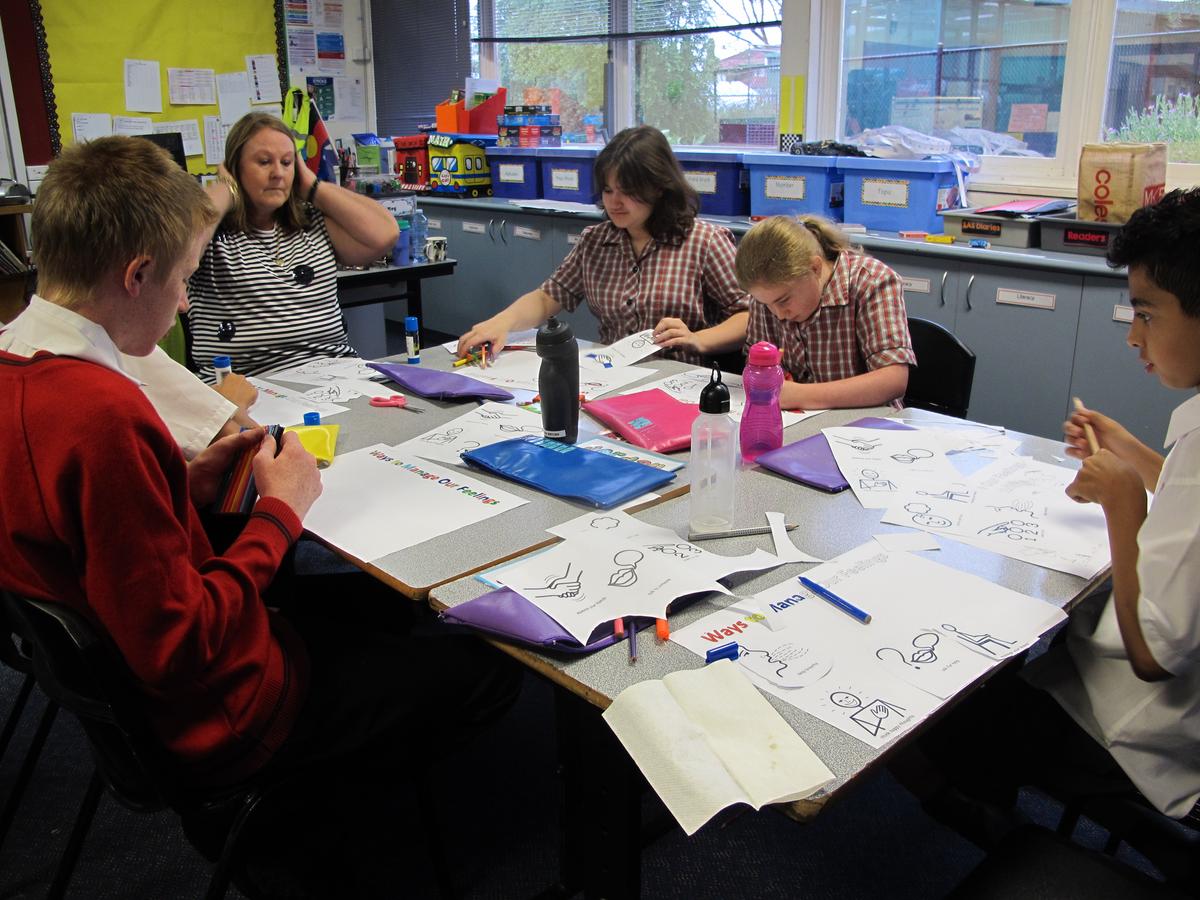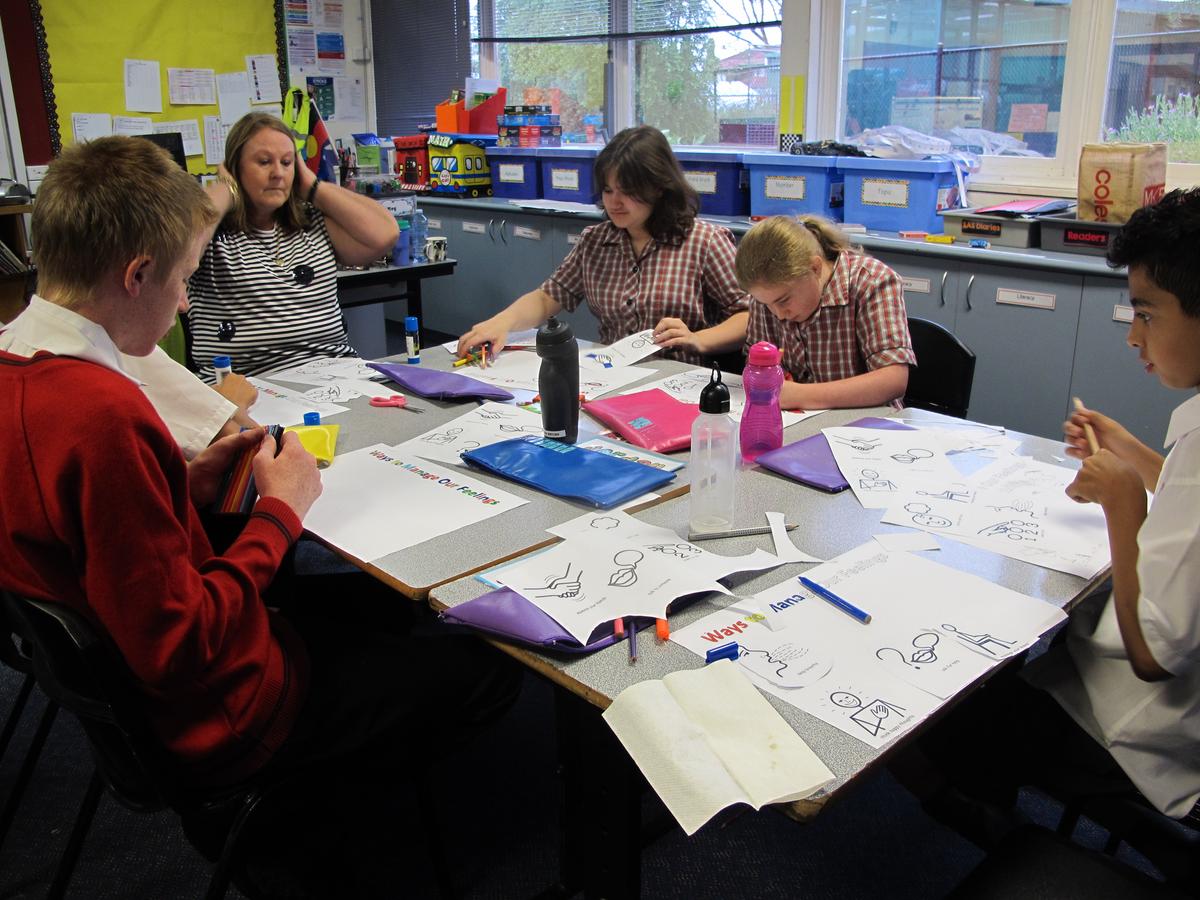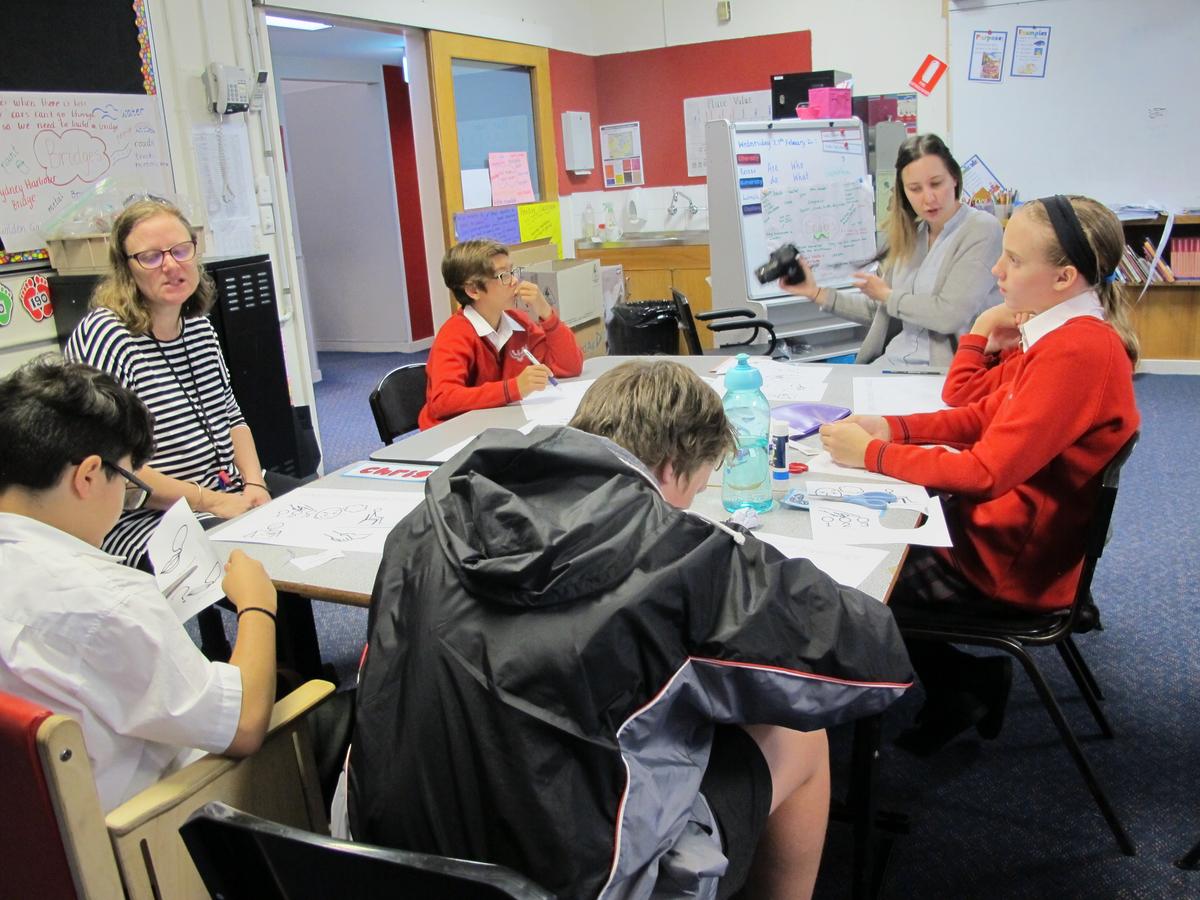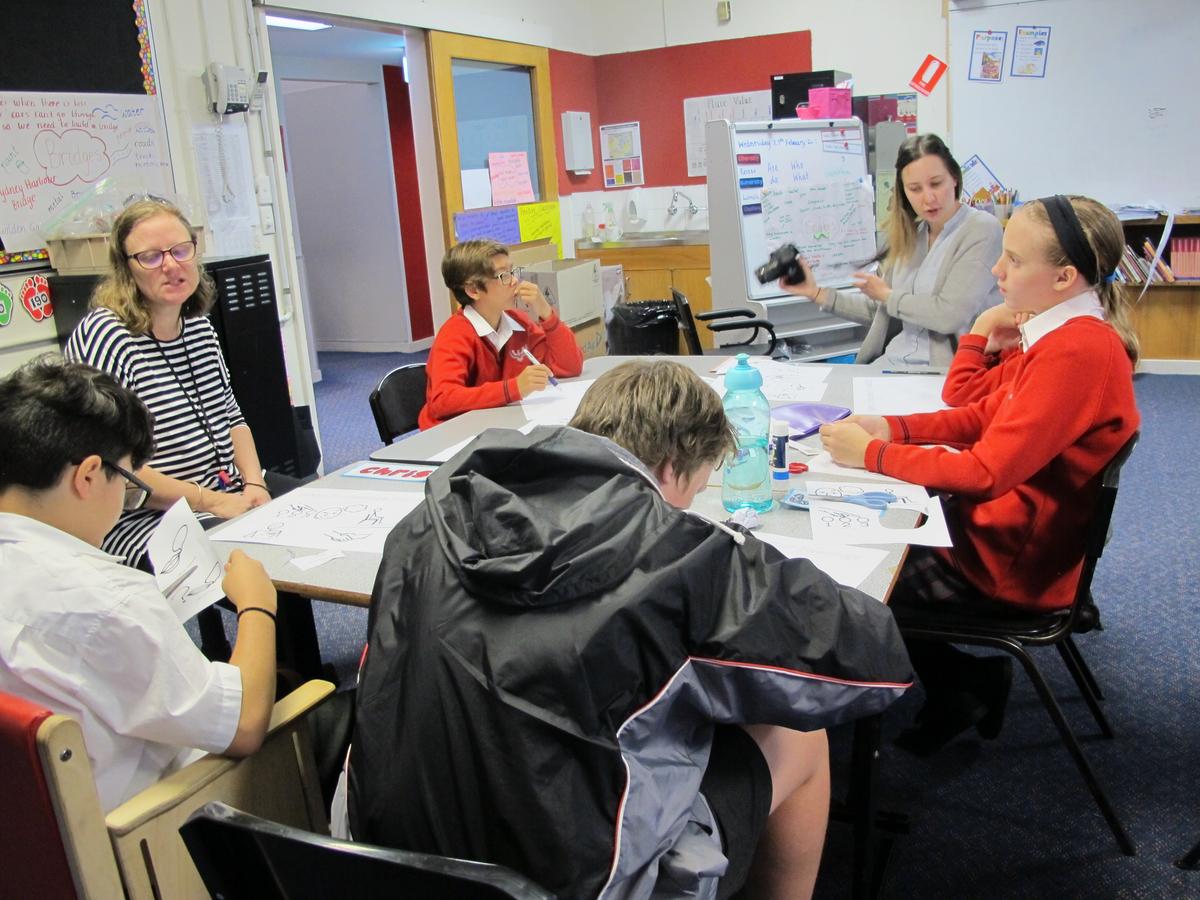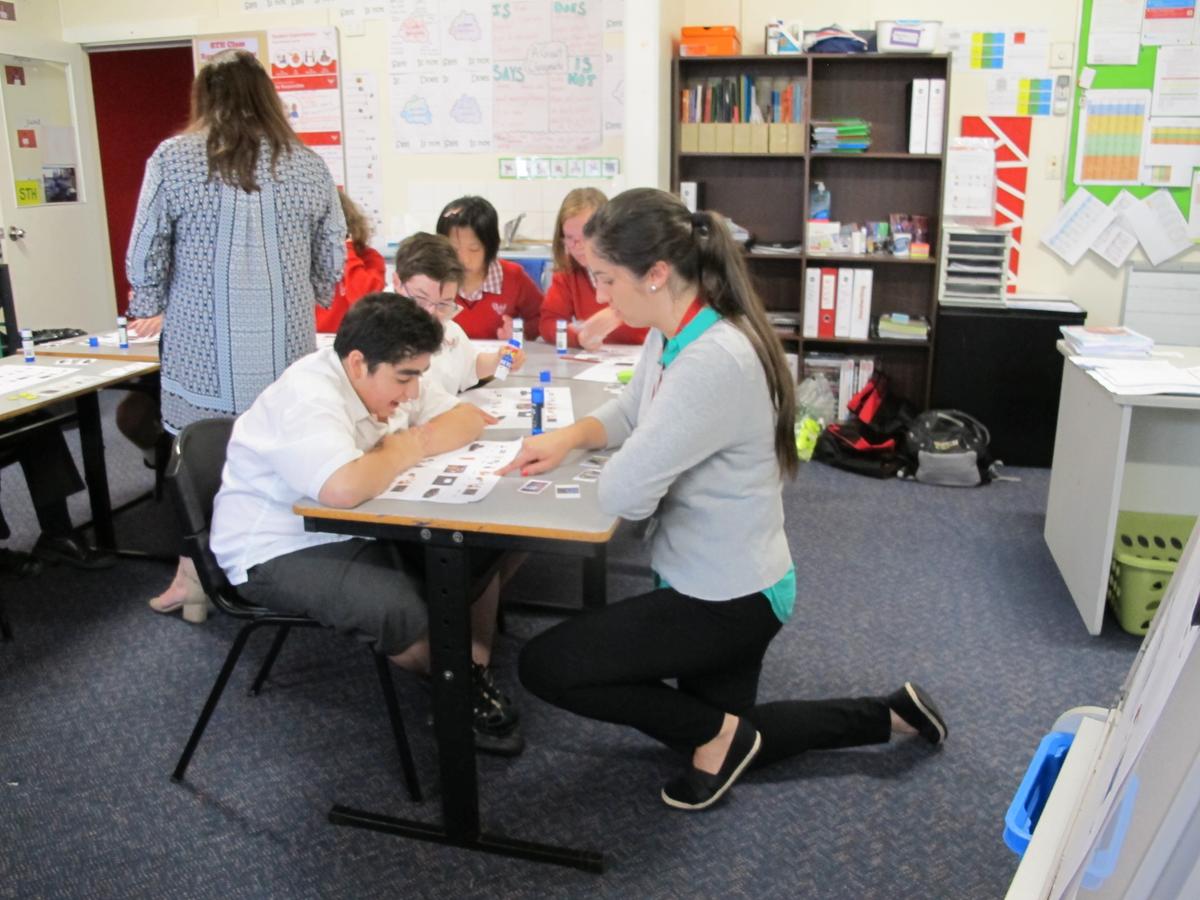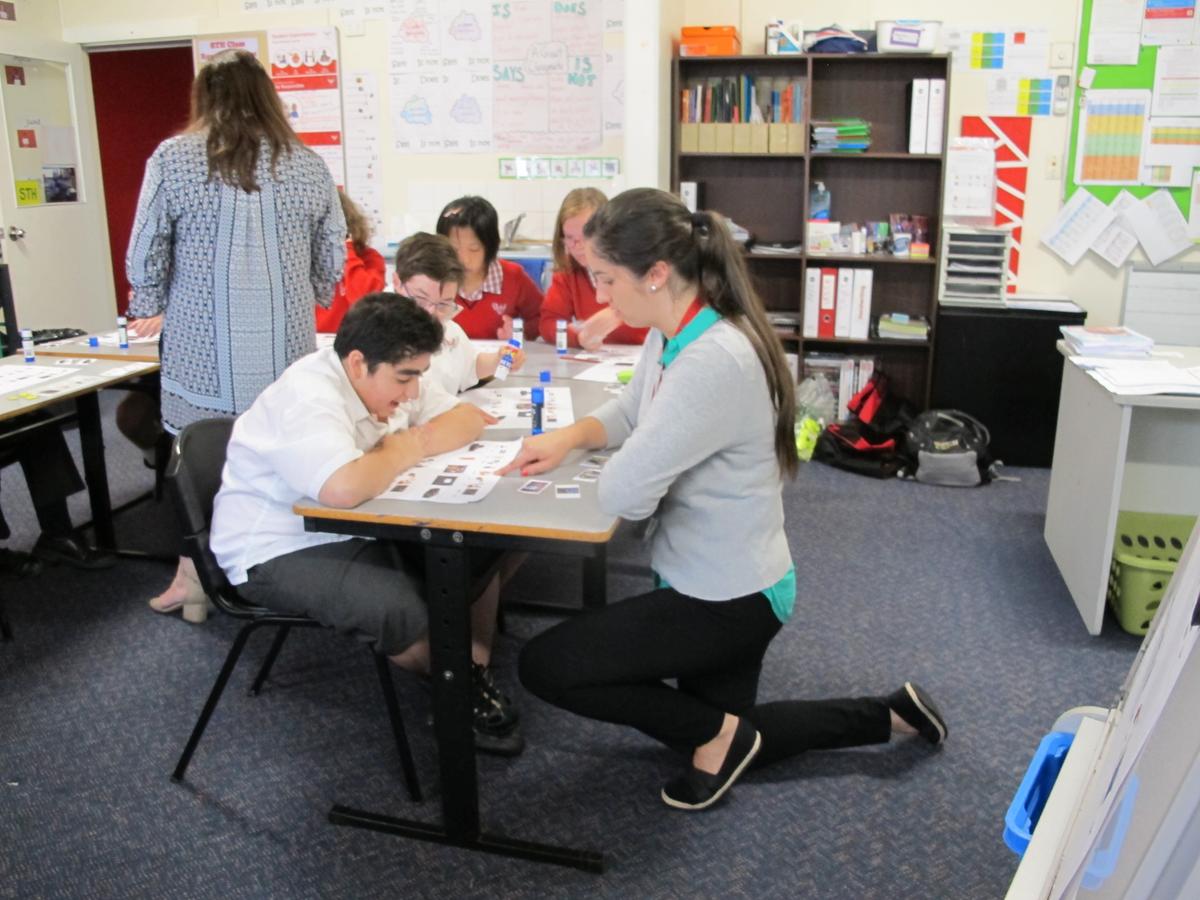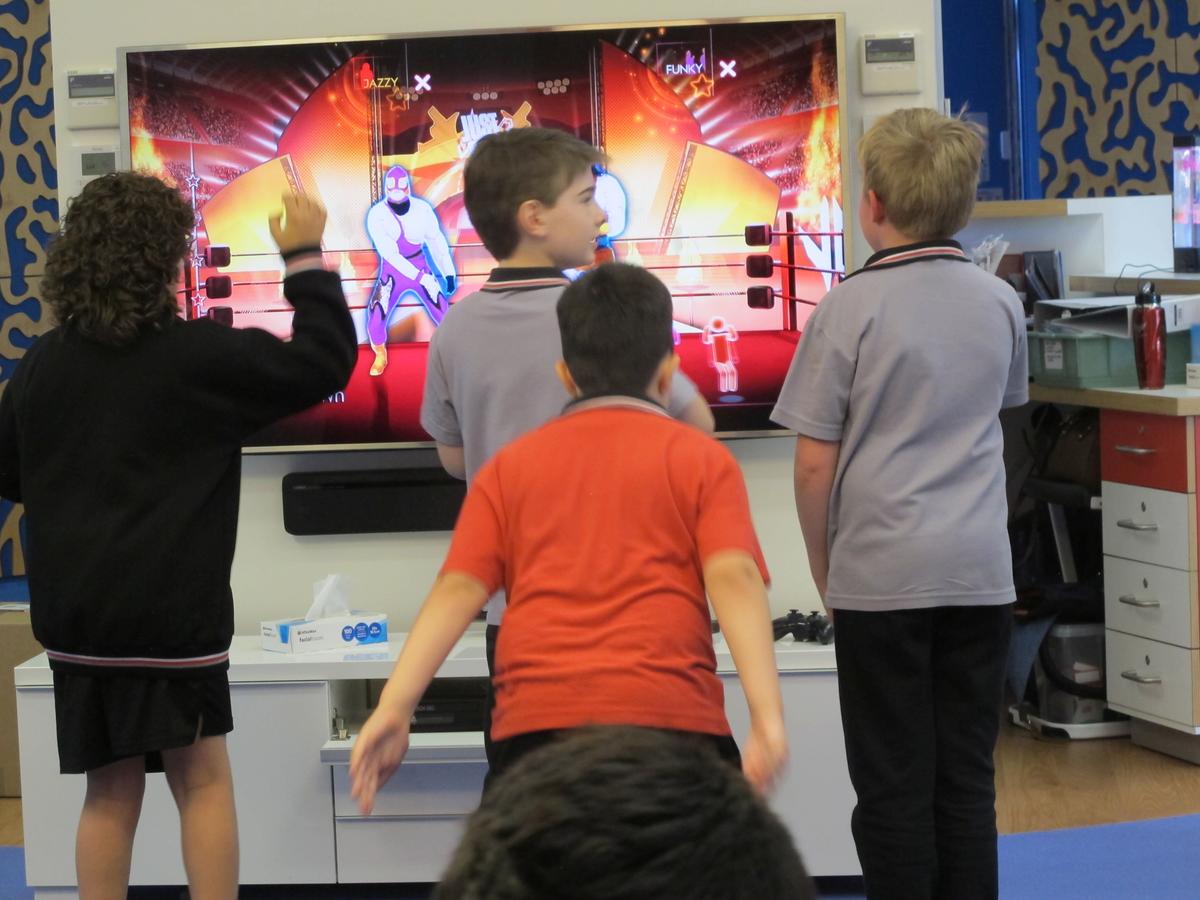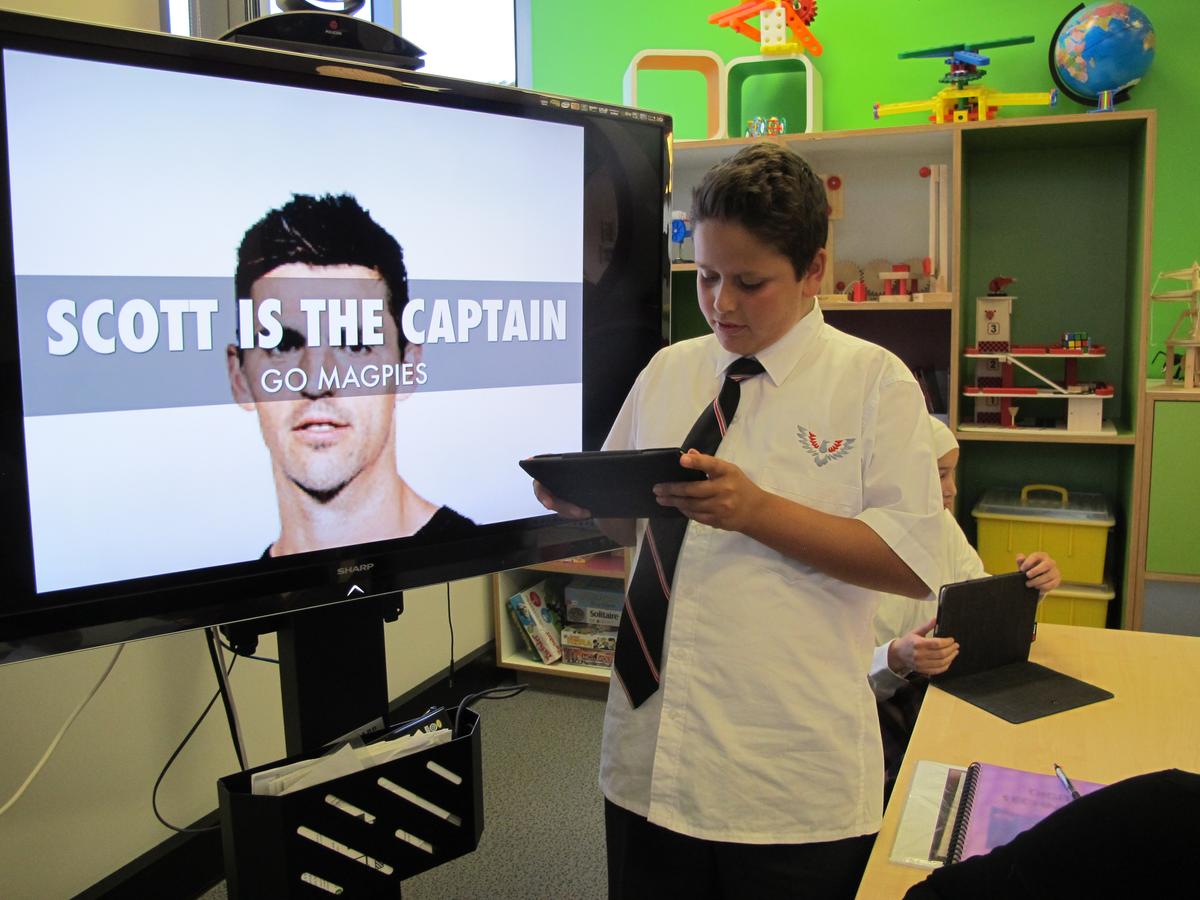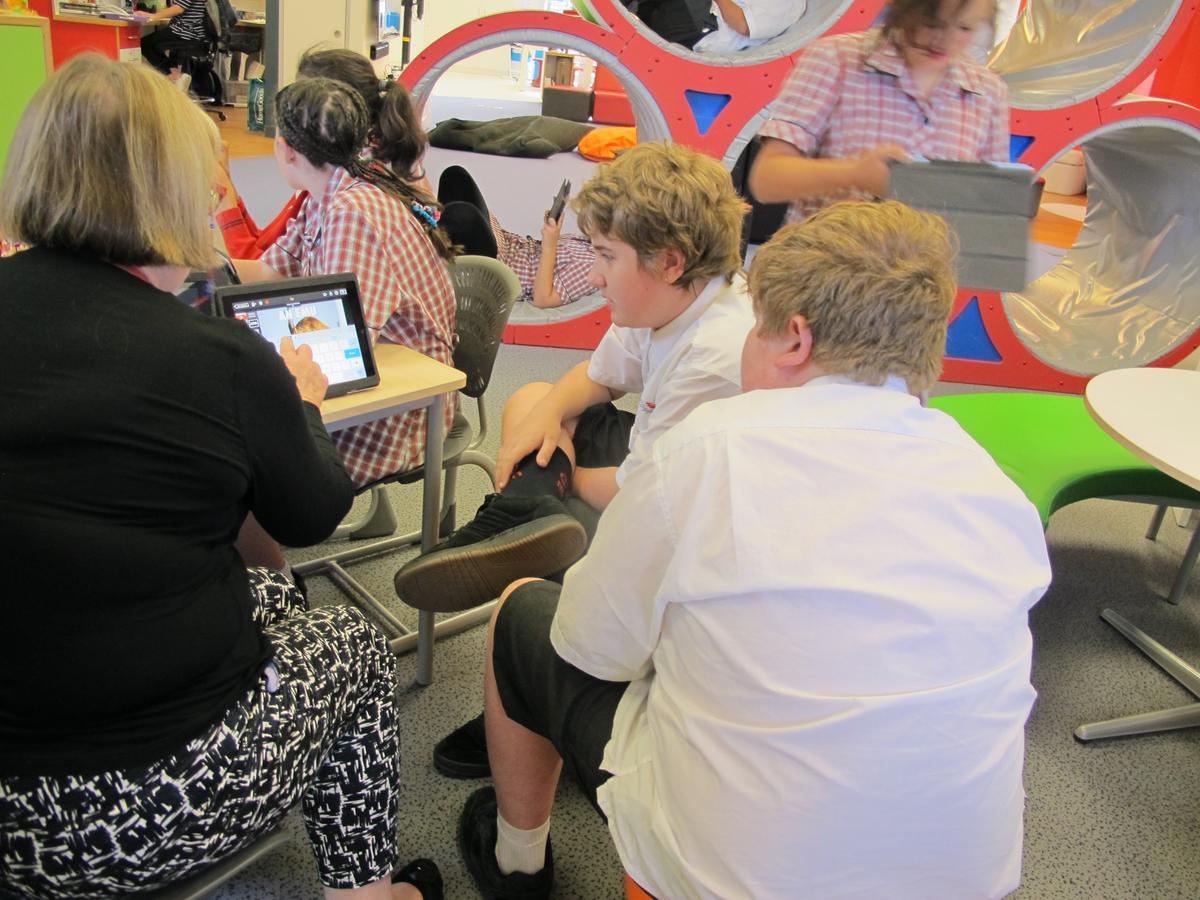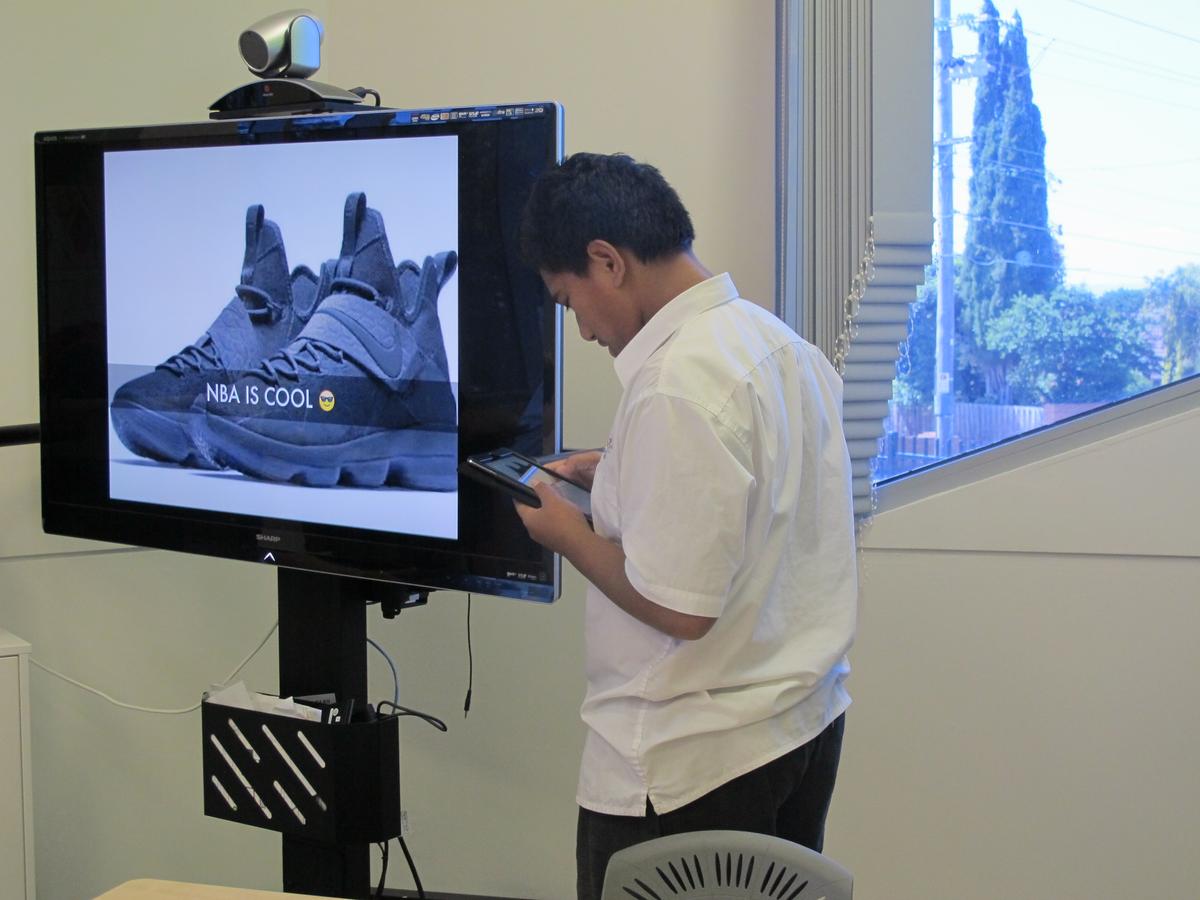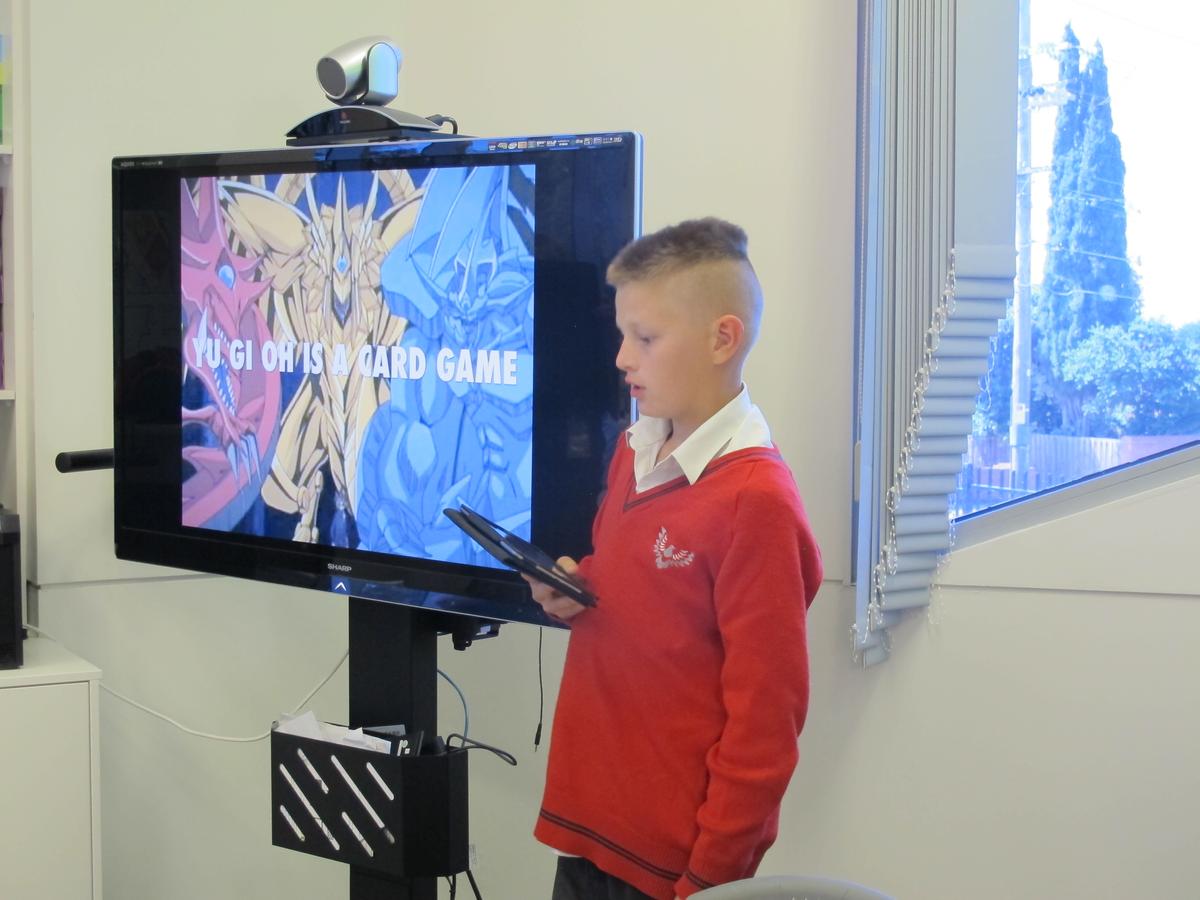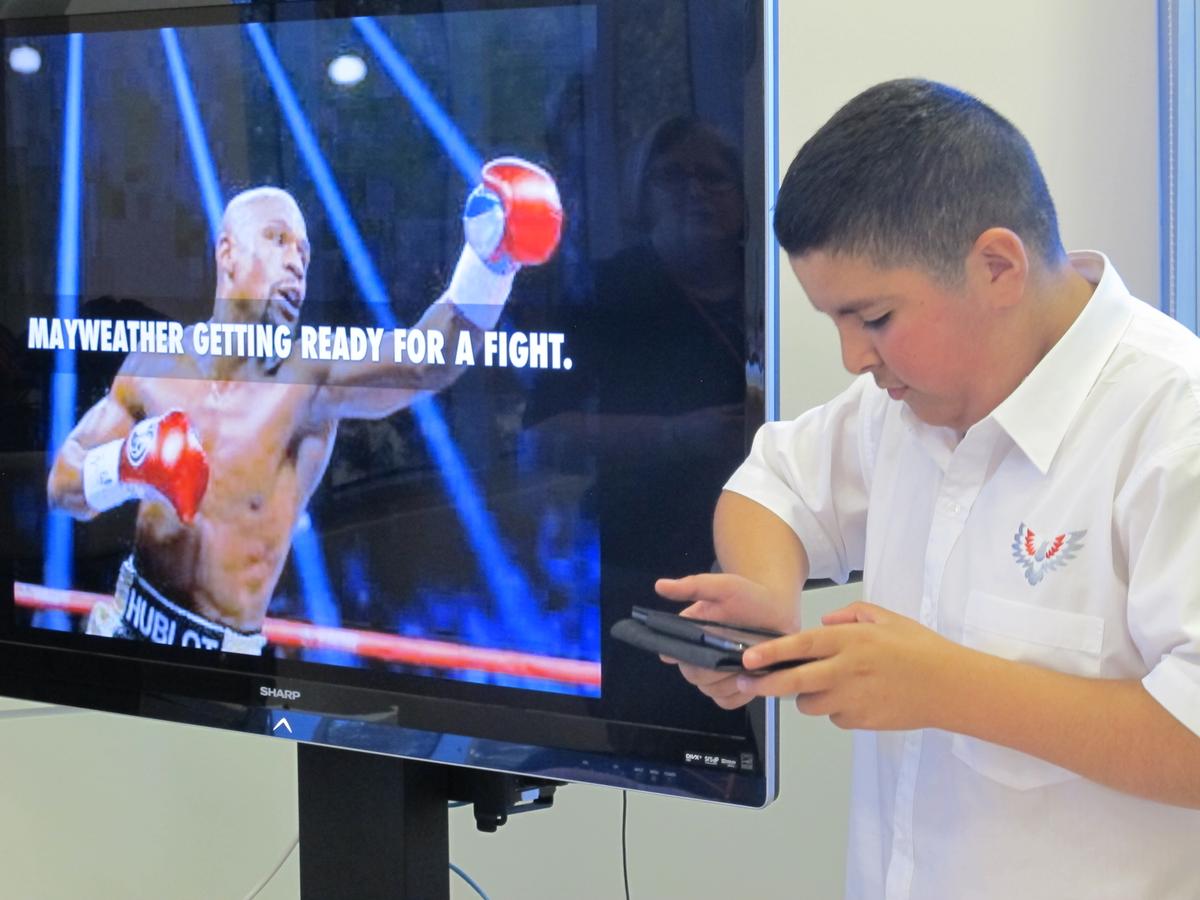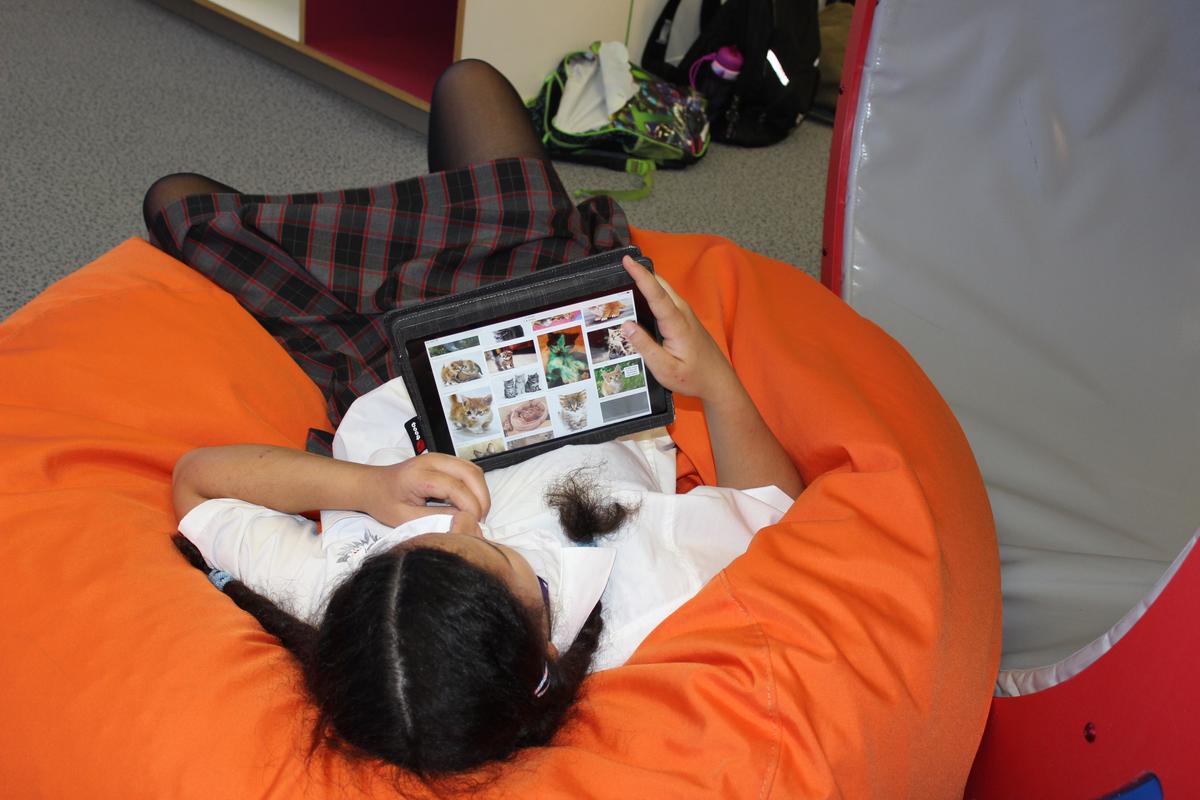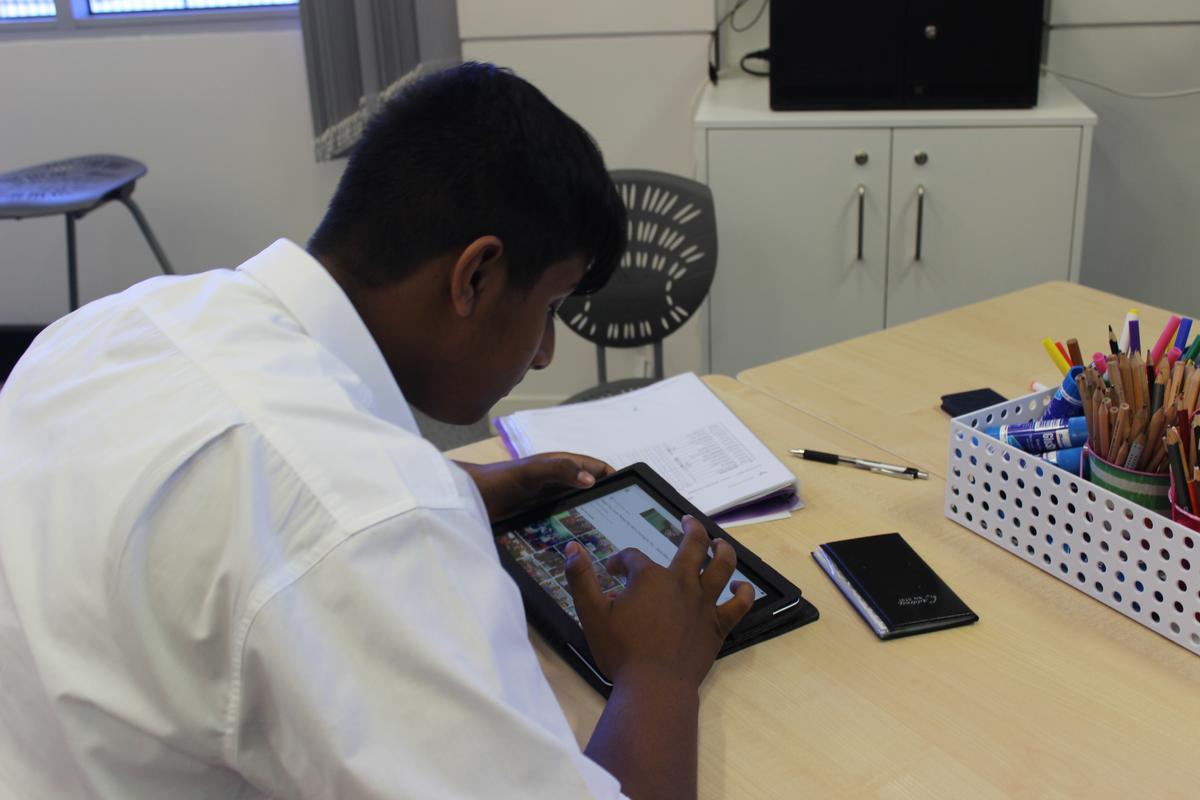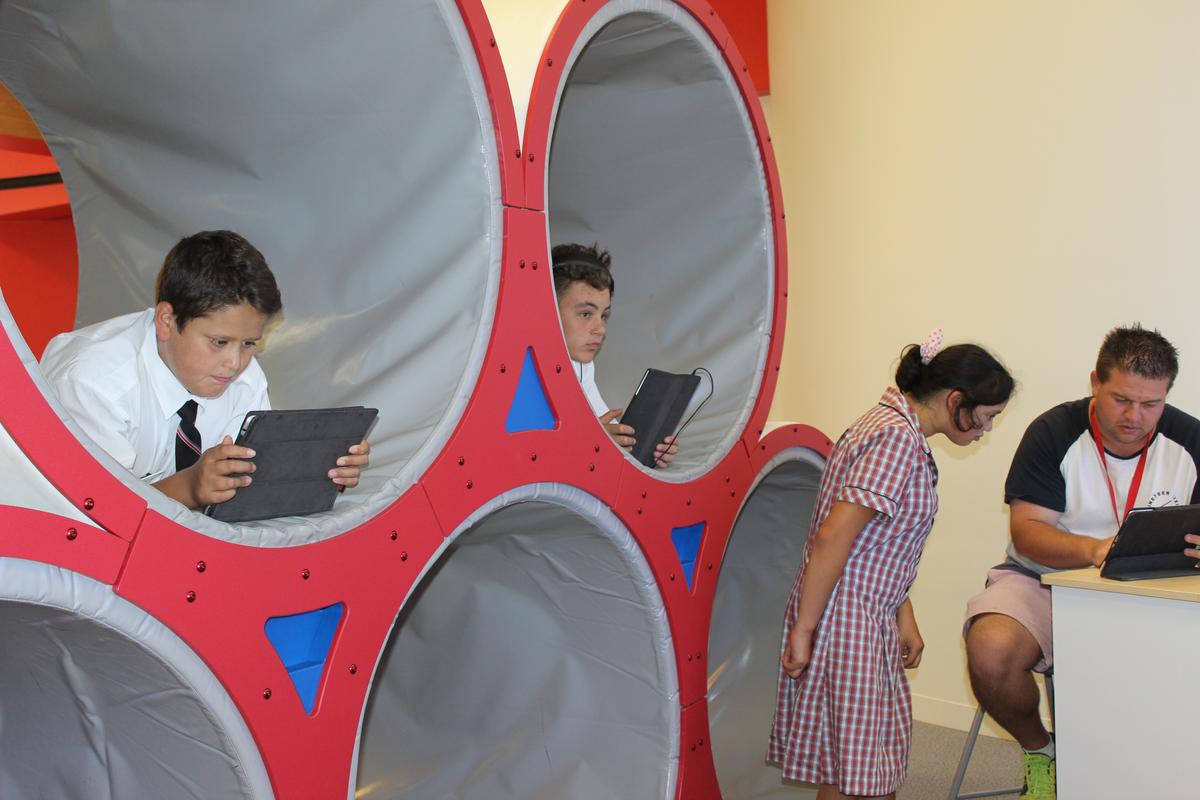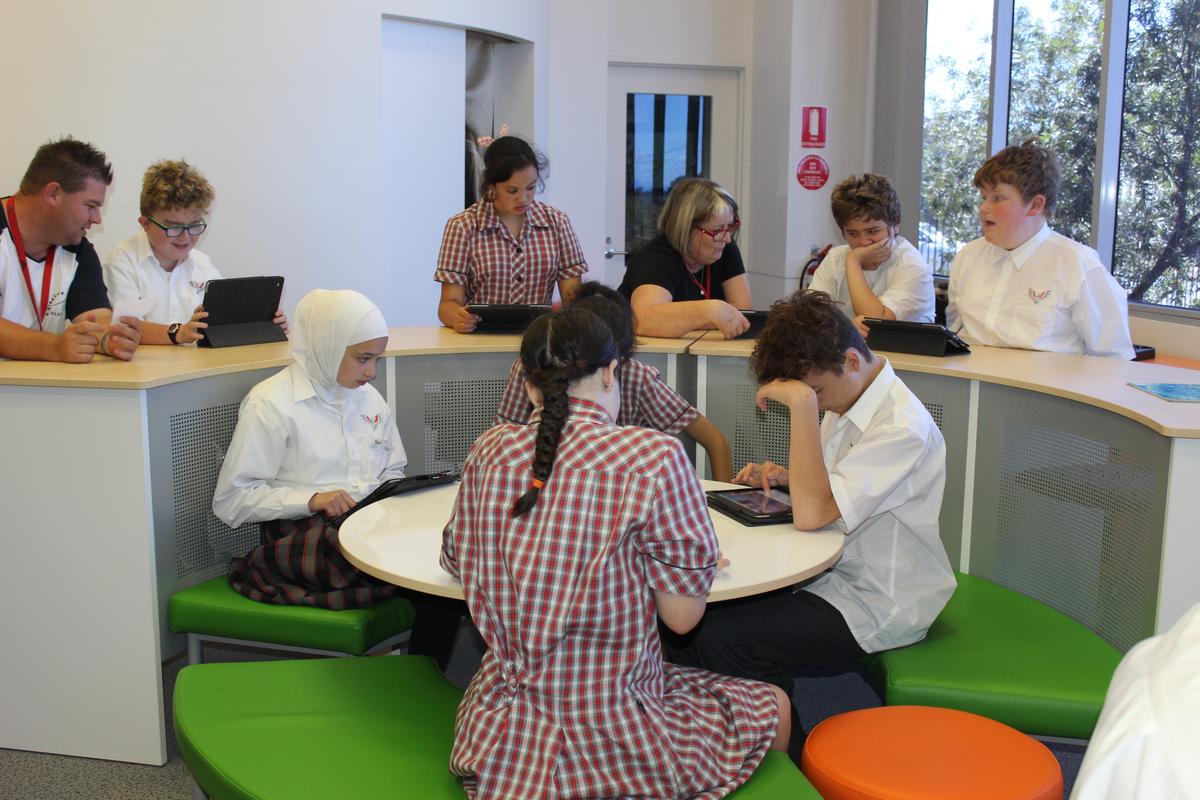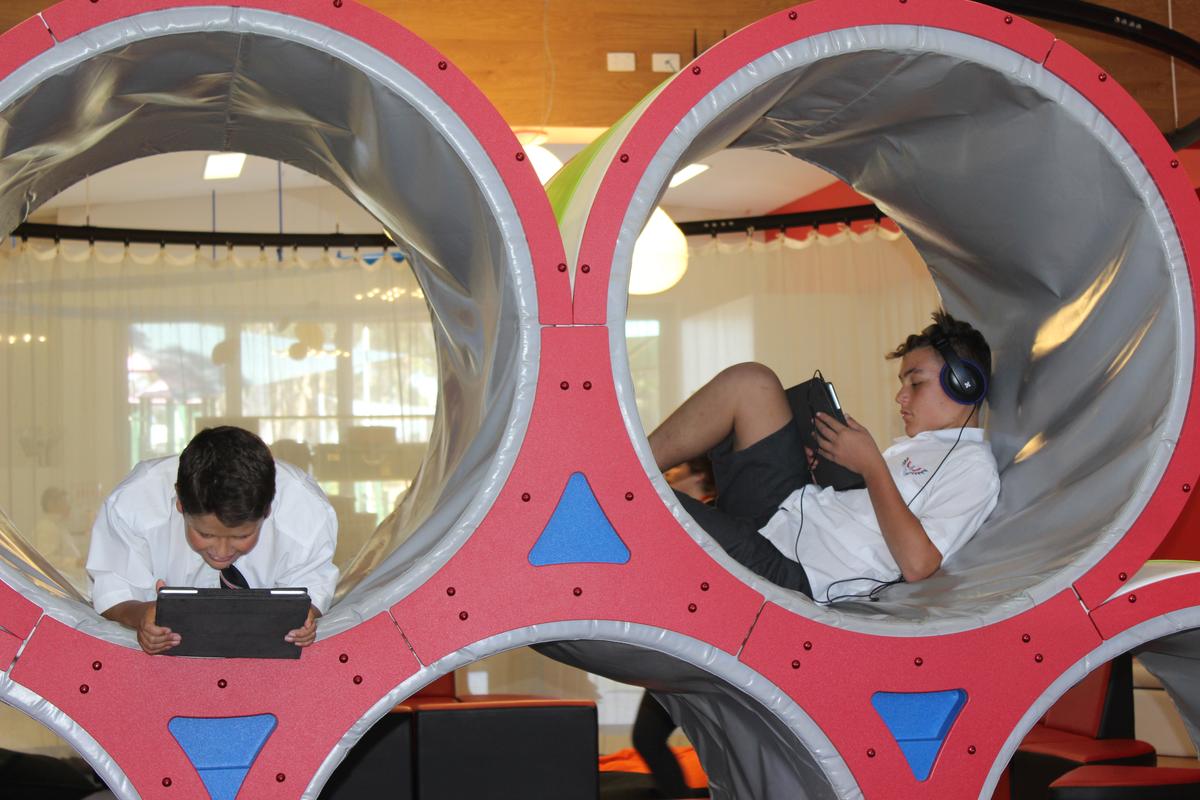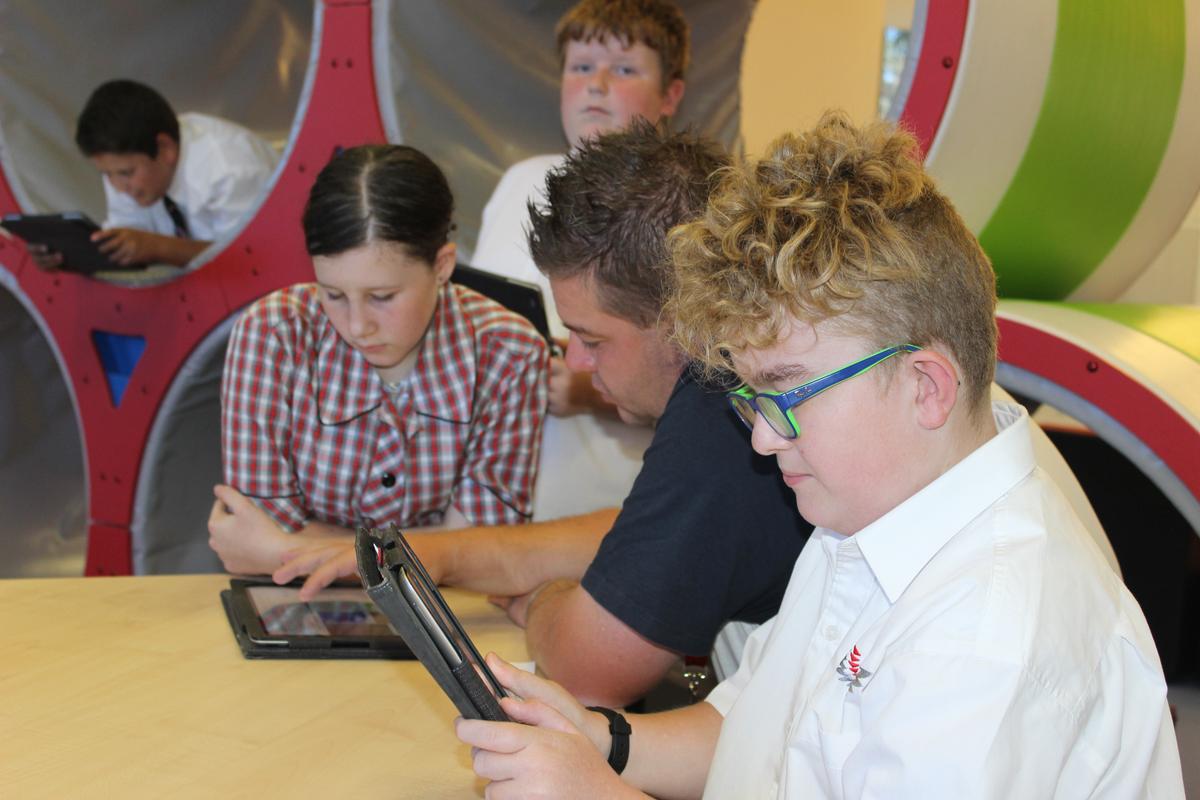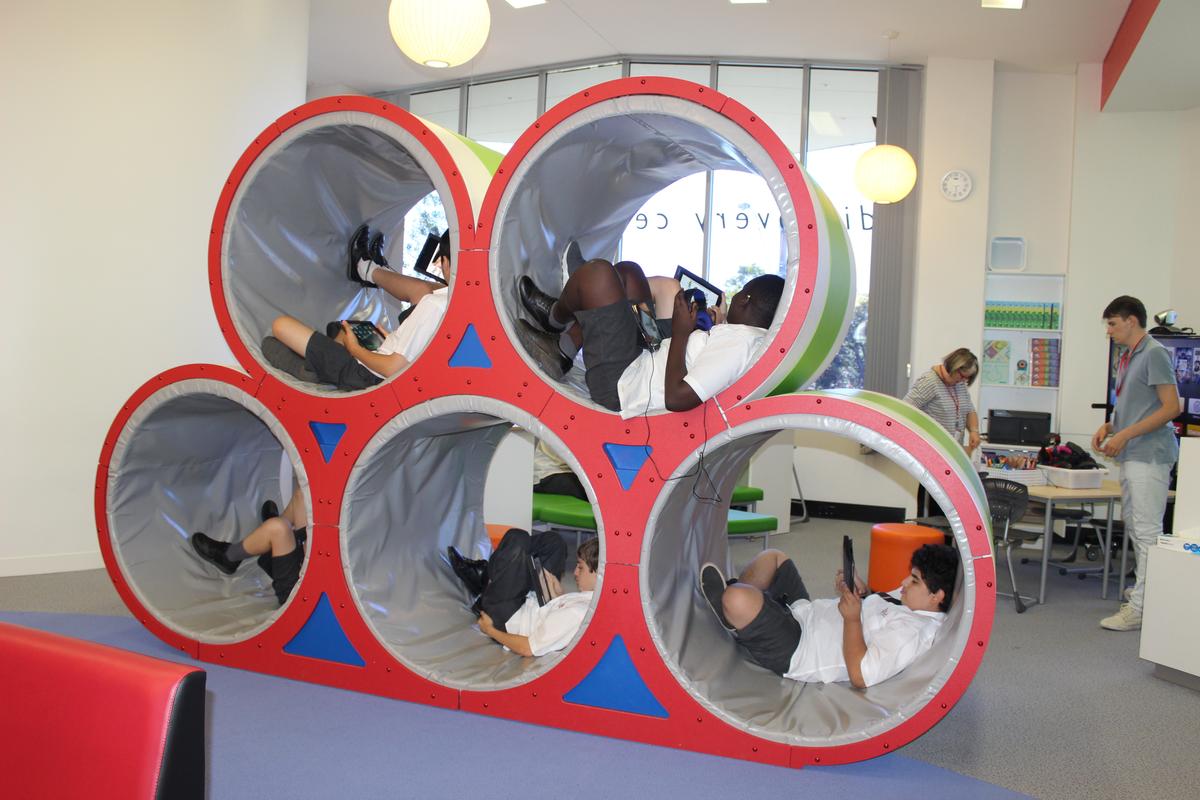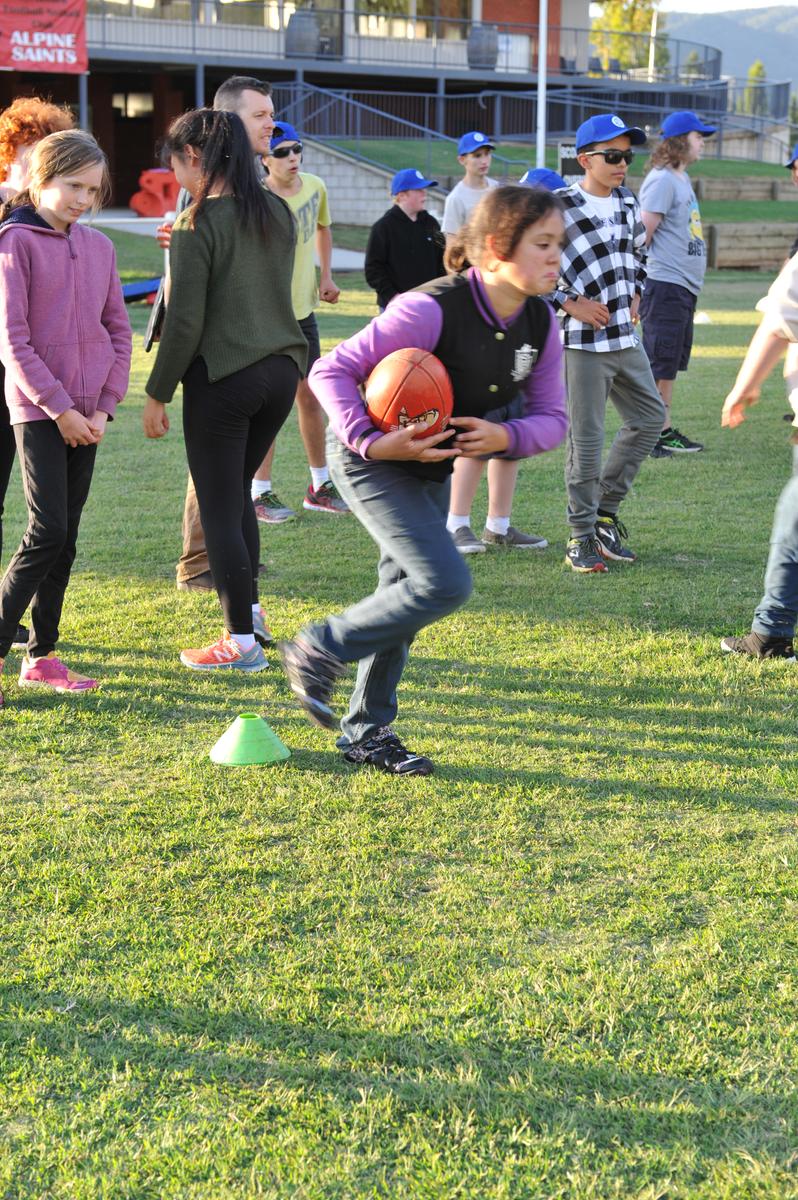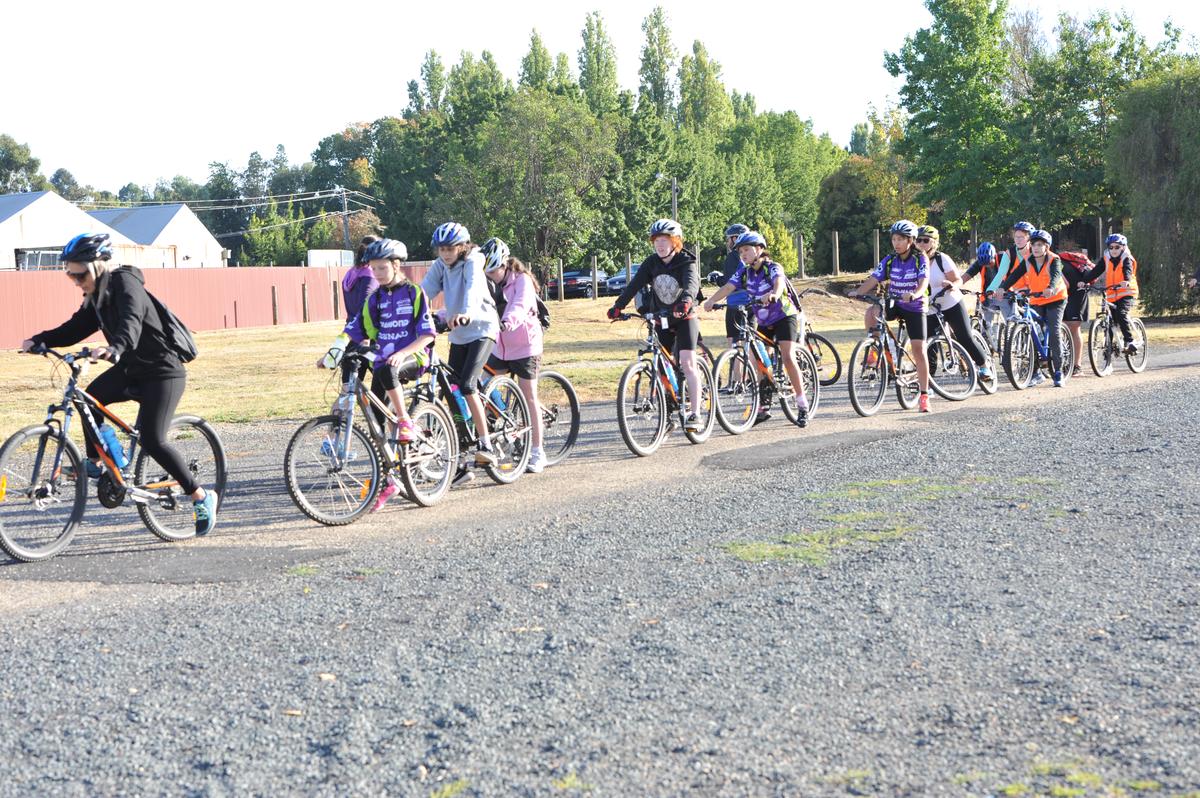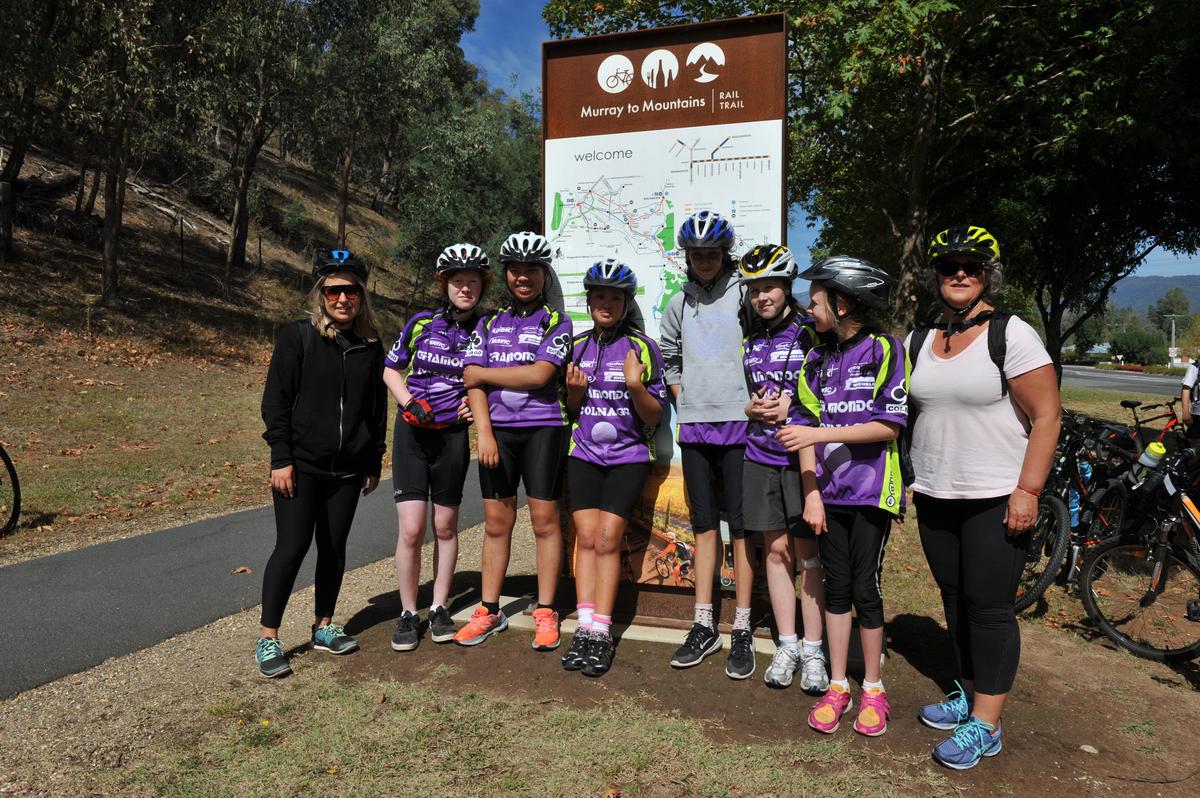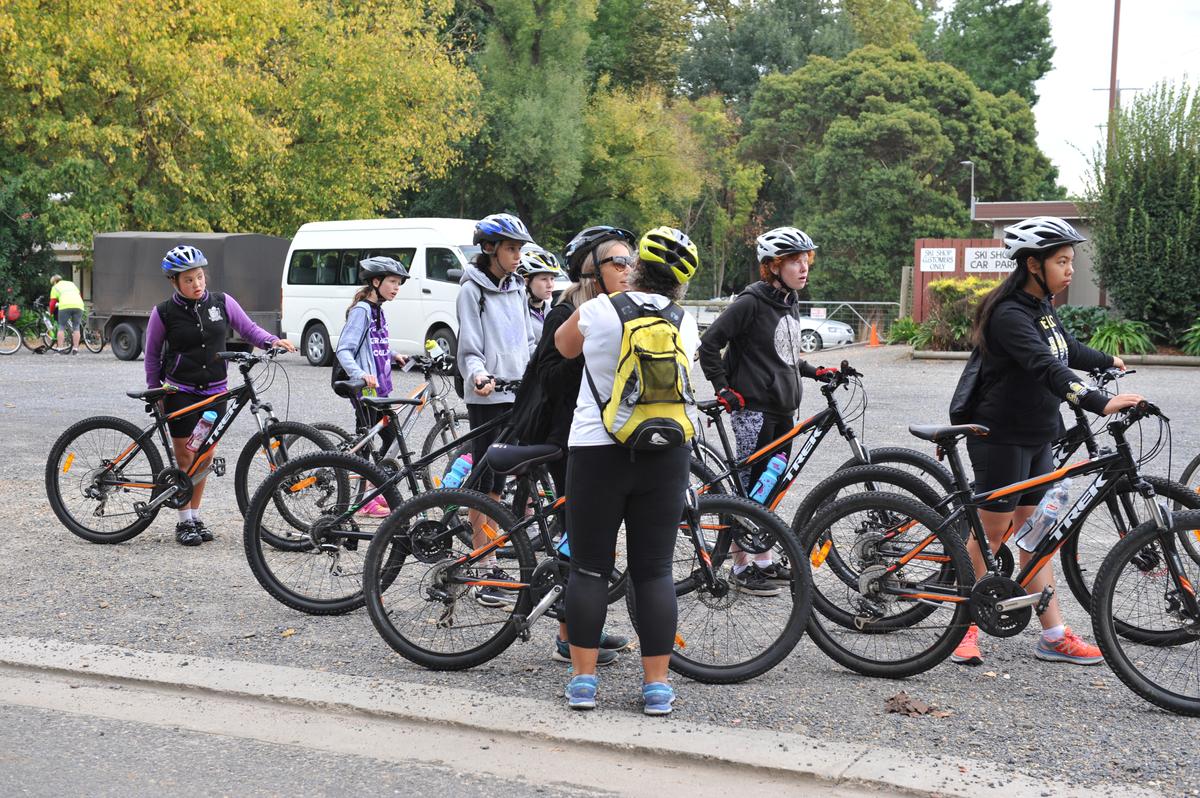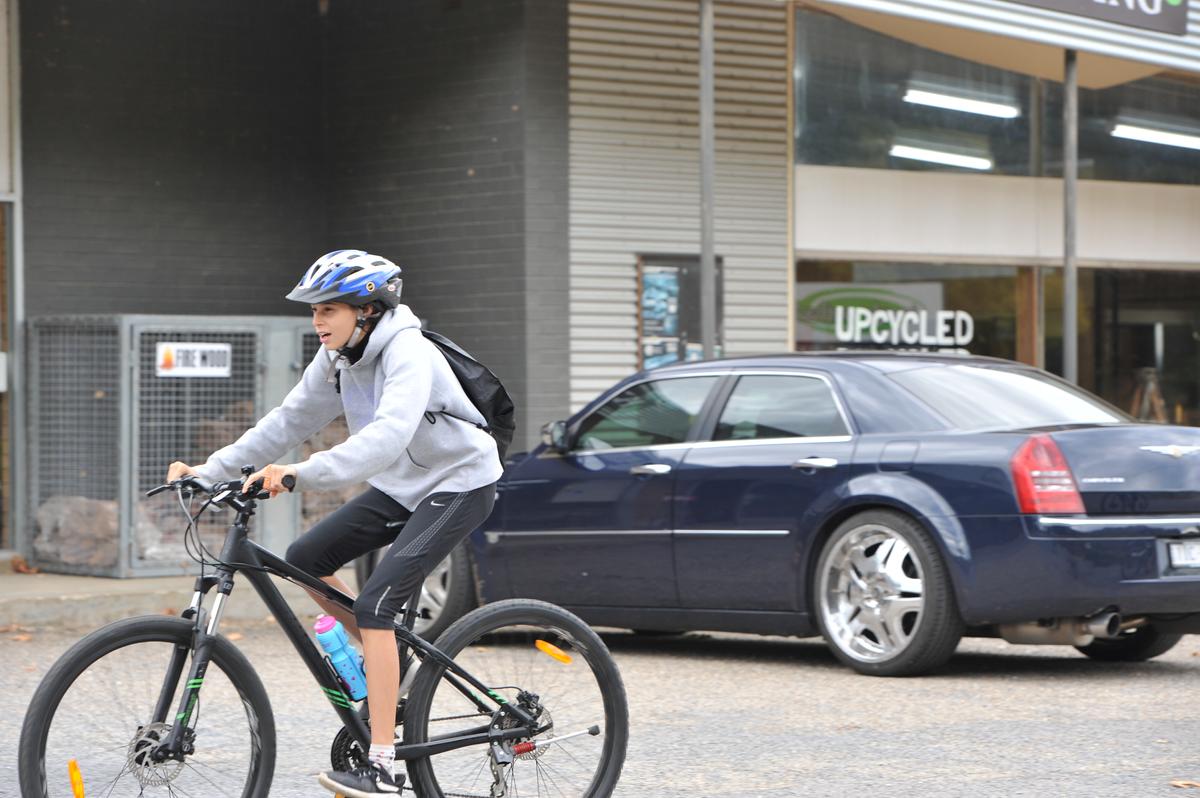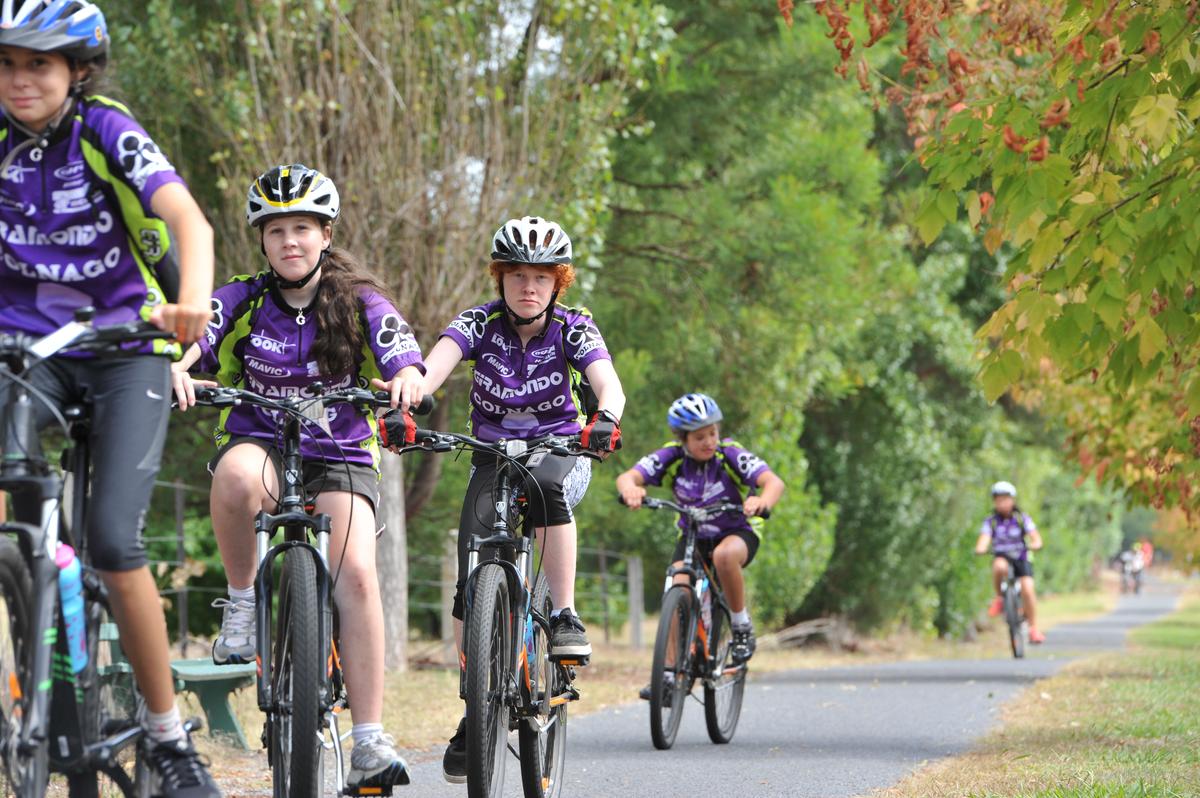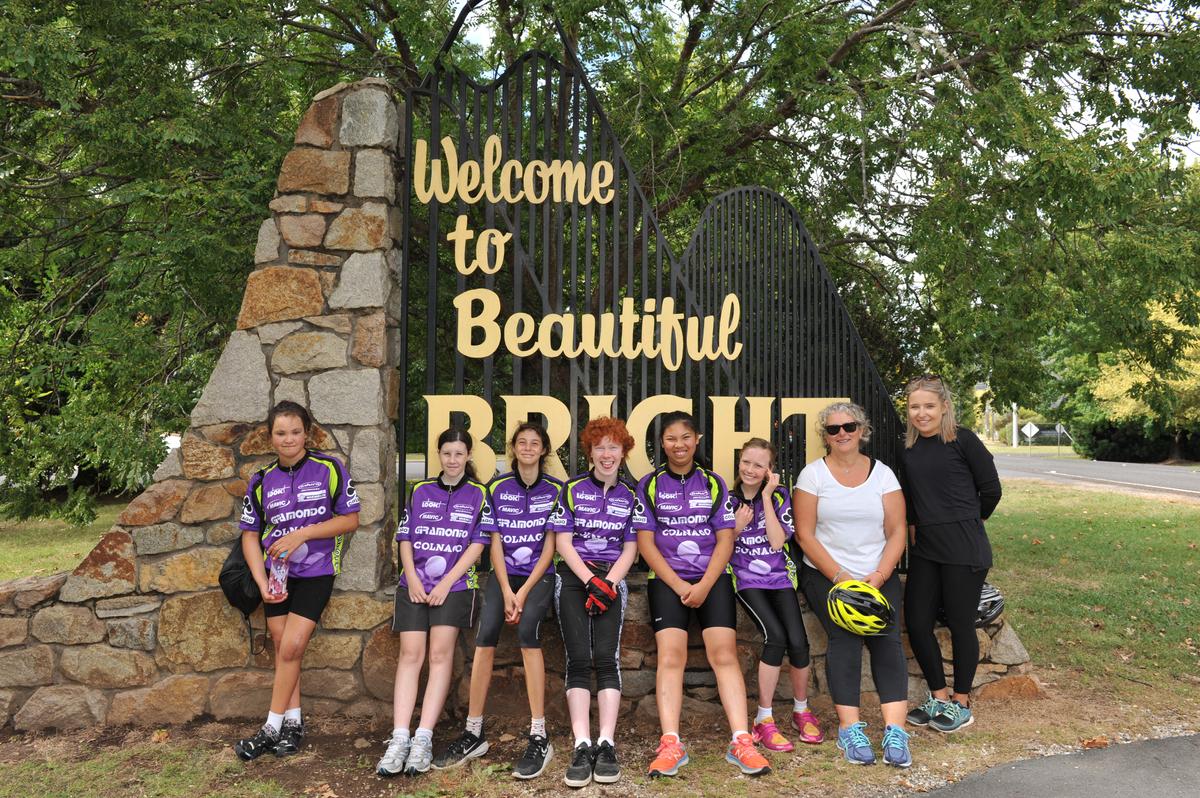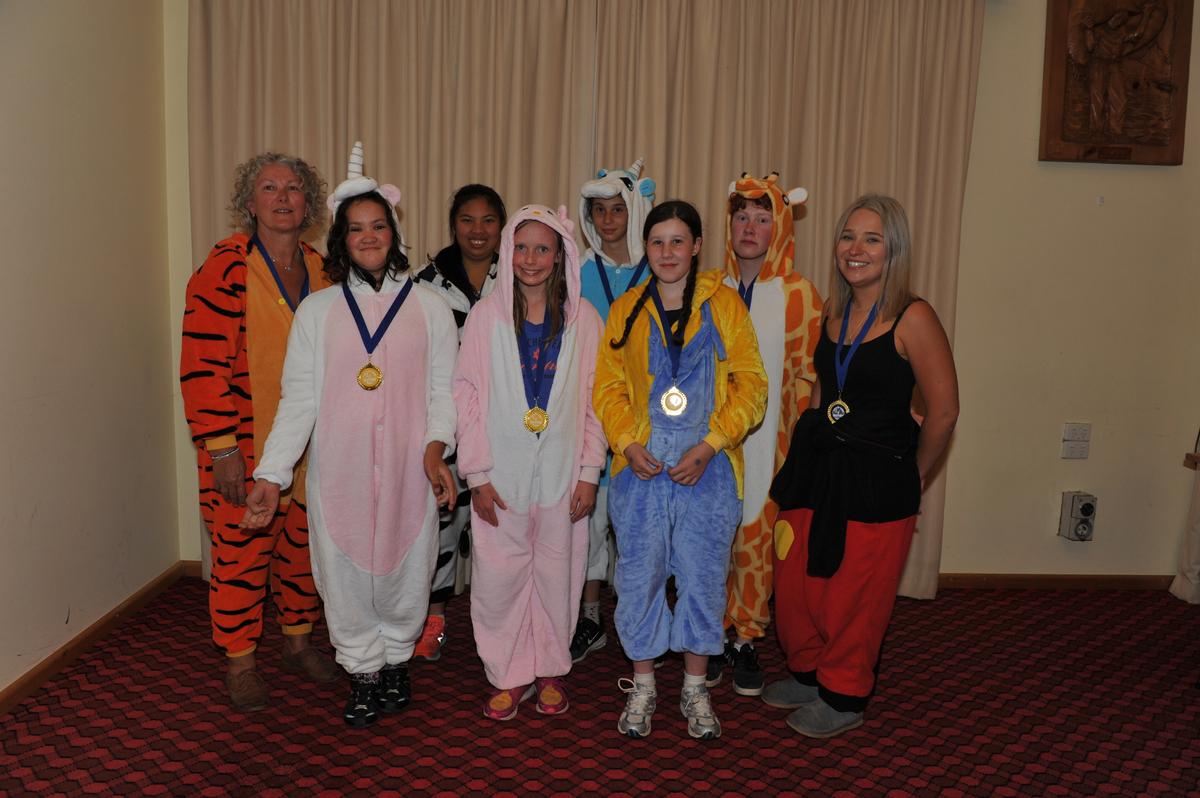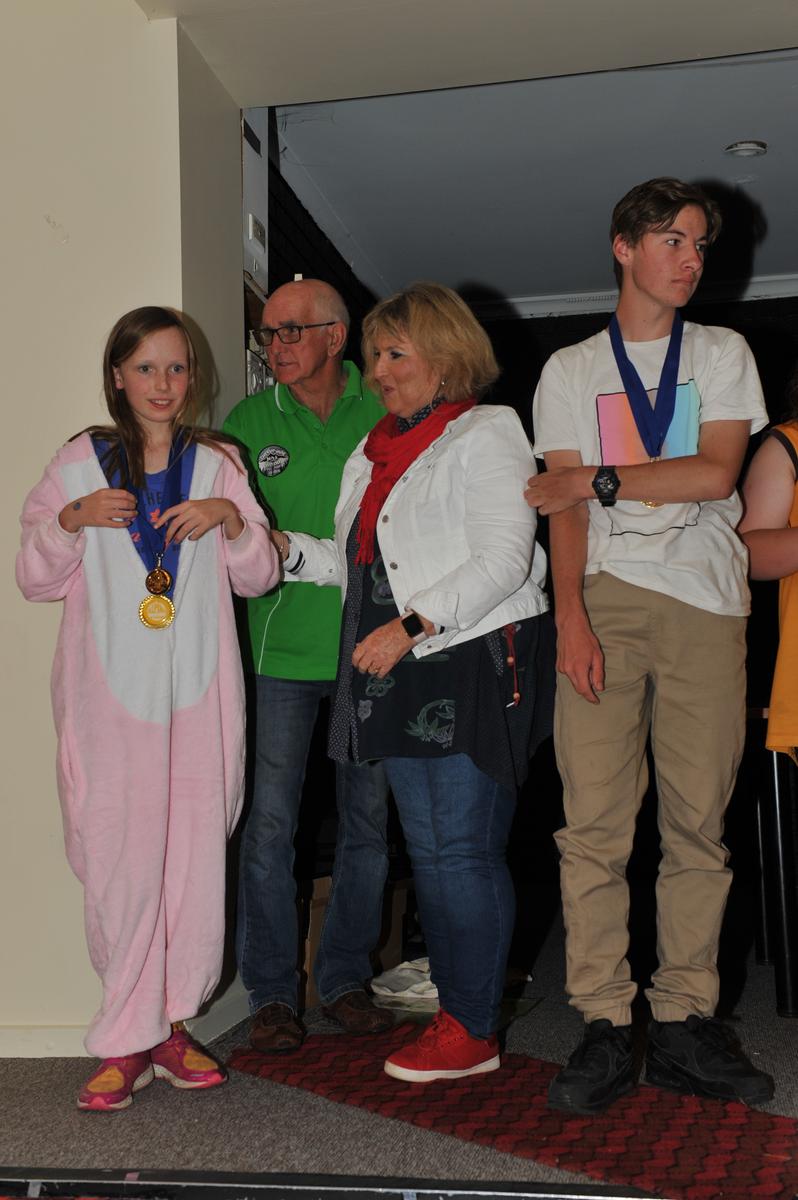Teaching and Learning
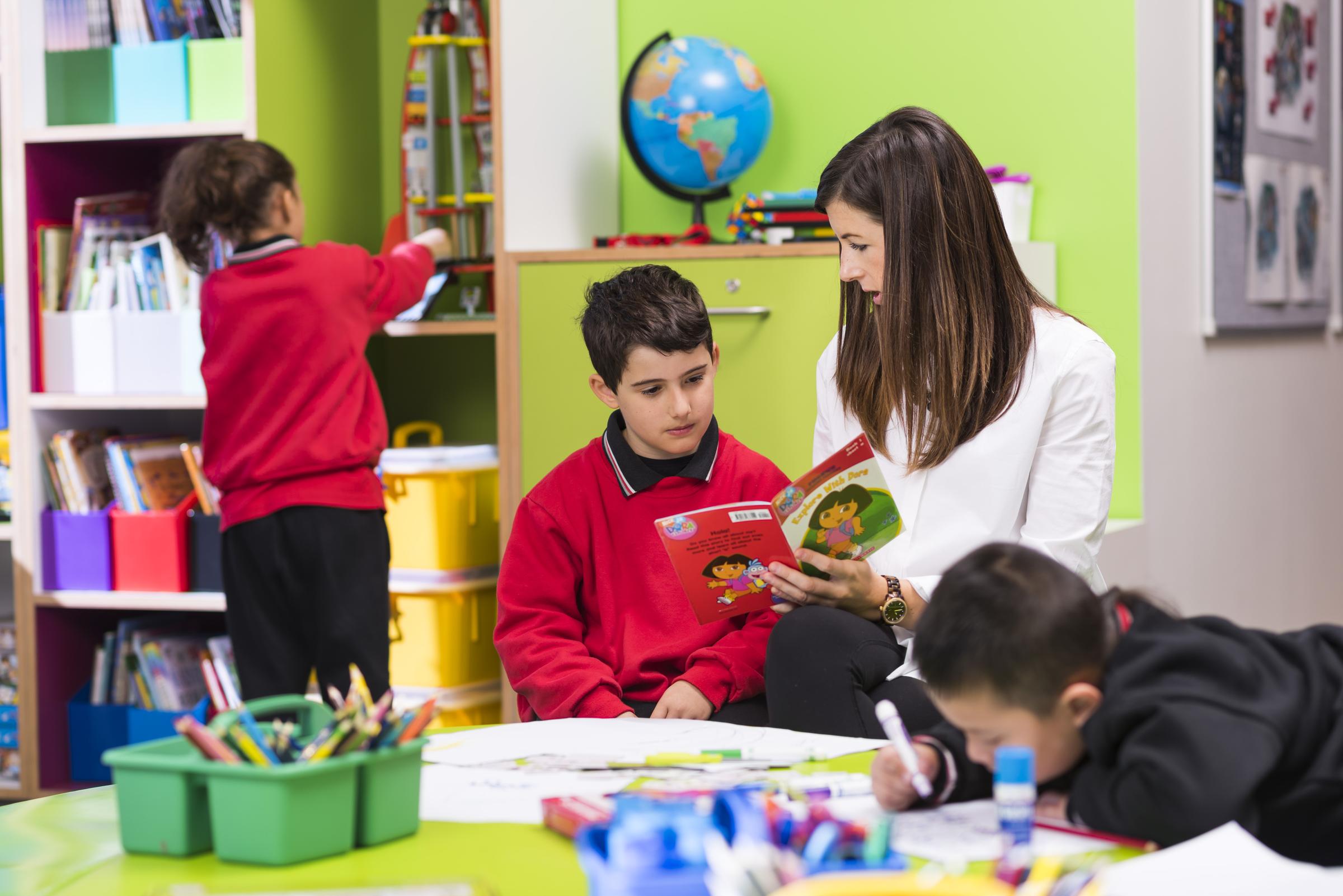
Teaching and Learning
An overview of highlights from last term (term 1) and a glimpse of what to expect in the next few weeks of term 2.
KEY HIGHLIGHTS OF TERM ONE
For the end of term assembly report I asked each of the section leaders to nominate three stand out highlights in their busy term one. Unfortunately I didn’t get a chance to deliver the entire report so here it is below. I hope you are as surprised and delighted as I was by the diversity and level of engagement demonstrated in these learning snapshots.
Lower Primary:
BIG Welcome Family BBQ – this attracted 250 students and their families
There were jumping castles, free face painting and a surprise visit from Gilbert the giant Gecko
- ‘The Stories of the Past’ Integrated Unit has a focus on family, cultures and celebrations (how families have different celebrations). Students have made their own Family Trees. Parents have visited the school to talk to students about how they celebrate special occasions such as Greek Easter, Chinese New Year and the Eid Muslim Festival Students are now beginning to understand that family stories that can be told through photographs, books and also by telling stories about their family and their own childhood.
- Mini Beast Incursion –This featured large stick insects, beautiful butterflies and beetles as well as wriggly mealy worms and much more. Students explored these unique bugs learning about their different features and characteristics as part of a library mini unit.
Upper Primary:
- Integrated Learning in the Discovery Centre. Students used the centre to investigate the first fleet.They explored journals and made their own to reflect Australian stories. They examined of early travellers and reflected on how they were used.
- Food Technology Students engaged in some scientific taste testing before making healthy salads, investigating seeds, fruits and flowers and measuring plant growth. They can now tell the difference between a fruit and a vegetable. They’ve created and painted small cement plant pots and planted seedlings. Finally they’ve applied all their knowledge to design a healthy meal.
- Electives Program- There were new exciting elective options (such as construction, cooking and technology), as well as a big range of popular traditional programs (consumer education, science, bike education, outdoor games, gymnastics at PIT, and fun fitness at Macleod YMCA
Secondary 7/8:
- PreCAL Section BBQ. Students worked successfully as a team when they surveyed and graphed year 7/8’s BBQ preferences. They researched the number of items in specific packaging (e.g. slices of bread, number of sausages) to determine which pack would be better value to purchase for the BBQ. Then they shopped, cooked, served and collected money for the end of term BBQ. It was so yummy! Luckily there seconds for hungry tummies!
- Captain Cook’s Cottage-Students visited the oldest building in Australia which was built in 1755 and moved from Yorkshire (England) to the Fitzroy Gardens in 1934 to mark the centenary of Melbourne’s settlement. Students stepped back in time by dressing up in 18th century costume and viewing the tiny cottage; locating antique chamber pots, candle holders and coal bed-warmers.
- Challenge Program This is a new initiative this year, in which, Golf as well as YMCA Fitness and Action Sports were very popular. Students are looking forward to moving from cricket to basketball next term.
Secondary 9/10:
- Immigration Museum-Students investigated the precious objects of immigrants from the last 100 or more by exploring a range of extraordinary suitcases. They have continued to learn more about the stories of immigrants to Australia through Discovery Centre displays and suitcases. Classes have created world maps tracking where their families came from.
- The number of students with Success Passes. Many students demonstrating Responsible, Respectful, Safe and Learner behaviours were identified and their names went into a draw for weekly assembly prizes. The winning students chose their own reward from a student developed list of worthy options.
- New STEAM programs have been very popular and exciting especially Strawbees, Polydon Bridges, Coding, and Kitchen Science. The aim of STEAM is for students to work well together with different groups of students to learn a new skill. They are challenged to solve problems that use mixed skills, particularly, maths, and science, technology art or engineering skills. They are creative inventors. A stand out example was the PreCAL students who made some amazing wind chimes. They looked at the science behind the sound the chimes produce and how light reflects off them as they move. They developed a design brief and then helped others to construct them. The Yr. 9/10 assembly presentation featured a dazzling array of other STEAM inventions.
Secondary 11/12:
- The Careers Expo was very successful with 24 providers and a good spread of students and parents accessing information and collecting show bags of sample programs and memorabilia to support their transition pathways.
- Y.12’s have been ‘getting around Melbourne’- They proficiently use public transport to access a range of cultural and social interest sites including the Chinese Museum, Hellenic Museum and St Kilda Beach as well as a tour around Flinders Street Station. Year 11’s have also been out and about exploring their local community and the year 11 assembly presentation featured some of their diverse venues and activities.
- Y.11s are gearing up for presentation ball- The girls visited Berendale School and chose some amazing dresses for the ball. The boys have also chosen their suits from Ferrari and they look smashing as well. This year there are 2 presentation balls, one each for the 11s and 12s
Mathematics
This term the first Number and Algebra content focus for Mathematics is ‘Addition’. It is not always about getting the “answer” but understanding that addition means combining objects or numbers and that the quantity is bigger. Initially teachers will be looking at more or larger as concepts and this will graduate to solving addition equations of one to five digit whole numbers to two decimal places using efficient strategies. Most activities will be supported by concrete materials so students can manipulate them to develop their understanding of addition.
For students to gain confidence with addition they need to develop a range of efficient strategies that are based on number relationships and reasoning. Early counting strategies involve counting out loud, touch counting, move and count, line up and count and count on. You can help your child solve addition problems using count on from the largest number as a strategy. For example, if you’re adding 4 and 3 ask your child to identify the larger number, then ask them to put the 4 in their head and count on-5,6,7. Another example of an efficient strategy for addition includes doubles and near doubles. Using the same addition problem 4 and 3 demonstrate ‘Think Aloud’ by saying to your child I know 4 and 4 is 8 so 4 and 3 is one less than 8 which is 7. Some more efficient addition strategies (such as bridging to ten,hop on,split and compensation)
You can help your children with grasping addition strategies by giving them authentic reasons to add e.g. verbal action stories that involve joining- I have 4 spoons here and 2 more for the dinner table how many is that altogether? Learning the different ways you can make ten (i.e. the rainbow facts) can help students become more fluent with bridging strategies. Over the next few weeks of term, find out the current addition strategies the class and/or group is practising and reinforce those at home. It always best to consolidate the simpler strategies before launching into the more complex reasoning strategies.
For the first 6 weeks of this term students are studying ‘time’. The content covered varies according to the students’ point of need and may include the following sequence:
- identifying events that take place at different stages of the day
- identifying days of the week in sequence
- comparing and ordering the duration of events
- connecting days of the week to familiar events and actions
- telling the time to the half hour
- describing duration using months, weeks, days and hours
- telling time to the quarter-hour, using the language of 'past' and 'to'
- naming and ordering months and seasons
- using a calendar to identify the date and determine the number of days in each month
- telling time to the minute and knowing basic units of time; 60 minutes in an hour, 60 seconds in a minute etc.
- using am and pm to solve simple time problems and
- converting between units of time and calculating duration
You can assist your children with learning about time by including them in conversations about: what they are doing during the day, the length of programs/cooking times and how to read the clocks on various devices. On the weekends engage children in planning an outing that involves looking up travel and event timetables and scheduling the day’s events.
Literacy
For the next three weeks, students will revisit effective comprehension strategies. They will be working intensively on developing key strategies to support their understanding of texts. At the start of each reading session students will be orientated to the text; they will explore images, words and phrases, make predictions and use prior knowledge to make connections with the text.
Teachers will structure modelled, guided and independent reading comprehension experiences each week to build students’ literal, inferential and evaluative skills. Literal strategies will range from reading pictures, sequencing text and retelling stories to summarising, checking for understanding and asking questions. Inferential skills may include; making connections with text, predicting and visualising, inferring and comparing and contrasting. Finally, evaluative strategies challenge students to critique text and think deeply about the author’s purpose. All students will be working through these elements of comprehension at their point of need.
Throughout the reading of the text students will be strategically prompted to ensure that they are able to follow and understand what is being said and/or inferred. As students’ mature, they will be guided to self-monitor their comprehension skills and reflect more on the author’s craft and form opinions about the text.
You can help your child with their comprehension strategies by asking them a range of questions about what they have read or viewed at home. Ask questions that encourage your children to talk about what they have read and that demonstrate their reading strategies. Questions such as: What was your favourite part? Tell me about the characters. What do you think will happen next? Where did the story take place? What do like/ dislike about this book? Show me where that event took place? How do you know the boy was happy/worried? I wonder what would have happened if……?
Spending quality time with your child reading books, newspapers, magazines, comics, music lyrics, poetry, junk mail, and accessing information on the Internet will create a purpose and interest in reading for pleasure. Don’t forget to read aloud what makes you laugh and share it with your child.
In writing this term, narrative genre is revisited. A narrative tells an imaginative and/or a real story. Many classes are creatively linking their writing content to their integrated learning. Students are examining the elements of a narrative text; the characters, setting, problem and solution. They are identifying the parts of a story in terms of the beginning, middle and end and discovering that the problem can often be found in the middle of a story and the solution to the problem at the end of the story. Many classes are using anchor charts to help students organise story elements in preparation for writing. Some Upper Primary classes have explored characters through drama. These students have had fun dressing up and role playing a character before being photographed in the TV studio. Back in class they have used their prior knowledge about characters to co-create a list of inside and outside features of a character.
Parents can help their children with writing by viewing, reading and telling interesting stories together to build their vocabulary and knowledge of narrative text structure. Prompt your child to retell a familiar story with a different twist; a new ending, a different character or an alternative story problem/solution. Provide many opportunities such as sending letters and cards to friends and relations, writing emails, keeping a diary, publishing personal stories, labelling photos in the family album, and leaving notes. Facilitate relevant and meaningful writing rather than writing for the sake of writing. Give your children opportunities to read their stories aloud (while you sit back and listen). Listen with a focus on the message they express. Comment on what they have done well, for example: ‘I like how you started your story. Read the first sentence again.’ ‘I enjoyed how you used interesting words such as….’
Social Competency
Across the school all students are focused on relationships. The specialist Social Competencies teachers Liz Portelli (Watsonia Campus), Courtney King (mostly Upper Primary, Secondary 9/10 and 11/12) and Bec Campbell (mostly Secondary 7/8) lead our Social Competencies curriculum content and practice each week. Classroom teachers consolidate this learning in further sessions throughout the week.
All students are exploring the meaning of ‘relationship’. The primary students are concentrating on safe family members and school friends. They are identifying immediate family or carers and describing their key features and roles. Last week Upper Primary students acknowledged people they came across each day that they know and don’t know. They drew or selected pictures of their school friends and discussed and recorded appropriate friendship behaviours. Over the next few weeks Upper Primary students will collect family photos so they can co-create a social story of their family.
Initially the focus for Secondary 7/8 classes was revising recognising, reacting and reporting when they feel unsafe. They investigated what makes a situation safe/unsafe, they recognized body warning signs associated with feeling unsafe and explored helpful ways they could react if they feel unsafe. Also they identified trusted adults who would listen, believe and act to help them in an unsafe situation.
Secondary year 9/10 students are focused on identifying immediate and extended relationships and their associated appropriate behaviours. They are looking at a broader network of relationships such as family, friends, acquaintances, boyfriends/girlfriends, teacher and community/respite. They are practising being a good friend and/or a respectful listener to peers as they share their experiences and role play interactive situations involving different relationships.
Digital Technology
All Foundation to Year 12 students are variously engaged in Digital Technology in a range of learning disciplines throughout the day. Additionally, this year Digital Technology is an exciting option for our secondary Year 9-10 electives and our secondary Year 7/8 specialist programs. It is set up in our Discovery Centre by a very enthusiastic specialist teacher Catherine Ruhl.
Many secondary 7/8 students are fully engaged in ‘Using iPads as a Communication Device’ this term. Last week students were introduced to the history of iPads, iPhones and apps. They were shown how to create a photo album and use Popplet to organize their Google images and record their thinking and ideas. Popplet is a very versatile tool used for mind-mapping and helping students manipulate images, facts and ideas and create relationships between them. At the end of the session, students shared their Popplets and Photo Albums on a large digital screen and received peer and teacher feedback on their presentation. In the ensuing weeks the year 7/8s will collect, explore and sort a range of data and present this creatively. They will create flowcharts, posters and power point presentations using new software applications such as QR codes, Haiku Deck, Keynote and Halftone. Additionally they will be supported to build their peer support and self-reflection skills using this new digital technology.
Groups of Year 9 and 10 students are absorbed in a ‘Beginning Coding’ elective. This program is designed to increase their understanding of basic coding. They will have the opportunity to create a range of digital solutions through guided play and integrated learning, such as using robotic toys to navigate a map. Last week they were also shown how to create a photo album and use Popplet to organize their Google images and track their learning progress with new coding software. Catherine then modelled how to set up the iPads to use OSMO software. Osmo enables students, individually or collaboratively, to manipulate actual game pieces such as number tiles, letter tiles and coding blocks to solve problems. They receive immediate digital feedback which helps them adjust their decision-making. This software fosters learning in key areas such as: creative problem solving, art, STEM (science, technology, engineering and mathematics) and more.
Catherine introduced OSMO Numbers, demonstrating how to arrange physical tiles, including dots and digits, to make numbers and complete levels. Students were instructed to add by putting more tiles, subtract by removing tiles and multiply by connecting tiles together. Students experimented with the processes gradually increasing basic speed and accuracy with addition and subtraction. Towards the end of the lesson students placed an image, displaying a screenshot of the program, as well as a text entry in Popplet recording ‘what’ and ‘how’ they learnt. Students then enthusiastically shared their learning and provided specific feedback to others.
In the following weeks the year 9/10s will explore a range of other innovative and challenging OSMO software that will prompt them to follow instructions or commands to increasing levels of difficulty. This will include Osmo coding, Tangrams and Newton Physics. Later in the term they will use their coding knowledge to program Beebots to perform a sequence of movements. In all lessons students will be supported to self-reflect on their learning progress, using mind-mapping tools such as Popplet.
Alpine Bike Camp
On March the 23rd to the 29th six girls from the secondary 7, 8, and 9 attended the Alpine Bike camp with two teachers Vera Mitchell and Stef Ouliaris. This was the very first time we had an all-girl group and included the following students; Caitlin, Zoe, Amy, Olivia, Hope and Abi. The camp is part of a state wide camp with fourteen other schools and over one hundred riders that participate in riding 110km over two days. They come from as far as Mildura and Portland to be part of this amazing camp and experience. The extension camp focuses on team and confidence building, cooperation, forming new friendships with other schools and students of Concord school.
Each Friday in term one the girls trained in preparation of the big event. We started in Diamond Creek rode to Eltham and back to Diamond Creek. The training consisted of learning how to handle the bikes, endurance and stamina, riding as a group and team work and communication between riders.
Initially the girls found the training difficult trying to get up and down the hills, remembering when to use their gears, maintaining a steady pace and just getting to our destination of 15km within the specified time frame.
Some of the highlights of the camp consisted of completing the 110km challenge in two consecutive days, participating in a football clinic organised by the Myrtleford Football Club and the medal presentation. On the Thursday night the students received medals for completing the course, which consisted of riding from Beechworth to Myrtleford day one and Myrtleford to Bright and back on day two. An additional medallion, the Wilcox medallion, was awarded to Caitlin for improved confidence, skill and participation during the bike camp
This was a wonderful experience for the students to know that they can strive to achieve anything with a consistent approach of practice, hard work and determination.
Helen Edmonds
Acting Assistant Principal
